Quick filters:
Ahmes Stock Photos and Images
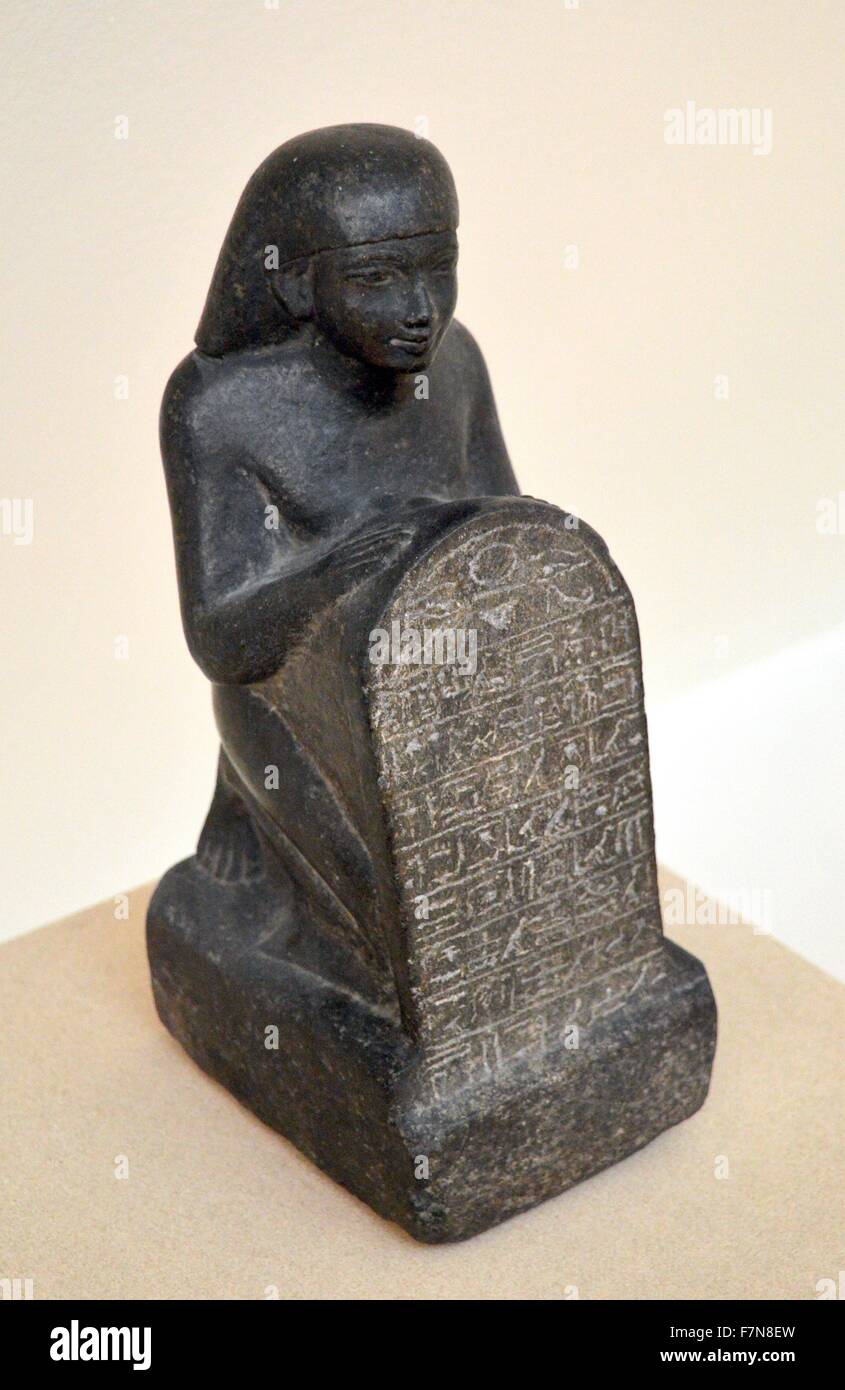 Granite statue of Ahmes 'Scribe of accounts of gold'. Dated 1550 B.C. Stock Photohttps://www.alamy.com/image-license-details/?v=1https://www.alamy.com/stock-photo-granite-statue-of-ahmes-scribe-of-accounts-of-gold-dated-1550-bc-90822113.html
Granite statue of Ahmes 'Scribe of accounts of gold'. Dated 1550 B.C. Stock Photohttps://www.alamy.com/image-license-details/?v=1https://www.alamy.com/stock-photo-granite-statue-of-ahmes-scribe-of-accounts-of-gold-dated-1550-bc-90822113.htmlRMF7N8EW–Granite statue of Ahmes 'Scribe of accounts of gold'. Dated 1550 B.C.
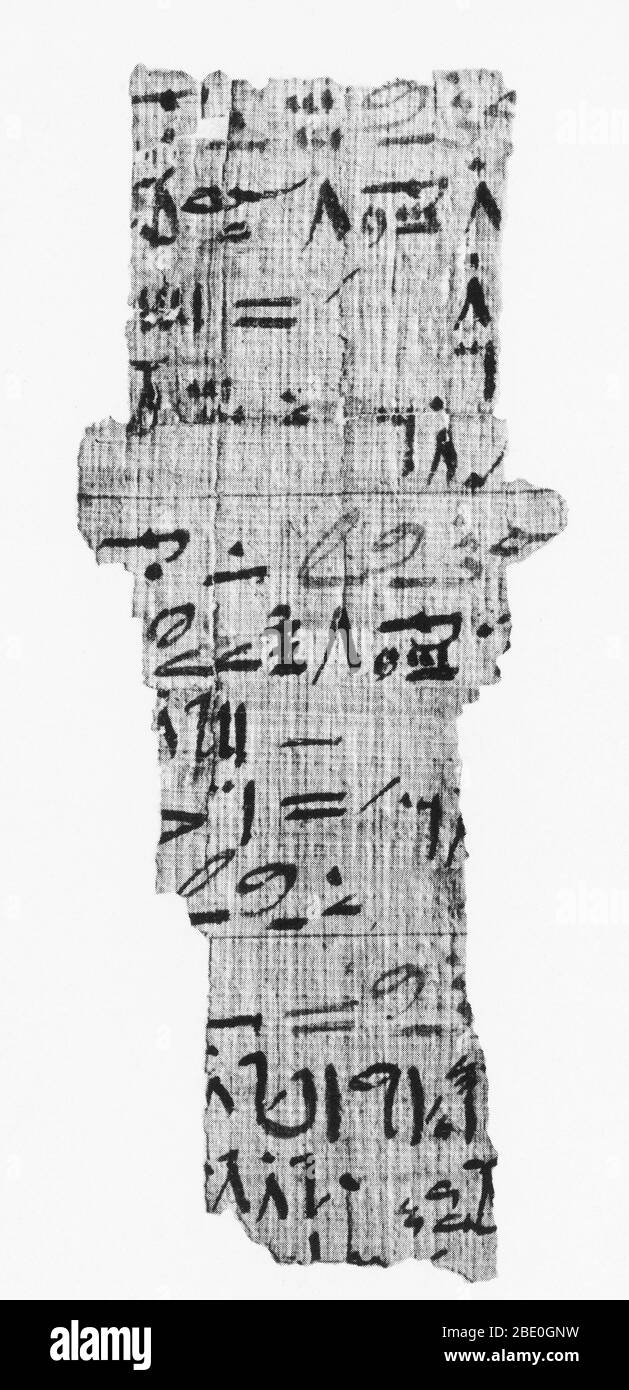 The Rhind papyrus, also known as the Ahmes papyrus, dating to around 1650 BC in Egypt, is one of the earliest mathematical records to be found on a paper-like substance. It is a fragment from a reference book of everyday mathematics used by ancient Egyptians. Stock Photohttps://www.alamy.com/image-license-details/?v=1https://www.alamy.com/the-rhind-papyrus-also-known-as-the-ahmes-papyrus-dating-to-around-1650-bc-in-egypt-is-one-of-the-earliest-mathematical-records-to-be-found-on-a-paper-like-substance-it-is-a-fragment-from-a-reference-book-of-everyday-mathematics-used-by-ancient-egyptians-image352825701.html
The Rhind papyrus, also known as the Ahmes papyrus, dating to around 1650 BC in Egypt, is one of the earliest mathematical records to be found on a paper-like substance. It is a fragment from a reference book of everyday mathematics used by ancient Egyptians. Stock Photohttps://www.alamy.com/image-license-details/?v=1https://www.alamy.com/the-rhind-papyrus-also-known-as-the-ahmes-papyrus-dating-to-around-1650-bc-in-egypt-is-one-of-the-earliest-mathematical-records-to-be-found-on-a-paper-like-substance-it-is-a-fragment-from-a-reference-book-of-everyday-mathematics-used-by-ancient-egyptians-image352825701.htmlRM2BE0GNW–The Rhind papyrus, also known as the Ahmes papyrus, dating to around 1650 BC in Egypt, is one of the earliest mathematical records to be found on a paper-like substance. It is a fragment from a reference book of everyday mathematics used by ancient Egyptians.
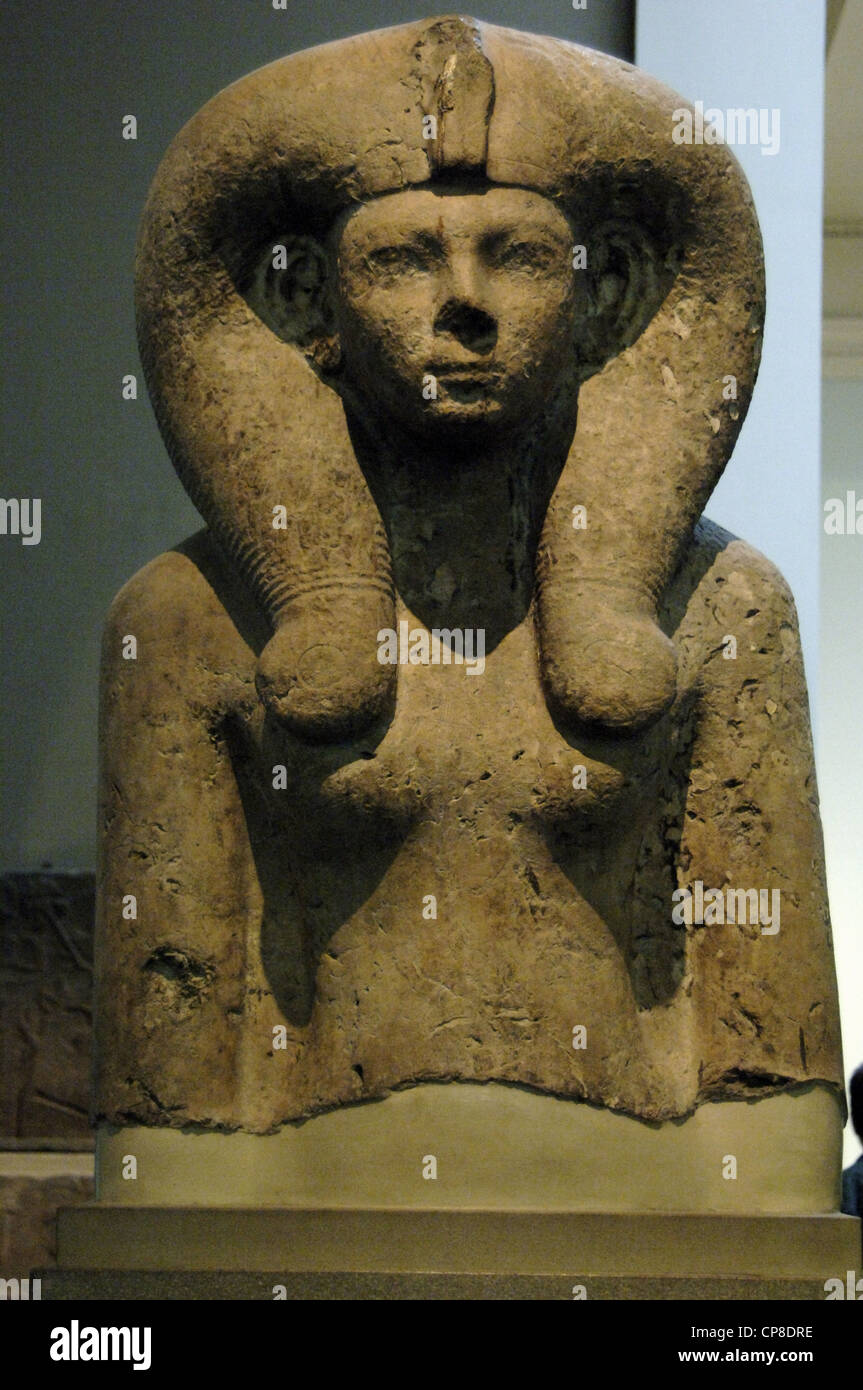 Limestone bust of Queen Ahmes-Merytamun, wife of Amenhotep I. Depicted with Hathor-wig. 1550 BC. New Kingdom. 18th Dynasty. Stock Photohttps://www.alamy.com/image-license-details/?v=1https://www.alamy.com/stock-photo-limestone-bust-of-queen-ahmes-merytamun-wife-of-amenhotep-i-depicted-48129634.html
Limestone bust of Queen Ahmes-Merytamun, wife of Amenhotep I. Depicted with Hathor-wig. 1550 BC. New Kingdom. 18th Dynasty. Stock Photohttps://www.alamy.com/image-license-details/?v=1https://www.alamy.com/stock-photo-limestone-bust-of-queen-ahmes-merytamun-wife-of-amenhotep-i-depicted-48129634.htmlRMCP8DRE–Limestone bust of Queen Ahmes-Merytamun, wife of Amenhotep I. Depicted with Hathor-wig. 1550 BC. New Kingdom. 18th Dynasty.
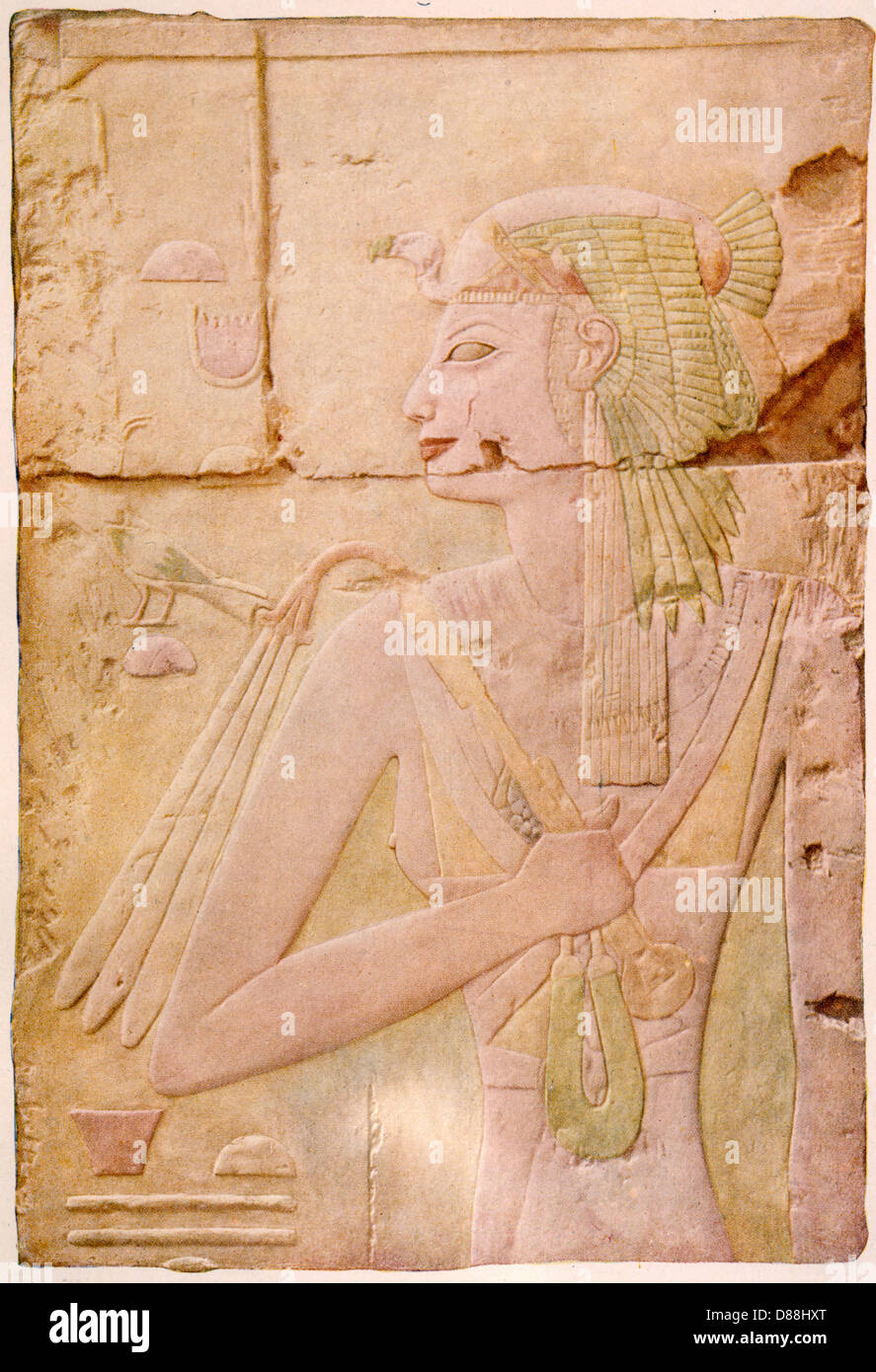 Ahmes Egypt Mackenzie Stock Photohttps://www.alamy.com/image-license-details/?v=1https://www.alamy.com/stock-photo-ahmes-egypt-mackenzie-56738048.html
Ahmes Egypt Mackenzie Stock Photohttps://www.alamy.com/image-license-details/?v=1https://www.alamy.com/stock-photo-ahmes-egypt-mackenzie-56738048.htmlRMD88HXT–Ahmes Egypt Mackenzie
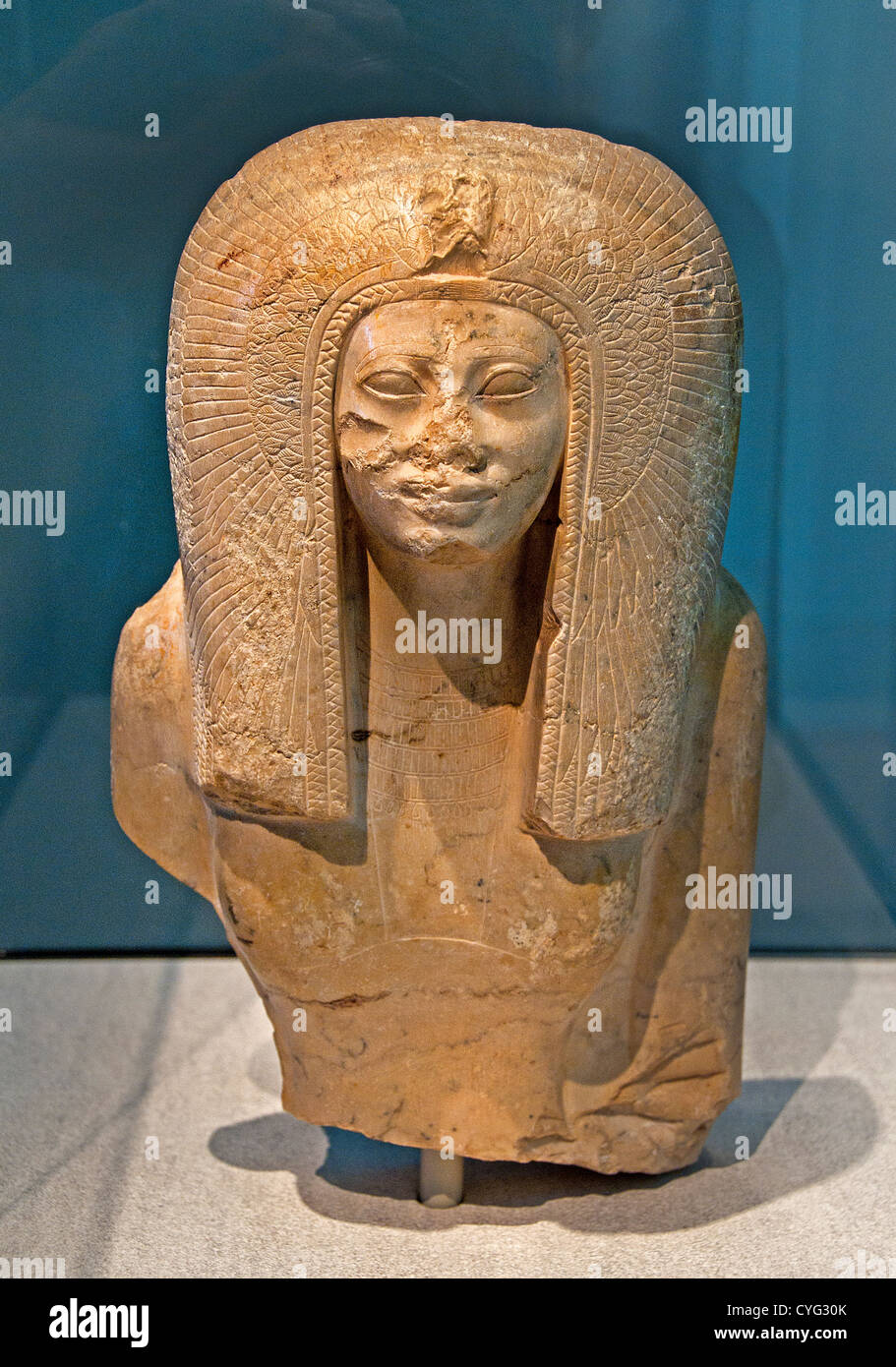 Queen Ahmes Nefertari mother of Amenhotep , New Kingdom 1550–1525 BC Egypt Thebes el Asasif Courtyard 28 cm Egypt Stock Photohttps://www.alamy.com/image-license-details/?v=1https://www.alamy.com/stock-photo-queen-ahmes-nefertari-mother-of-amenhotep-new-kingdom-15501525-bc-51370051.html
Queen Ahmes Nefertari mother of Amenhotep , New Kingdom 1550–1525 BC Egypt Thebes el Asasif Courtyard 28 cm Egypt Stock Photohttps://www.alamy.com/image-license-details/?v=1https://www.alamy.com/stock-photo-queen-ahmes-nefertari-mother-of-amenhotep-new-kingdom-15501525-bc-51370051.htmlRMCYG30K–Queen Ahmes Nefertari mother of Amenhotep , New Kingdom 1550–1525 BC Egypt Thebes el Asasif Courtyard 28 cm Egypt
 Sarcophagus of Ahmes, Rijksmuseum van Oudheden, Leiden, Netherlands Stock Photohttps://www.alamy.com/image-license-details/?v=1https://www.alamy.com/stock-photo-sarcophagus-of-ahmes-rijksmuseum-van-oudheden-leiden-netherlands-29909574.html
Sarcophagus of Ahmes, Rijksmuseum van Oudheden, Leiden, Netherlands Stock Photohttps://www.alamy.com/image-license-details/?v=1https://www.alamy.com/stock-photo-sarcophagus-of-ahmes-rijksmuseum-van-oudheden-leiden-netherlands-29909574.htmlRMBMJDY2–Sarcophagus of Ahmes, Rijksmuseum van Oudheden, Leiden, Netherlands
 HOTEL LORRAINE, AHMES FARISS STREET AND MOHAMMED DIOURI BOULEVARD, CASABLANCA, MOROCCO, AFRICA Stock Photohttps://www.alamy.com/image-license-details/?v=1https://www.alamy.com/hotel-lorraine-ahmes-fariss-street-and-mohammed-diouri-boulevard-casablanca-image64928412.html
HOTEL LORRAINE, AHMES FARISS STREET AND MOHAMMED DIOURI BOULEVARD, CASABLANCA, MOROCCO, AFRICA Stock Photohttps://www.alamy.com/image-license-details/?v=1https://www.alamy.com/hotel-lorraine-ahmes-fariss-street-and-mohammed-diouri-boulevard-casablanca-image64928412.htmlRMDNHMRT–HOTEL LORRAINE, AHMES FARISS STREET AND MOHAMMED DIOURI BOULEVARD, CASABLANCA, MOROCCO, AFRICA
 Egyptian Wood Sculpture of the deified queen Ahmes Nefertari, 1279-1213 BC 19th Dynasty, found Deir el Medina, acacia. Louvre Museum inv N 470. Th Stock Photohttps://www.alamy.com/image-license-details/?v=1https://www.alamy.com/egyptian-wood-sculpture-of-the-deified-queen-ahmes-nefertari-1279-1213-bc-19th-dynasty-found-deir-el-medina-acacia-louvre-museum-inv-n-470-th-image450455181.html
Egyptian Wood Sculpture of the deified queen Ahmes Nefertari, 1279-1213 BC 19th Dynasty, found Deir el Medina, acacia. Louvre Museum inv N 470. Th Stock Photohttps://www.alamy.com/image-license-details/?v=1https://www.alamy.com/egyptian-wood-sculpture-of-the-deified-queen-ahmes-nefertari-1279-1213-bc-19th-dynasty-found-deir-el-medina-acacia-louvre-museum-inv-n-470-th-image450455181.htmlRF2H4T051–Egyptian Wood Sculpture of the deified queen Ahmes Nefertari, 1279-1213 BC 19th Dynasty, found Deir el Medina, acacia. Louvre Museum inv N 470. Th
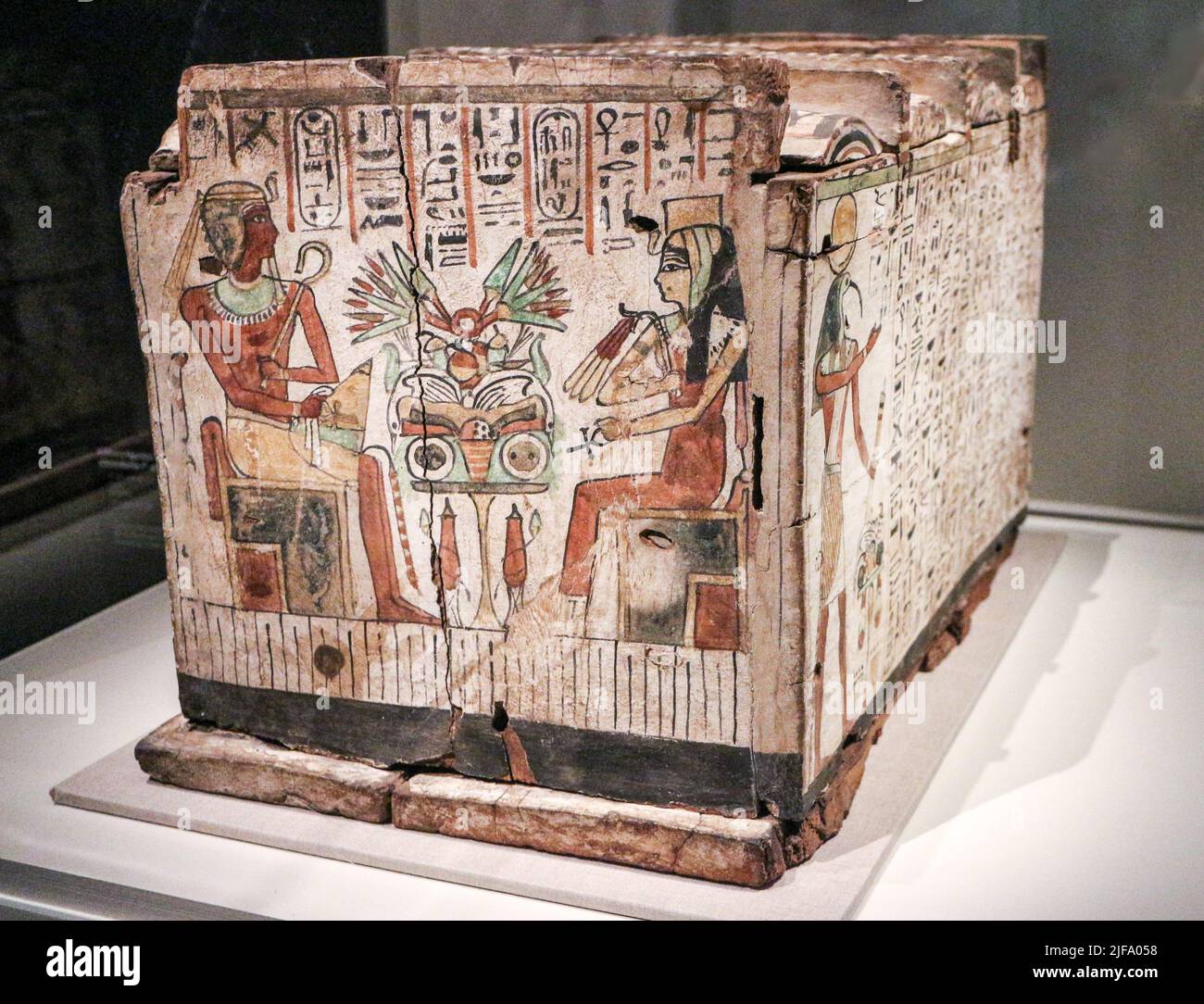 MUCEM Marseille : Pharaons Super Stars : Funerary box with portraits of AMENHOTEP and AHMES NEFERTARY painted wood Stock Photohttps://www.alamy.com/image-license-details/?v=1https://www.alamy.com/mucem-marseille-pharaons-super-stars-funerary-box-with-portraits-of-amenhotep-and-ahmes-nefertary-painted-wood-image474119444.html
MUCEM Marseille : Pharaons Super Stars : Funerary box with portraits of AMENHOTEP and AHMES NEFERTARY painted wood Stock Photohttps://www.alamy.com/image-license-details/?v=1https://www.alamy.com/mucem-marseille-pharaons-super-stars-funerary-box-with-portraits-of-amenhotep-and-ahmes-nefertary-painted-wood-image474119444.htmlRM2JFA058–MUCEM Marseille : Pharaons Super Stars : Funerary box with portraits of AMENHOTEP and AHMES NEFERTARY painted wood
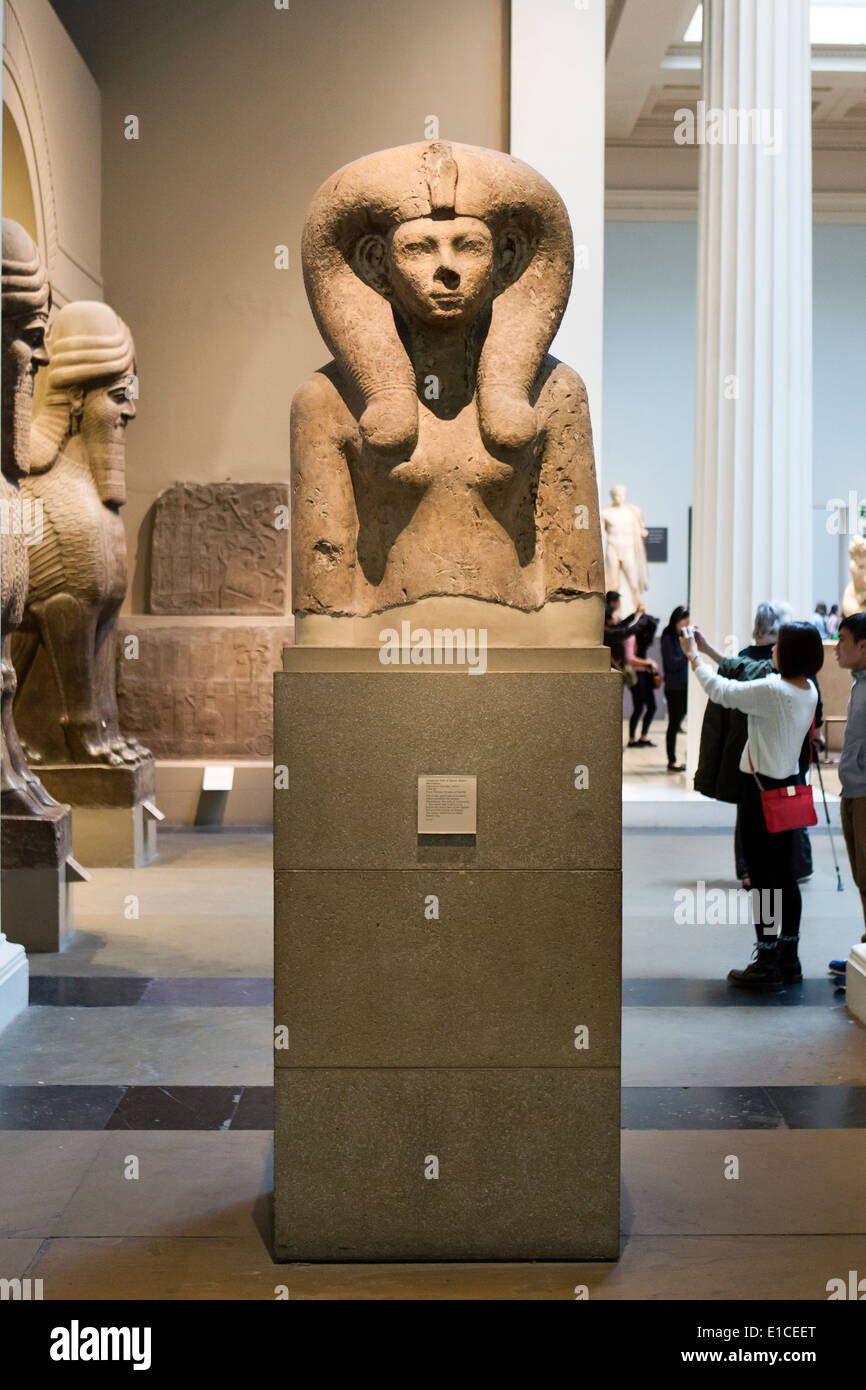 Bust of Queen Ahmes-Merytamun wearing a Hathor Wig 18 dynasty from Temple of Karnak Thebes, room 4 British Museum, London, UK. Stock Photohttps://www.alamy.com/image-license-details/?v=1https://www.alamy.com/bust-of-queen-ahmes-merytamun-wearing-a-hathor-wig-18-dynasty-from-image69730944.html
Bust of Queen Ahmes-Merytamun wearing a Hathor Wig 18 dynasty from Temple of Karnak Thebes, room 4 British Museum, London, UK. Stock Photohttps://www.alamy.com/image-license-details/?v=1https://www.alamy.com/bust-of-queen-ahmes-merytamun-wearing-a-hathor-wig-18-dynasty-from-image69730944.htmlRME1CEET–Bust of Queen Ahmes-Merytamun wearing a Hathor Wig 18 dynasty from Temple of Karnak Thebes, room 4 British Museum, London, UK.
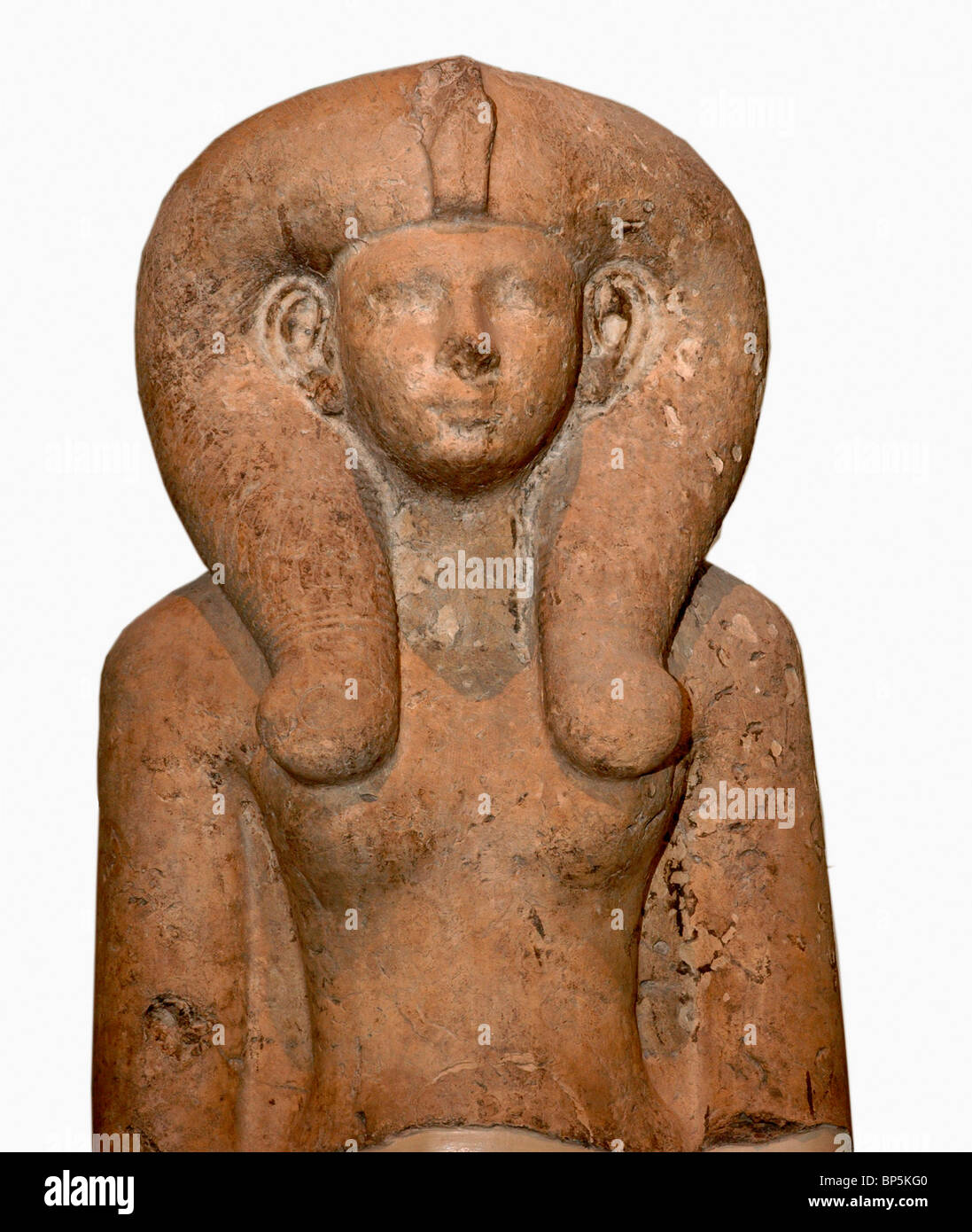 5213. QUEEN AHMES MEKYTAMUN, 15TH. DYNASTY, 1550 BC Stock Photohttps://www.alamy.com/image-license-details/?v=1https://www.alamy.com/stock-photo-5213-queen-ahmes-mekytamun-15th-dynasty-1550-bc-30857904.html
5213. QUEEN AHMES MEKYTAMUN, 15TH. DYNASTY, 1550 BC Stock Photohttps://www.alamy.com/image-license-details/?v=1https://www.alamy.com/stock-photo-5213-queen-ahmes-mekytamun-15th-dynasty-1550-bc-30857904.htmlRMBP5KG0–5213. QUEEN AHMES MEKYTAMUN, 15TH. DYNASTY, 1550 BC
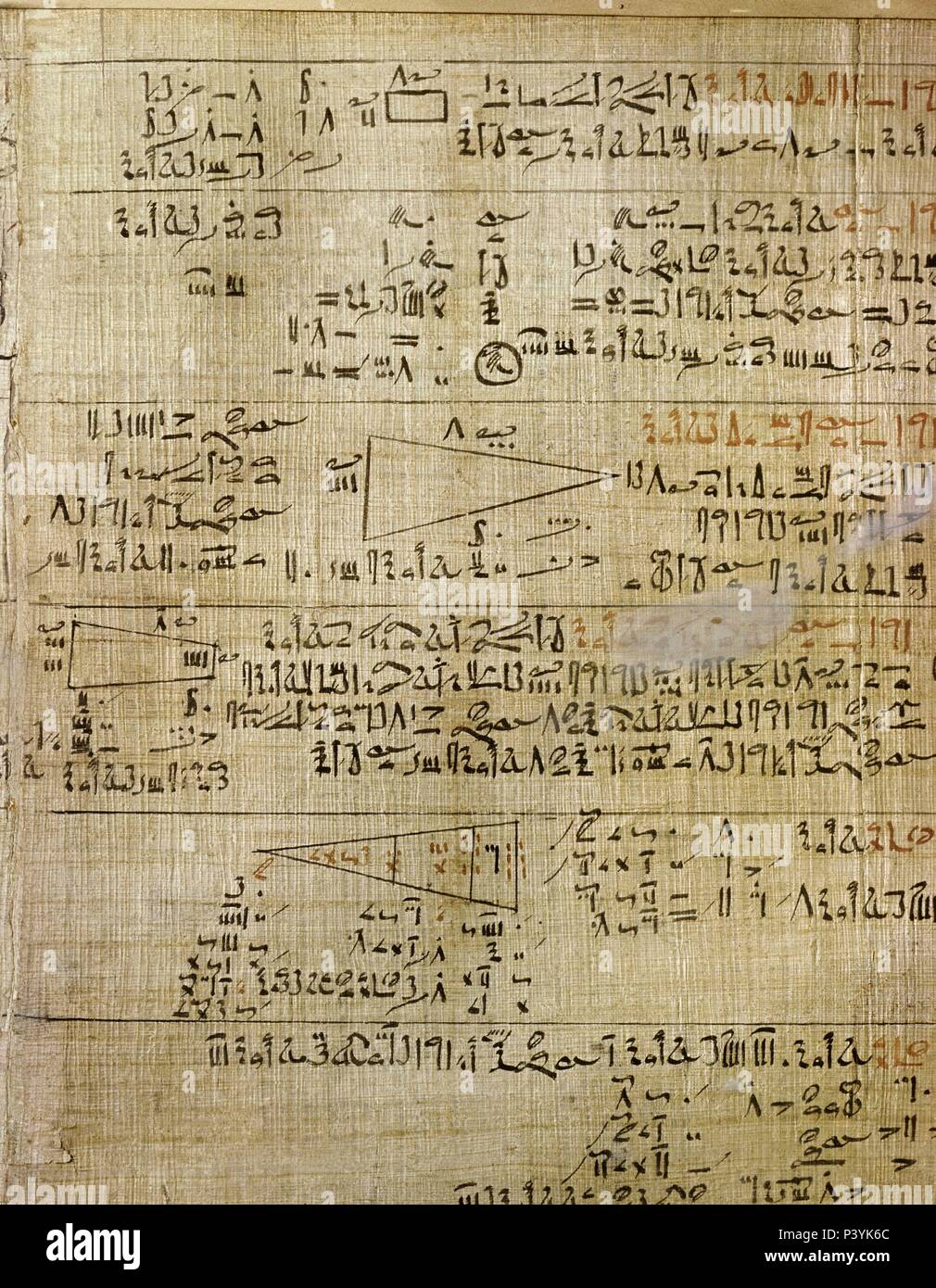 Egyptian art. The Rhind Mathematical Papyrus. 1700 BC. Luxor. London, British Museum. Author: AHMES. Location: BRITISH MUSEUM, LONDON, ENGLAND. Stock Photohttps://www.alamy.com/image-license-details/?v=1https://www.alamy.com/egyptian-art-the-rhind-mathematical-papyrus-1700-bc-luxor-london-british-museum-author-ahmes-location-british-museum-london-england-image208976164.html
Egyptian art. The Rhind Mathematical Papyrus. 1700 BC. Luxor. London, British Museum. Author: AHMES. Location: BRITISH MUSEUM, LONDON, ENGLAND. Stock Photohttps://www.alamy.com/image-license-details/?v=1https://www.alamy.com/egyptian-art-the-rhind-mathematical-papyrus-1700-bc-luxor-london-british-museum-author-ahmes-location-british-museum-london-england-image208976164.htmlRMP3YK6C–Egyptian art. The Rhind Mathematical Papyrus. 1700 BC. Luxor. London, British Museum. Author: AHMES. Location: BRITISH MUSEUM, LONDON, ENGLAND.
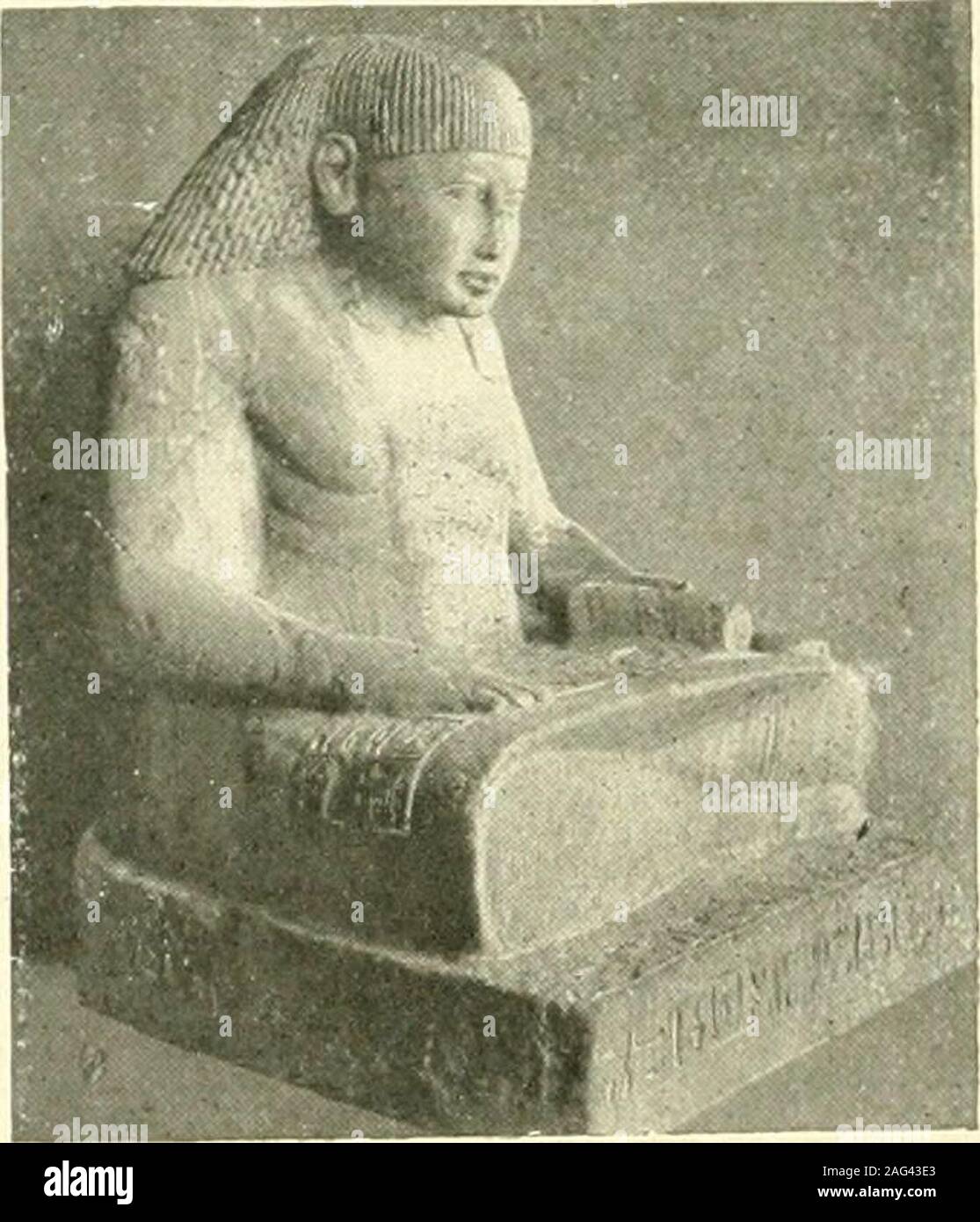 . Égypte. s révèle lintroductrice du typefacial qui prévalut chez les Ahmes-sides pendant trois générations, lenez busqué, les larges yeux a fleurde tête, la bouche charnue, la faceronde. La perruque pesante qui luiemboite la tête nétait pas pour faciliter la tâche du sculpteur : il en a pourtant dissimulé le mauvais effet. LeThoutmôsis III a la physionomie de sa mère, mais en moins dur (fig. 310). Il est de schiste fin, et nulle gravure ne rend justice à la délicatesse de son mo-delé : le jeu des muscles y est noté discrètement, avec une félicité extraordinaire, et les ombres imperceptibles q Stock Photohttps://www.alamy.com/image-license-details/?v=1https://www.alamy.com/gypte-s-rvle-lintroductrice-du-typefacial-qui-prvalut-chez-les-ahmes-sides-pendant-trois-gnrations-lenez-busqu-les-larges-yeux-a-fleurde-tte-la-bouche-charnue-la-faceronde-la-perruque-pesante-qui-luiemboite-la-tte-ntait-pas-pour-faciliter-la-tche-du-sculpteur-il-en-a-pourtant-dissimul-le-mauvais-effet-lethoutmsis-iii-a-la-physionomie-de-sa-mre-mais-en-moins-dur-fig-310-il-est-de-schiste-fin-et-nulle-gravure-ne-rend-justice-la-dlicatesse-de-son-mo-del-le-jeu-des-muscles-y-est-not-discrtement-avec-une-flicit-extraordinaire-et-les-ombres-imperceptibles-q-image336922043.html
. Égypte. s révèle lintroductrice du typefacial qui prévalut chez les Ahmes-sides pendant trois générations, lenez busqué, les larges yeux a fleurde tête, la bouche charnue, la faceronde. La perruque pesante qui luiemboite la tête nétait pas pour faciliter la tâche du sculpteur : il en a pourtant dissimulé le mauvais effet. LeThoutmôsis III a la physionomie de sa mère, mais en moins dur (fig. 310). Il est de schiste fin, et nulle gravure ne rend justice à la délicatesse de son mo-delé : le jeu des muscles y est noté discrètement, avec une félicité extraordinaire, et les ombres imperceptibles q Stock Photohttps://www.alamy.com/image-license-details/?v=1https://www.alamy.com/gypte-s-rvle-lintroductrice-du-typefacial-qui-prvalut-chez-les-ahmes-sides-pendant-trois-gnrations-lenez-busqu-les-larges-yeux-a-fleurde-tte-la-bouche-charnue-la-faceronde-la-perruque-pesante-qui-luiemboite-la-tte-ntait-pas-pour-faciliter-la-tche-du-sculpteur-il-en-a-pourtant-dissimul-le-mauvais-effet-lethoutmsis-iii-a-la-physionomie-de-sa-mre-mais-en-moins-dur-fig-310-il-est-de-schiste-fin-et-nulle-gravure-ne-rend-justice-la-dlicatesse-de-son-mo-del-le-jeu-des-muscles-y-est-not-discrtement-avec-une-flicit-extraordinaire-et-les-ombres-imperceptibles-q-image336922043.htmlRM2AG43E3–. Égypte. s révèle lintroductrice du typefacial qui prévalut chez les Ahmes-sides pendant trois générations, lenez busqué, les larges yeux a fleurde tête, la bouche charnue, la faceronde. La perruque pesante qui luiemboite la tête nétait pas pour faciliter la tâche du sculpteur : il en a pourtant dissimulé le mauvais effet. LeThoutmôsis III a la physionomie de sa mère, mais en moins dur (fig. 310). Il est de schiste fin, et nulle gravure ne rend justice à la délicatesse de son mo-delé : le jeu des muscles y est noté discrètement, avec une félicité extraordinaire, et les ombres imperceptibles q
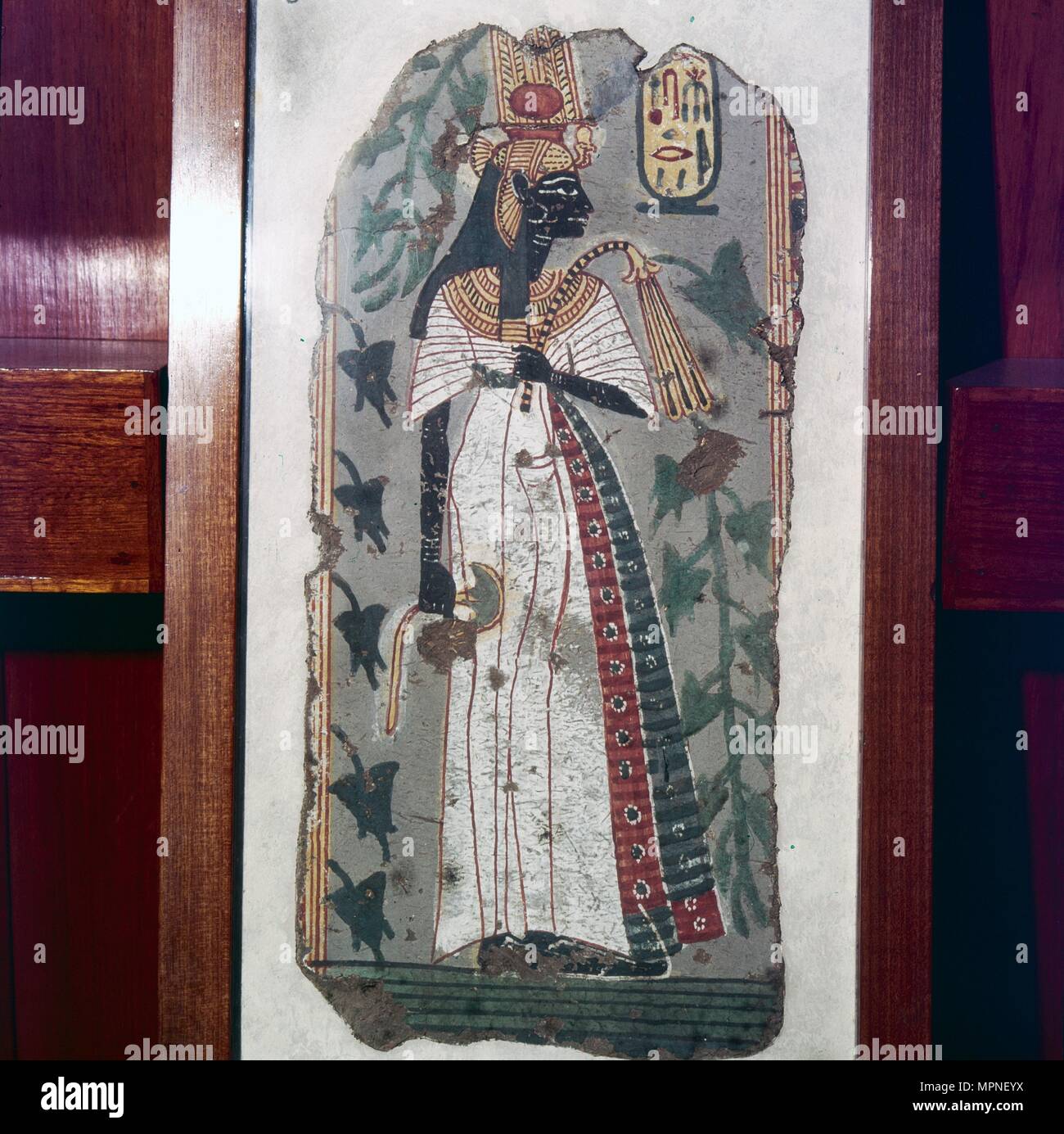 Ahmes-Nefertari, Wallpainting from a tomb of Thebes c1200BC Artist: Unknown. Stock Photohttps://www.alamy.com/image-license-details/?v=1https://www.alamy.com/ahmes-nefertari-wallpainting-from-a-tomb-of-thebes-c1200bc-artist-unknown-image186098862.html
Ahmes-Nefertari, Wallpainting from a tomb of Thebes c1200BC Artist: Unknown. Stock Photohttps://www.alamy.com/image-license-details/?v=1https://www.alamy.com/ahmes-nefertari-wallpainting-from-a-tomb-of-thebes-c1200bc-artist-unknown-image186098862.htmlRMMPNEYX–Ahmes-Nefertari, Wallpainting from a tomb of Thebes c1200BC Artist: Unknown.
 Ahmes nefertari2-2 Stock Photohttps://www.alamy.com/image-license-details/?v=1https://www.alamy.com/stock-photo-ahmes-nefertari2-2-139520651.html
Ahmes nefertari2-2 Stock Photohttps://www.alamy.com/image-license-details/?v=1https://www.alamy.com/stock-photo-ahmes-nefertari2-2-139520651.htmlRMJ2YM0B–Ahmes nefertari2-2
 30 Ahmès Nofrétari Stock Photohttps://www.alamy.com/image-license-details/?v=1https://www.alamy.com/30-ahms-nofrtari-image184880989.html
30 Ahmès Nofrétari Stock Photohttps://www.alamy.com/image-license-details/?v=1https://www.alamy.com/30-ahms-nofrtari-image184880989.htmlRMMMP1GD–30 Ahmès Nofrétari
 Momia tutmosis I o Ahmes sapair Stock Photohttps://www.alamy.com/image-license-details/?v=1https://www.alamy.com/stock-photo-momia-tutmosis-i-o-ahmes-sapair-132427949.html
Momia tutmosis I o Ahmes sapair Stock Photohttps://www.alamy.com/image-license-details/?v=1https://www.alamy.com/stock-photo-momia-tutmosis-i-o-ahmes-sapair-132427949.htmlRMHKCH5H–Momia tutmosis I o Ahmes sapair
 Momia tutmosis I o Ahmes sapair. Stock Photohttps://www.alamy.com/image-license-details/?v=1https://www.alamy.com/momia-tutmosis-i-o-ahmes-sapair-image401277803.html
Momia tutmosis I o Ahmes sapair. Stock Photohttps://www.alamy.com/image-license-details/?v=1https://www.alamy.com/momia-tutmosis-i-o-ahmes-sapair-image401277803.htmlRM2E8RNX3–Momia tutmosis I o Ahmes sapair.
 Quast Ferdinand von (1807-1877), labeled stone memorial in Thebes (without dat.): View of a stone with an inscription from Queen Ahmes Notertet. Pencil on transparent, 38.2 x 25.9 cm (including scan edges) Quast Ferdinand von (1807-1877): Beschriftete Steindenkmäler, Theben-West Stock Photohttps://www.alamy.com/image-license-details/?v=1https://www.alamy.com/quast-ferdinand-von-1807-1877-labeled-stone-memorial-in-thebes-without-dat-view-of-a-stone-with-an-inscription-from-queen-ahmes-notertet-pencil-on-transparent-382-x-259-cm-including-scan-edges-quast-ferdinand-von-1807-1877-beschriftete-steindenkmler-theben-west-image477544903.html
Quast Ferdinand von (1807-1877), labeled stone memorial in Thebes (without dat.): View of a stone with an inscription from Queen Ahmes Notertet. Pencil on transparent, 38.2 x 25.9 cm (including scan edges) Quast Ferdinand von (1807-1877): Beschriftete Steindenkmäler, Theben-West Stock Photohttps://www.alamy.com/image-license-details/?v=1https://www.alamy.com/quast-ferdinand-von-1807-1877-labeled-stone-memorial-in-thebes-without-dat-view-of-a-stone-with-an-inscription-from-queen-ahmes-notertet-pencil-on-transparent-382-x-259-cm-including-scan-edges-quast-ferdinand-von-1807-1877-beschriftete-steindenkmler-theben-west-image477544903.htmlRM2JMX1B3–Quast Ferdinand von (1807-1877), labeled stone memorial in Thebes (without dat.): View of a stone with an inscription from Queen Ahmes Notertet. Pencil on transparent, 38.2 x 25.9 cm (including scan edges) Quast Ferdinand von (1807-1877): Beschriftete Steindenkmäler, Theben-West
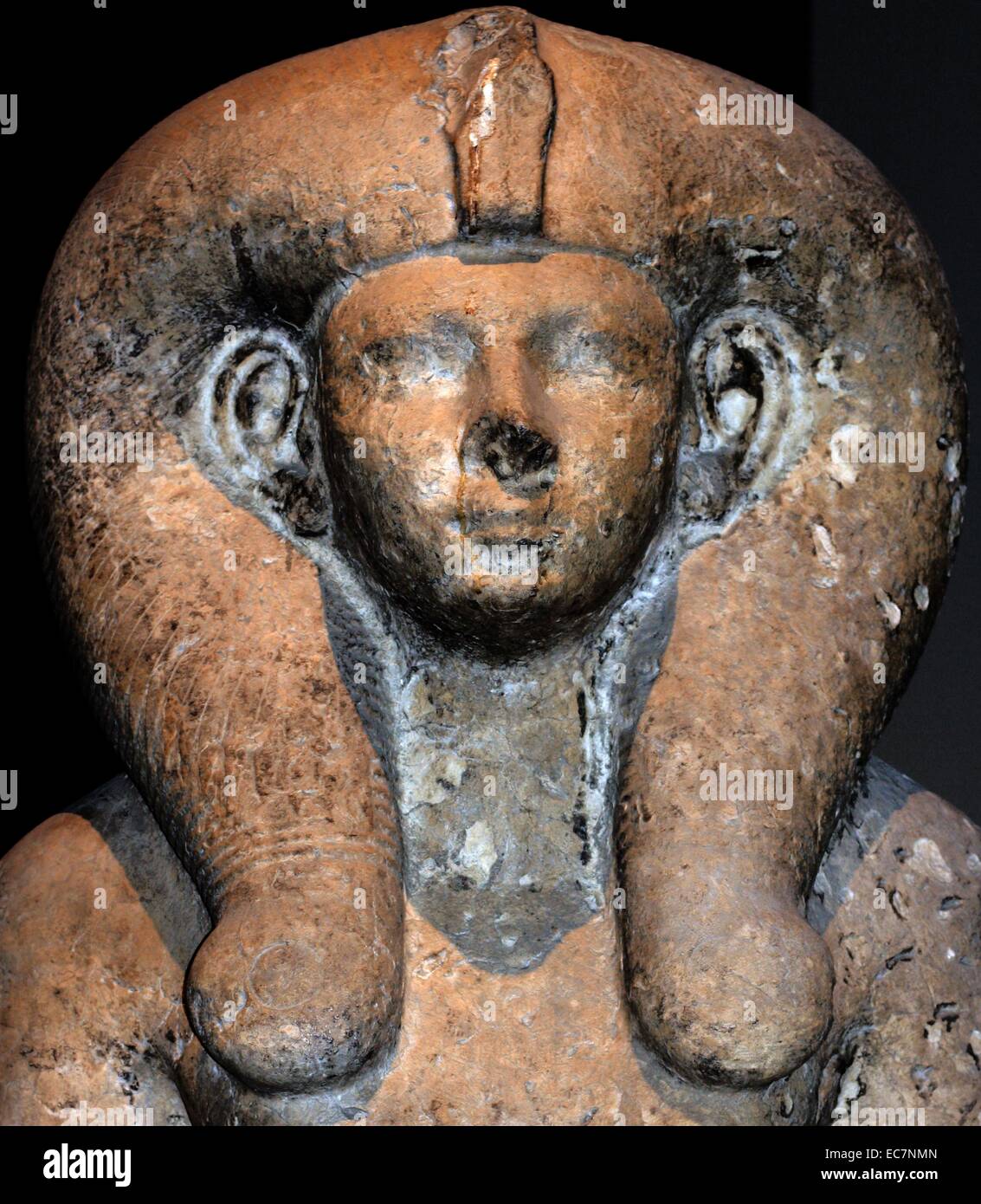 Limestone bust of Queen Ahmes-Merytamun. 18th Dynasty, about 1550 BC from Thebes, Temple of Karnak. This is the upper half of a seated statue inscribed for Ahmes-Merytamum, the wife of Amenophis. Stock Photohttps://www.alamy.com/image-license-details/?v=1https://www.alamy.com/stock-photo-limestone-bust-of-queen-ahmes-merytamun-18th-dynasty-about-1550-bc-76388053.html
Limestone bust of Queen Ahmes-Merytamun. 18th Dynasty, about 1550 BC from Thebes, Temple of Karnak. This is the upper half of a seated statue inscribed for Ahmes-Merytamum, the wife of Amenophis. Stock Photohttps://www.alamy.com/image-license-details/?v=1https://www.alamy.com/stock-photo-limestone-bust-of-queen-ahmes-merytamun-18th-dynasty-about-1550-bc-76388053.htmlRMEC7NMN–Limestone bust of Queen Ahmes-Merytamun. 18th Dynasty, about 1550 BC from Thebes, Temple of Karnak. This is the upper half of a seated statue inscribed for Ahmes-Merytamum, the wife of Amenophis.
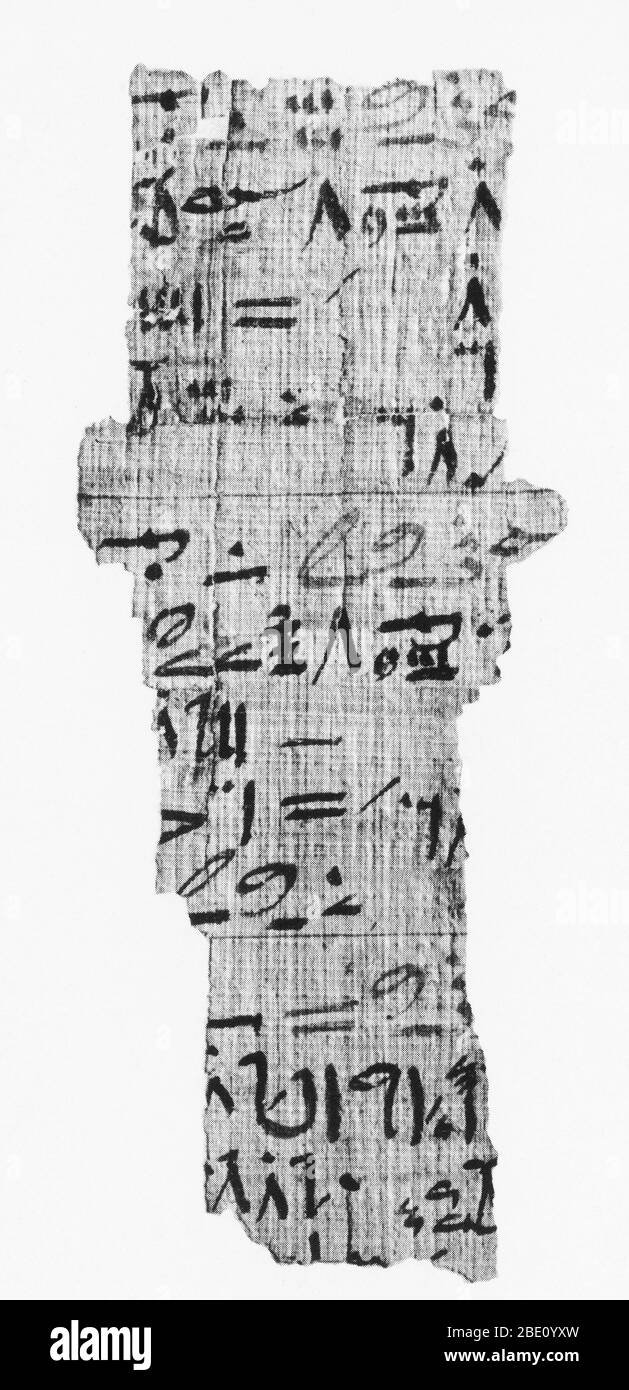 The Rhind papyrus, also known as the Ahmes papyrus, dating to around 1650 BC in Egypt, is one of the earliest mathematical records to be found on a paper-like substance. It is a fragment from a reference book of everyday mathematics used by ancient Egyptians. Stock Photohttps://www.alamy.com/image-license-details/?v=1https://www.alamy.com/the-rhind-papyrus-also-known-as-the-ahmes-papyrus-dating-to-around-1650-bc-in-egypt-is-one-of-the-earliest-mathematical-records-to-be-found-on-a-paper-like-substance-it-is-a-fragment-from-a-reference-book-of-everyday-mathematics-used-by-ancient-egyptians-image352834465.html
The Rhind papyrus, also known as the Ahmes papyrus, dating to around 1650 BC in Egypt, is one of the earliest mathematical records to be found on a paper-like substance. It is a fragment from a reference book of everyday mathematics used by ancient Egyptians. Stock Photohttps://www.alamy.com/image-license-details/?v=1https://www.alamy.com/the-rhind-papyrus-also-known-as-the-ahmes-papyrus-dating-to-around-1650-bc-in-egypt-is-one-of-the-earliest-mathematical-records-to-be-found-on-a-paper-like-substance-it-is-a-fragment-from-a-reference-book-of-everyday-mathematics-used-by-ancient-egyptians-image352834465.htmlRM2BE0YXW–The Rhind papyrus, also known as the Ahmes papyrus, dating to around 1650 BC in Egypt, is one of the earliest mathematical records to be found on a paper-like substance. It is a fragment from a reference book of everyday mathematics used by ancient Egyptians.
 Queen ahmes merytamun ahmesmerytamun eighteenth Dynasty 1550 BC thebes temple of karnak Egypt Egyptian Stock Photohttps://www.alamy.com/image-license-details/?v=1https://www.alamy.com/stock-photo-queen-ahmes-merytamun-ahmesmerytamun-eighteenth-dynasty-1550-bc-thebes-20014186.html
Queen ahmes merytamun ahmesmerytamun eighteenth Dynasty 1550 BC thebes temple of karnak Egypt Egyptian Stock Photohttps://www.alamy.com/image-license-details/?v=1https://www.alamy.com/stock-photo-queen-ahmes-merytamun-ahmesmerytamun-eighteenth-dynasty-1550-bc-thebes-20014186.htmlRMB4FM8A–Queen ahmes merytamun ahmesmerytamun eighteenth Dynasty 1550 BC thebes temple of karnak Egypt Egyptian
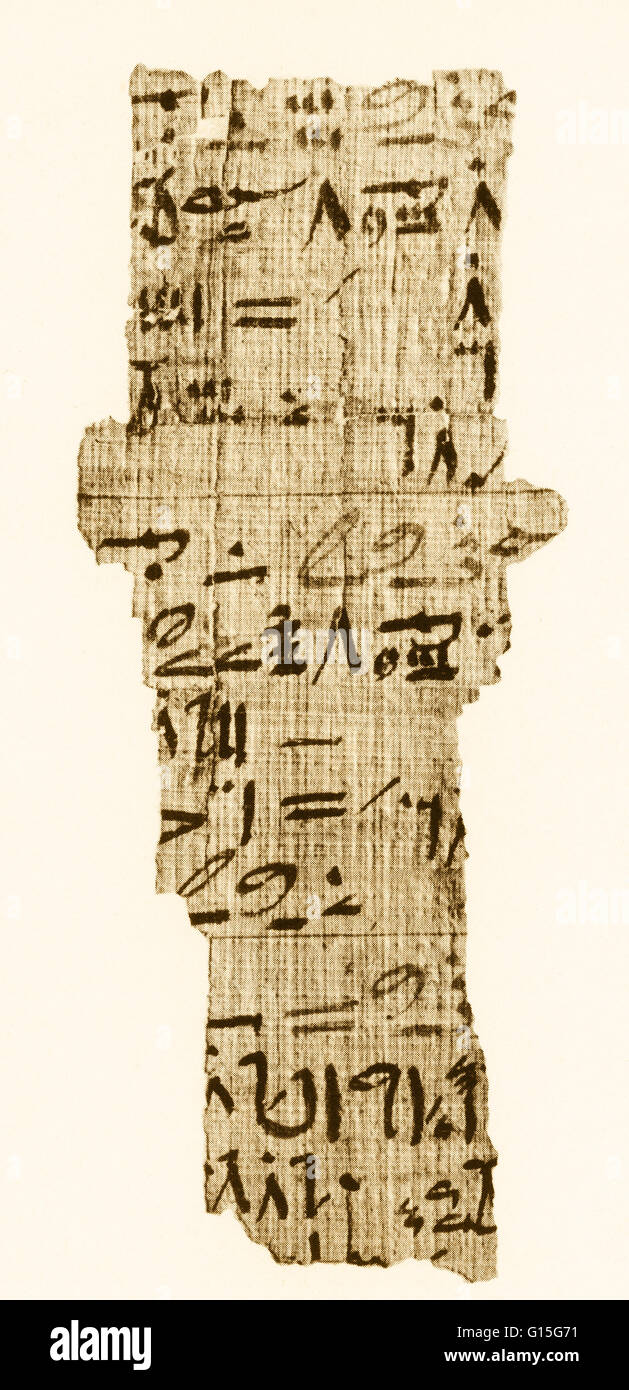 The Rhind papyrus, also known as the Ahmes papyrus, dating to around 1650 BC in Egypt, is one of the earliest mathematical records to be found on a paper-like substance. It is a fragment from a reference book of everyday mathematics used by ancient Egypti Stock Photohttps://www.alamy.com/image-license-details/?v=1https://www.alamy.com/stock-photo-the-rhind-papyrus-also-known-as-the-ahmes-papyrus-dating-to-around-103999365.html
The Rhind papyrus, also known as the Ahmes papyrus, dating to around 1650 BC in Egypt, is one of the earliest mathematical records to be found on a paper-like substance. It is a fragment from a reference book of everyday mathematics used by ancient Egypti Stock Photohttps://www.alamy.com/image-license-details/?v=1https://www.alamy.com/stock-photo-the-rhind-papyrus-also-known-as-the-ahmes-papyrus-dating-to-around-103999365.htmlRMG15G71–The Rhind papyrus, also known as the Ahmes papyrus, dating to around 1650 BC in Egypt, is one of the earliest mathematical records to be found on a paper-like substance. It is a fragment from a reference book of everyday mathematics used by ancient Egypti
 Egypt, Upper Egypt, Nile valley, El Kab, rock tomb of the soldier Ahmes, son of Abana, decorative motifs Stock Photohttps://www.alamy.com/image-license-details/?v=1https://www.alamy.com/egypt-upper-egypt-nile-valley-el-kab-rock-tomb-of-the-soldier-ahmes-son-of-abana-decorative-motifs-image456355483.html
Egypt, Upper Egypt, Nile valley, El Kab, rock tomb of the soldier Ahmes, son of Abana, decorative motifs Stock Photohttps://www.alamy.com/image-license-details/?v=1https://www.alamy.com/egypt-upper-egypt-nile-valley-el-kab-rock-tomb-of-the-soldier-ahmes-son-of-abana-decorative-motifs-image456355483.htmlRM2HECP23–Egypt, Upper Egypt, Nile valley, El Kab, rock tomb of the soldier Ahmes, son of Abana, decorative motifs
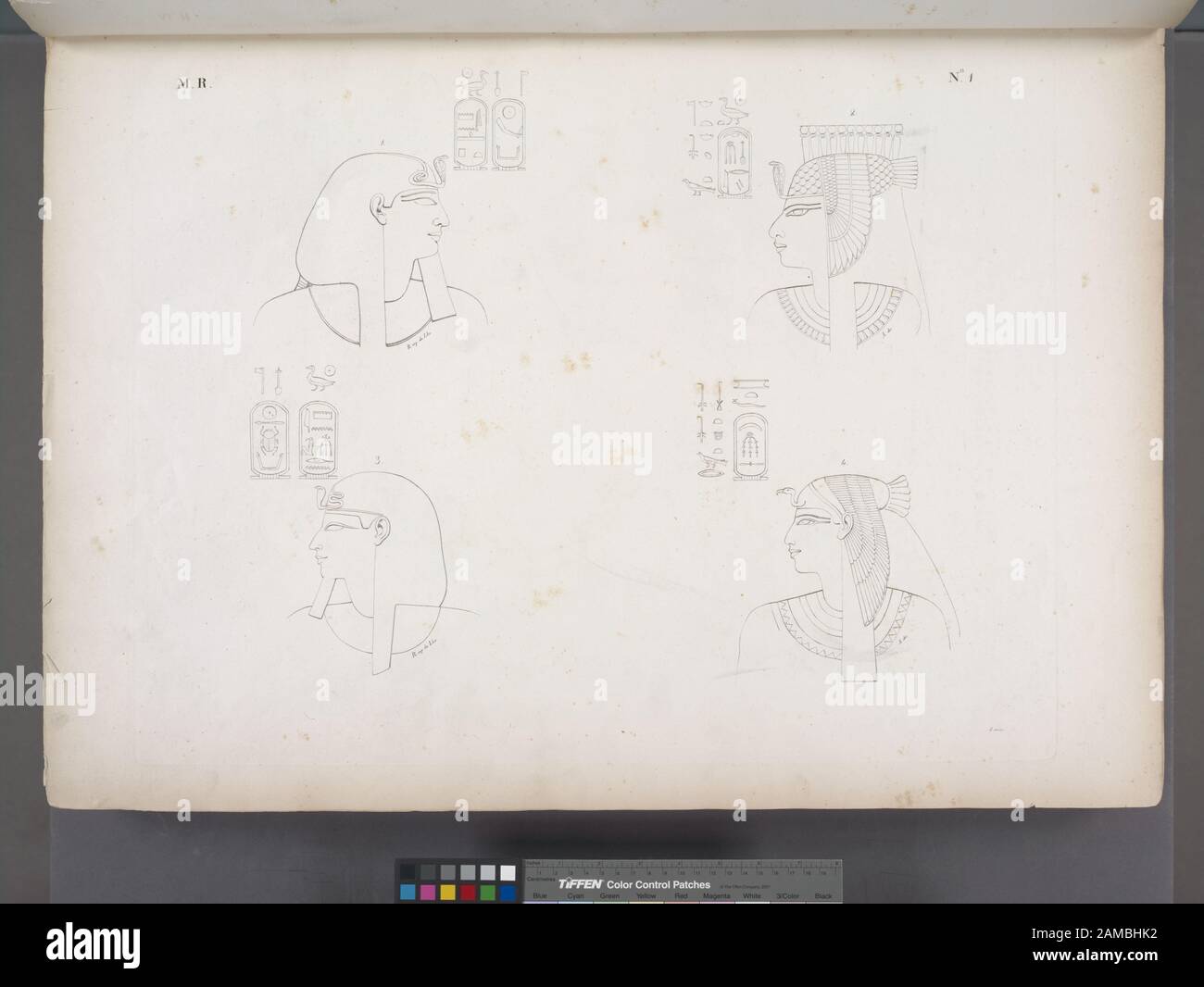 Ritratti e figure Fig1 Amenôf I (Amenhotep I) Fig2 Nofre-Ari (Ahmose-Nofretari) Fig 3 Thutmes I (Thutmose I) Fig 4 Aahmes (Ahmosi-) For Amenôf I read Aménophis I-er / L'Égypte antique illustrée de Champollion et Rosellini (Paris, 1993, P. 41). For Nofre-Ari read Ahmès-Néfertari / L'Égypte antique illustrée de Champollion et Rosellini (Paris, 1993, P. 41). For Thutmes I read Thoutmosis I-er /L'Égypte antique illustrée de Champollion et Rosellini (Paris, 1993, P. 41). For Aahmes read Ahmès / L'Égypte antique illustrée de Champollion et Rosellini (Paris, 1993, P. 41); Ritratti e figure. Fi Stock Photohttps://www.alamy.com/image-license-details/?v=1https://www.alamy.com/ritratti-e-figure-fig1-amenof-i-amenhotep-i-fig2-nofre-ari-ahmose-nofretari-fig-3-thutmes-i-thutmose-i-fig-4-aahmes-ahmosi-for-amenf-i-read-amnophis-i-er-lgypte-antique-illustre-de-champollion-et-rosellini-paris-1993-p-41-for-nofre-ari-read-ahms-nfertari-lgypte-antique-illustre-de-champollion-et-rosellini-paris-1993-p-41-for-thutmes-i-read-thoutmosis-i-er-lgypte-antique-illustre-de-champollion-et-rosellini-paris-1993-p-41-for-aahmes-read-ahms-lgypte-antique-illustre-de-champollion-et-rosellini-paris-1993-p-41-ritratti-e-figure-fi-image339545446.html
Ritratti e figure Fig1 Amenôf I (Amenhotep I) Fig2 Nofre-Ari (Ahmose-Nofretari) Fig 3 Thutmes I (Thutmose I) Fig 4 Aahmes (Ahmosi-) For Amenôf I read Aménophis I-er / L'Égypte antique illustrée de Champollion et Rosellini (Paris, 1993, P. 41). For Nofre-Ari read Ahmès-Néfertari / L'Égypte antique illustrée de Champollion et Rosellini (Paris, 1993, P. 41). For Thutmes I read Thoutmosis I-er /L'Égypte antique illustrée de Champollion et Rosellini (Paris, 1993, P. 41). For Aahmes read Ahmès / L'Égypte antique illustrée de Champollion et Rosellini (Paris, 1993, P. 41); Ritratti e figure. Fi Stock Photohttps://www.alamy.com/image-license-details/?v=1https://www.alamy.com/ritratti-e-figure-fig1-amenof-i-amenhotep-i-fig2-nofre-ari-ahmose-nofretari-fig-3-thutmes-i-thutmose-i-fig-4-aahmes-ahmosi-for-amenf-i-read-amnophis-i-er-lgypte-antique-illustre-de-champollion-et-rosellini-paris-1993-p-41-for-nofre-ari-read-ahms-nfertari-lgypte-antique-illustre-de-champollion-et-rosellini-paris-1993-p-41-for-thutmes-i-read-thoutmosis-i-er-lgypte-antique-illustre-de-champollion-et-rosellini-paris-1993-p-41-for-aahmes-read-ahms-lgypte-antique-illustre-de-champollion-et-rosellini-paris-1993-p-41-ritratti-e-figure-fi-image339545446.htmlRM2AMBHK2–Ritratti e figure Fig1 Amenôf I (Amenhotep I) Fig2 Nofre-Ari (Ahmose-Nofretari) Fig 3 Thutmes I (Thutmose I) Fig 4 Aahmes (Ahmosi-) For Amenôf I read Aménophis I-er / L'Égypte antique illustrée de Champollion et Rosellini (Paris, 1993, P. 41). For Nofre-Ari read Ahmès-Néfertari / L'Égypte antique illustrée de Champollion et Rosellini (Paris, 1993, P. 41). For Thutmes I read Thoutmosis I-er /L'Égypte antique illustrée de Champollion et Rosellini (Paris, 1993, P. 41). For Aahmes read Ahmès / L'Égypte antique illustrée de Champollion et Rosellini (Paris, 1993, P. 41); Ritratti e figure. Fi
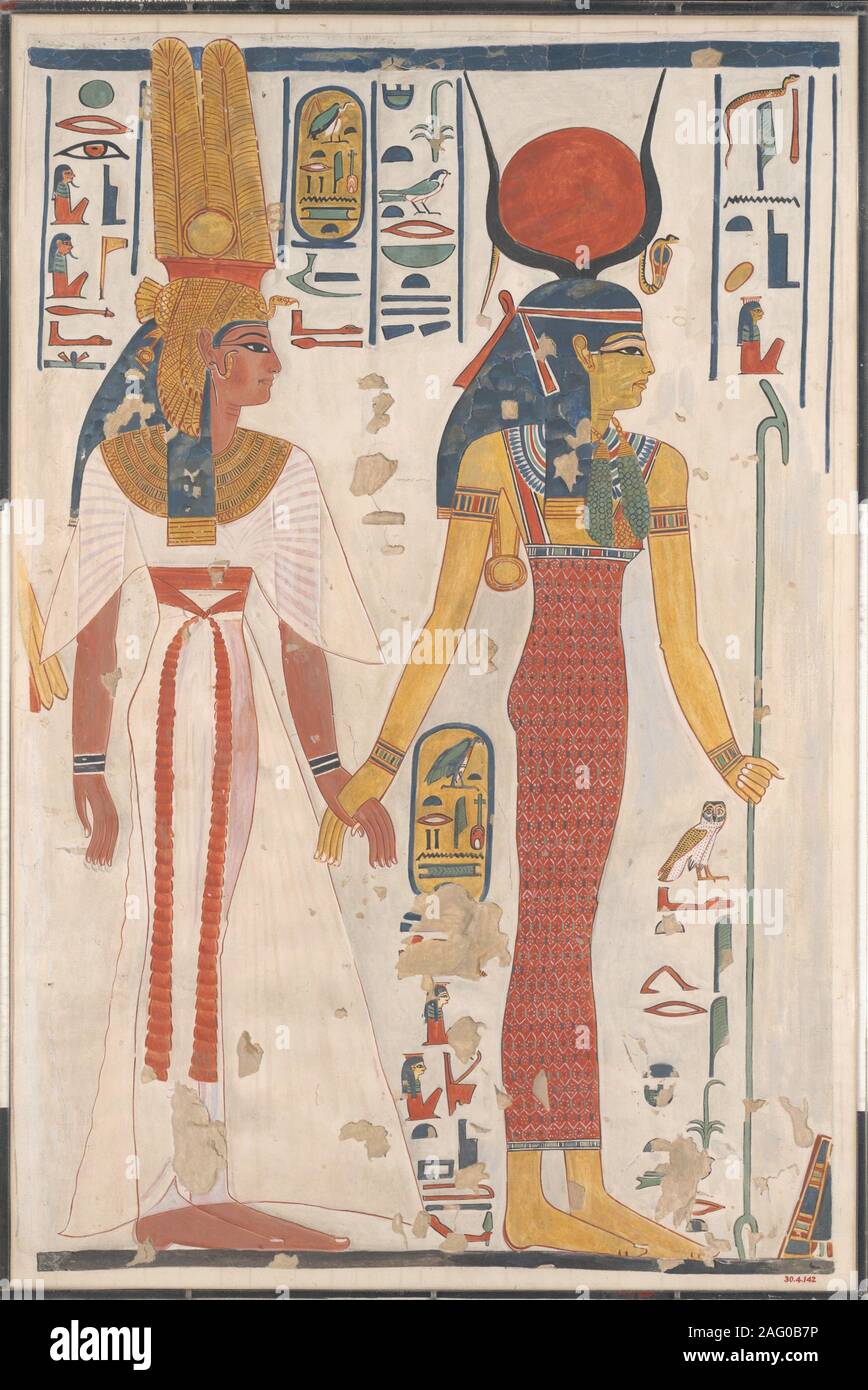 Queen Nefertari being led by Isis, ca. 1279-1213 B.C. Stock Photohttps://www.alamy.com/image-license-details/?v=1https://www.alamy.com/queen-nefertari-being-led-by-isis-ca-1279-1213-bc-image336840330.html
Queen Nefertari being led by Isis, ca. 1279-1213 B.C. Stock Photohttps://www.alamy.com/image-license-details/?v=1https://www.alamy.com/queen-nefertari-being-led-by-isis-ca-1279-1213-bc-image336840330.htmlRM2AG0B7P–Queen Nefertari being led by Isis, ca. 1279-1213 B.C.
 Egyptian Wood Sculpture of the deified queen Ahmes Nefertari, 1279-1213 BC 19th Dynasty, found Deir el Medina, acacia. Louvre Museum inv N 470. Th Stock Photohttps://www.alamy.com/image-license-details/?v=1https://www.alamy.com/egyptian-wood-sculpture-of-the-deified-queen-ahmes-nefertari-1279-1213-bc-19th-dynasty-found-deir-el-medina-acacia-louvre-museum-inv-n-470-th-image450448804.html
Egyptian Wood Sculpture of the deified queen Ahmes Nefertari, 1279-1213 BC 19th Dynasty, found Deir el Medina, acacia. Louvre Museum inv N 470. Th Stock Photohttps://www.alamy.com/image-license-details/?v=1https://www.alamy.com/egyptian-wood-sculpture-of-the-deified-queen-ahmes-nefertari-1279-1213-bc-19th-dynasty-found-deir-el-medina-acacia-louvre-museum-inv-n-470-th-image450448804.htmlRF2H4RM18–Egyptian Wood Sculpture of the deified queen Ahmes Nefertari, 1279-1213 BC 19th Dynasty, found Deir el Medina, acacia. Louvre Museum inv N 470. Th
 'Queen Nefertari', 1886. Artist: Unknown. Stock Photohttps://www.alamy.com/image-license-details/?v=1https://www.alamy.com/queen-nefertari-1886-artist-unknown-image218486384.html
'Queen Nefertari', 1886. Artist: Unknown. Stock Photohttps://www.alamy.com/image-license-details/?v=1https://www.alamy.com/queen-nefertari-1886-artist-unknown-image218486384.htmlRMPKCWH4–'Queen Nefertari', 1886. Artist: Unknown.
 Soccer - Asian Cup Lebanon 2000 - Lebanon v Iran Stock Photohttps://www.alamy.com/image-license-details/?v=1https://www.alamy.com/stock-photo-soccer-asian-cup-lebanon-2000-lebanon-v-iran-109145559.html
Soccer - Asian Cup Lebanon 2000 - Lebanon v Iran Stock Photohttps://www.alamy.com/image-license-details/?v=1https://www.alamy.com/stock-photo-soccer-asian-cup-lebanon-2000-lebanon-v-iran-109145559.htmlRMG9G07K–Soccer - Asian Cup Lebanon 2000 - Lebanon v Iran
 'Rock-Temples at Abousimbel', 1890. Creator: Unknown. Stock Photohttps://www.alamy.com/image-license-details/?v=1https://www.alamy.com/rock-temples-at-abousimbel-1890-creator-unknown-image248906720.html
'Rock-Temples at Abousimbel', 1890. Creator: Unknown. Stock Photohttps://www.alamy.com/image-license-details/?v=1https://www.alamy.com/rock-temples-at-abousimbel-1890-creator-unknown-image248906720.htmlRMTCXK1M–'Rock-Temples at Abousimbel', 1890. Creator: Unknown.
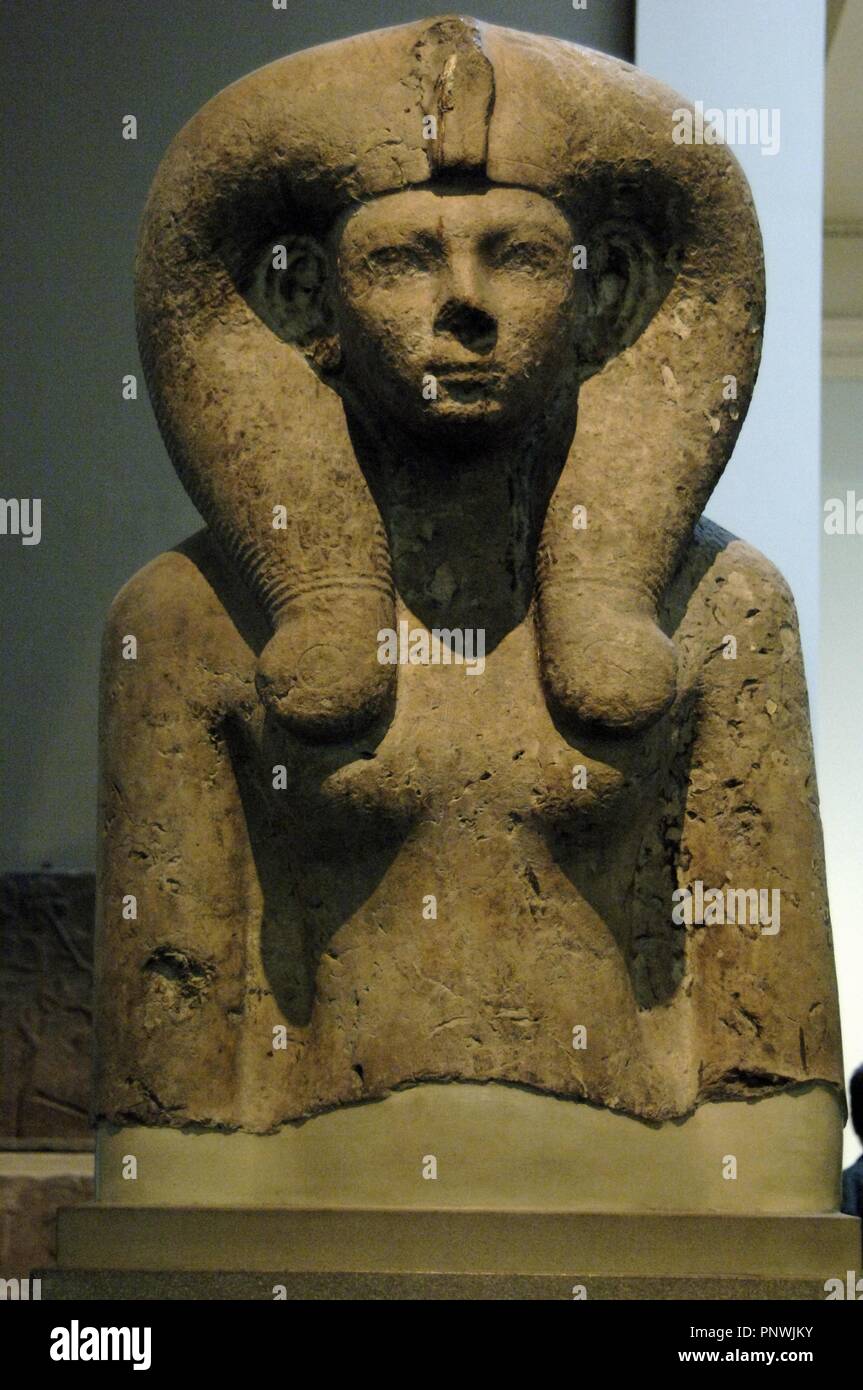 Limestone bust of Queen Ahmes-Merytamun, wife of Amenhotep I. Depicted with Hathor-wig. 1550 BC. New Kingdom. 18th Dynasty. From the temple of Karnak. Thebes. British Museum. London. United Kingdom. Stock Photohttps://www.alamy.com/image-license-details/?v=1https://www.alamy.com/limestone-bust-of-queen-ahmes-merytamun-wife-of-amenhotep-i-depicted-with-hathor-wig-1550-bc-new-kingdom-18th-dynasty-from-the-temple-of-karnak-thebes-british-museum-london-united-kingdom-image219995663.html
Limestone bust of Queen Ahmes-Merytamun, wife of Amenhotep I. Depicted with Hathor-wig. 1550 BC. New Kingdom. 18th Dynasty. From the temple of Karnak. Thebes. British Museum. London. United Kingdom. Stock Photohttps://www.alamy.com/image-license-details/?v=1https://www.alamy.com/limestone-bust-of-queen-ahmes-merytamun-wife-of-amenhotep-i-depicted-with-hathor-wig-1550-bc-new-kingdom-18th-dynasty-from-the-temple-of-karnak-thebes-british-museum-london-united-kingdom-image219995663.htmlRMPNWJKY–Limestone bust of Queen Ahmes-Merytamun, wife of Amenhotep I. Depicted with Hathor-wig. 1550 BC. New Kingdom. 18th Dynasty. From the temple of Karnak. Thebes. British Museum. London. United Kingdom.
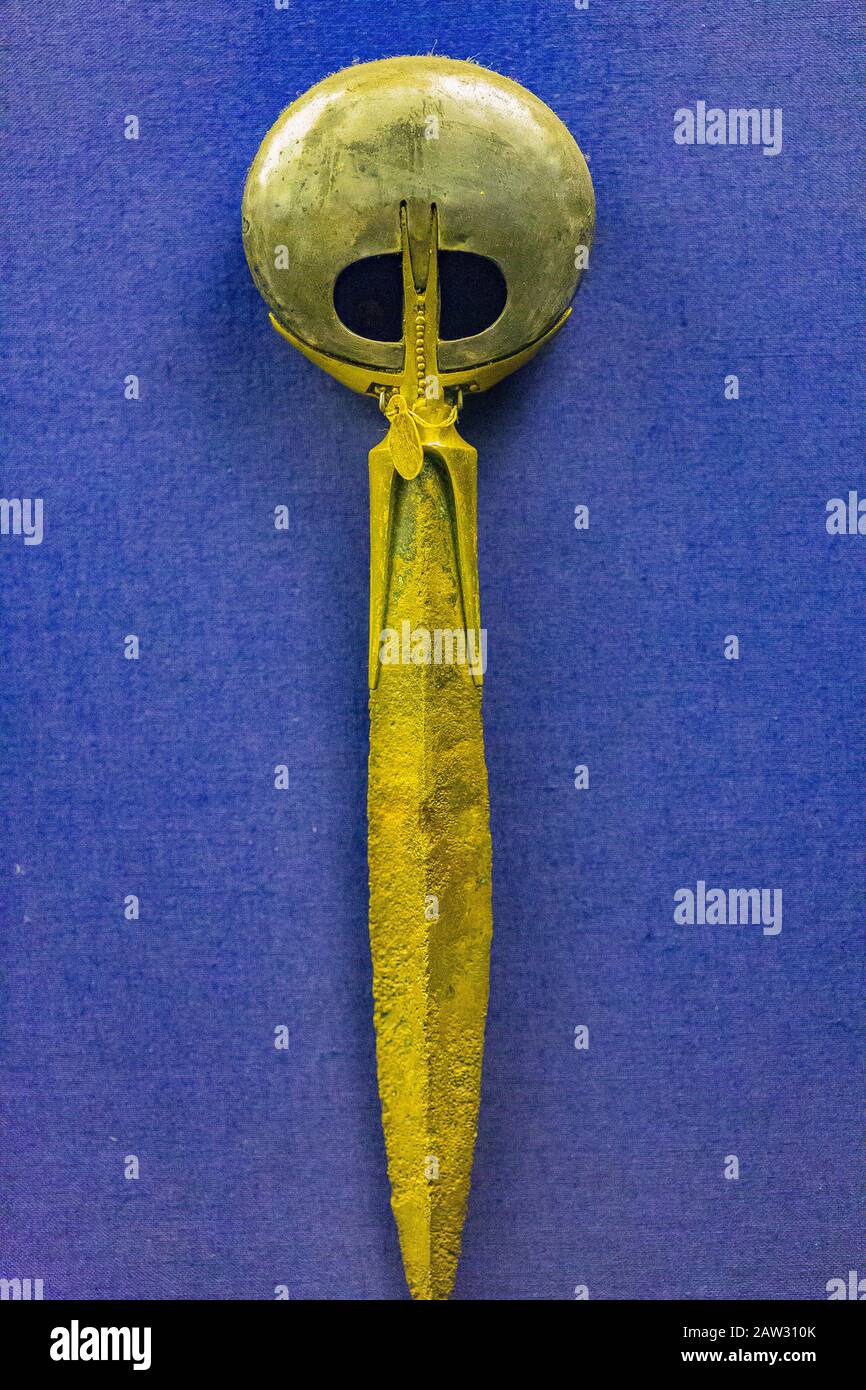 Egypt, Cairo, Egyptian Museum, a dagger found in the tomb of the queen Ahhotep, the mother of Ahmosis, Dra Abu el Naga, Luxor. Stock Photohttps://www.alamy.com/image-license-details/?v=1https://www.alamy.com/egypt-cairo-egyptian-museum-a-dagger-found-in-the-tomb-of-the-queen-ahhotep-the-mother-of-ahmosis-dra-abu-el-naga-luxor-image342430051.html
Egypt, Cairo, Egyptian Museum, a dagger found in the tomb of the queen Ahhotep, the mother of Ahmosis, Dra Abu el Naga, Luxor. Stock Photohttps://www.alamy.com/image-license-details/?v=1https://www.alamy.com/egypt-cairo-egyptian-museum-a-dagger-found-in-the-tomb-of-the-queen-ahhotep-the-mother-of-ahmosis-dra-abu-el-naga-luxor-image342430051.htmlRM2AW310K–Egypt, Cairo, Egyptian Museum, a dagger found in the tomb of the queen Ahhotep, the mother of Ahmosis, Dra Abu el Naga, Luxor.
 The popular and critical Bible encyclopædia and Scriptural dictionary, fully defining and explaining all religious terms, including biographical, geographical, historical, archaeological and doctrinal themes . g. 6. Eighteenth Dynasty. (1) Ahmes. TheHyksos were driven out by Ahmes, the first kingof the eighteenth dynasty. Ahmes reigned twenty-two years and married Ahmes Neftari, a negress,who ruled some time after his death. The sonof these rulers, Amenhotep, ruled eleven years. (2) Queen Hatasu. Then came Thothmes I,who associated his beautiful and powerful daugh-ter Hatasu, or Hashop, with h Stock Photohttps://www.alamy.com/image-license-details/?v=1https://www.alamy.com/the-popular-and-critical-bible-encyclopdia-and-scriptural-dictionary-fully-defining-and-explaining-all-religious-terms-including-biographical-geographical-historical-archaeological-and-doctrinal-themes-g-6-eighteenth-dynasty-1-ahmes-thehyksos-were-driven-out-by-ahmes-the-first-kingof-the-eighteenth-dynasty-ahmes-reigned-twenty-two-years-and-married-ahmes-neftari-a-negresswho-ruled-some-time-after-his-death-the-sonof-these-rulers-amenhotep-ruled-eleven-years-2-queen-hatasu-then-came-thothmes-iwho-associated-his-beautiful-and-powerful-daugh-ter-hatasu-or-hashop-with-h-image342713102.html
The popular and critical Bible encyclopædia and Scriptural dictionary, fully defining and explaining all religious terms, including biographical, geographical, historical, archaeological and doctrinal themes . g. 6. Eighteenth Dynasty. (1) Ahmes. TheHyksos were driven out by Ahmes, the first kingof the eighteenth dynasty. Ahmes reigned twenty-two years and married Ahmes Neftari, a negress,who ruled some time after his death. The sonof these rulers, Amenhotep, ruled eleven years. (2) Queen Hatasu. Then came Thothmes I,who associated his beautiful and powerful daugh-ter Hatasu, or Hashop, with h Stock Photohttps://www.alamy.com/image-license-details/?v=1https://www.alamy.com/the-popular-and-critical-bible-encyclopdia-and-scriptural-dictionary-fully-defining-and-explaining-all-religious-terms-including-biographical-geographical-historical-archaeological-and-doctrinal-themes-g-6-eighteenth-dynasty-1-ahmes-thehyksos-were-driven-out-by-ahmes-the-first-kingof-the-eighteenth-dynasty-ahmes-reigned-twenty-two-years-and-married-ahmes-neftari-a-negresswho-ruled-some-time-after-his-death-the-sonof-these-rulers-amenhotep-ruled-eleven-years-2-queen-hatasu-then-came-thothmes-iwho-associated-his-beautiful-and-powerful-daugh-ter-hatasu-or-hashop-with-h-image342713102.htmlRM2AWFX1J–The popular and critical Bible encyclopædia and Scriptural dictionary, fully defining and explaining all religious terms, including biographical, geographical, historical, archaeological and doctrinal themes . g. 6. Eighteenth Dynasty. (1) Ahmes. TheHyksos were driven out by Ahmes, the first kingof the eighteenth dynasty. Ahmes reigned twenty-two years and married Ahmes Neftari, a negress,who ruled some time after his death. The sonof these rulers, Amenhotep, ruled eleven years. (2) Queen Hatasu. Then came Thothmes I,who associated his beautiful and powerful daugh-ter Hatasu, or Hashop, with h
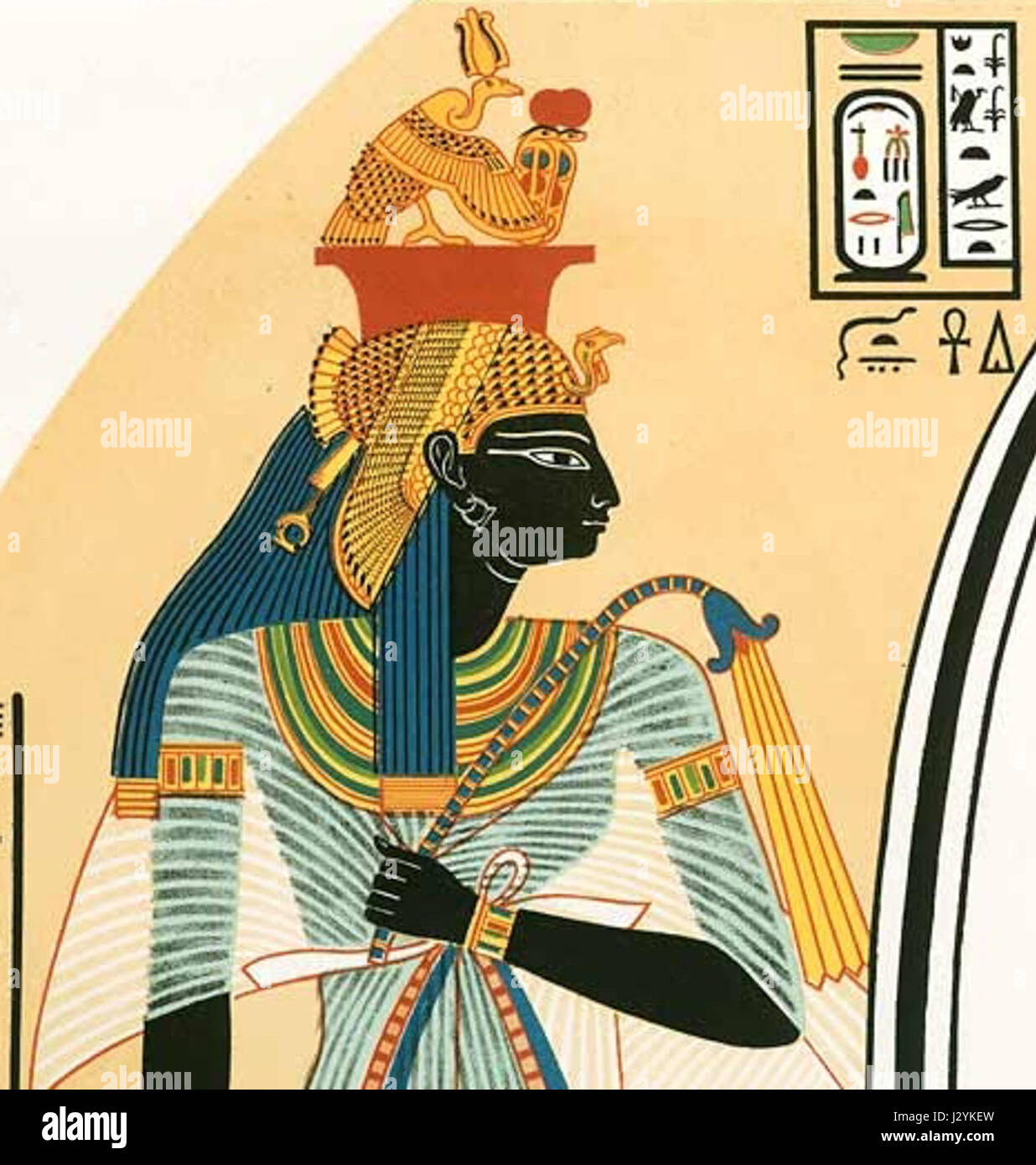 Ahmes Nefertari Grab 10 Stock Photohttps://www.alamy.com/image-license-details/?v=1https://www.alamy.com/stock-photo-ahmes-nefertari-grab-10-139520273.html
Ahmes Nefertari Grab 10 Stock Photohttps://www.alamy.com/image-license-details/?v=1https://www.alamy.com/stock-photo-ahmes-nefertari-grab-10-139520273.htmlRMJ2YKEW–Ahmes Nefertari Grab 10
 30 Ahmès Nofrétari Stock Photohttps://www.alamy.com/image-license-details/?v=1https://www.alamy.com/30-ahms-nofrtari-image187625730.html
30 Ahmès Nofrétari Stock Photohttps://www.alamy.com/image-license-details/?v=1https://www.alamy.com/30-ahms-nofrtari-image187625730.htmlRMMW72EX–30 Ahmès Nofrétari
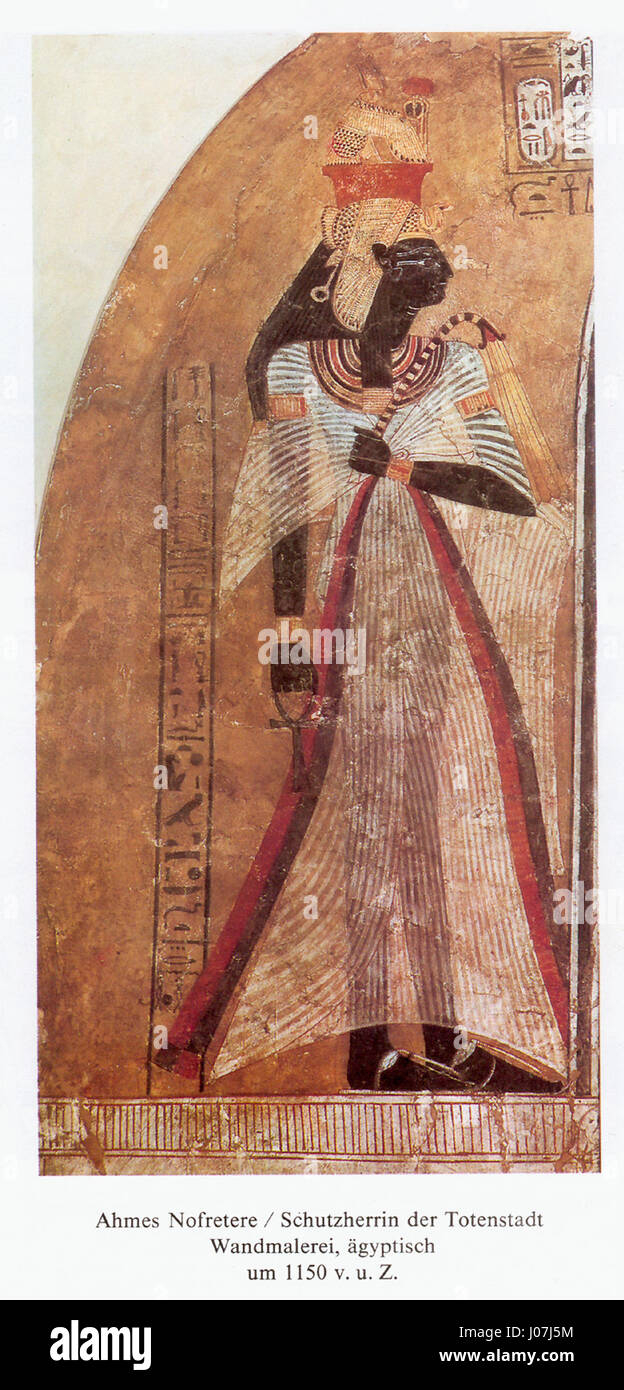 Ahmès Nofrétari Stock Photohttps://www.alamy.com/image-license-details/?v=1https://www.alamy.com/stock-photo-ahms-nofrtari-137850880.html
Ahmès Nofrétari Stock Photohttps://www.alamy.com/image-license-details/?v=1https://www.alamy.com/stock-photo-ahms-nofrtari-137850880.htmlRMJ07J5M–Ahmès Nofrétari
 Ahmès Nofrétari. Stock Photohttps://www.alamy.com/image-license-details/?v=1https://www.alamy.com/ahms-nofrtari-image214123729.html
Ahmès Nofrétari. Stock Photohttps://www.alamy.com/image-license-details/?v=1https://www.alamy.com/ahms-nofrtari-image214123729.htmlRMPCA501–Ahmès Nofrétari.
 Quast Ferdinand von (1807-1877), labeled stone monuments in Turah and Thebes (without dat.): View of two stones with inscriptions by Queen Ahmes Notertet, and Hatshepsut's royal name MARERA 8 .. Pencil on transparent, 25.2 x 40, 2 cm (including scan edges) Quast Ferdinand von (1807-1877): Beschriftete Steindenkmäler, Turah und Theben Stock Photohttps://www.alamy.com/image-license-details/?v=1https://www.alamy.com/quast-ferdinand-von-1807-1877-labeled-stone-monuments-in-turah-and-thebes-without-dat-view-of-two-stones-with-inscriptions-by-queen-ahmes-notertet-and-hatshepsuts-royal-name-marera-8-pencil-on-transparent-252-x-40-2-cm-including-scan-edges-quast-ferdinand-von-1807-1877-beschriftete-steindenkmler-turah-und-theben-image477544961.html
Quast Ferdinand von (1807-1877), labeled stone monuments in Turah and Thebes (without dat.): View of two stones with inscriptions by Queen Ahmes Notertet, and Hatshepsut's royal name MARERA 8 .. Pencil on transparent, 25.2 x 40, 2 cm (including scan edges) Quast Ferdinand von (1807-1877): Beschriftete Steindenkmäler, Turah und Theben Stock Photohttps://www.alamy.com/image-license-details/?v=1https://www.alamy.com/quast-ferdinand-von-1807-1877-labeled-stone-monuments-in-turah-and-thebes-without-dat-view-of-two-stones-with-inscriptions-by-queen-ahmes-notertet-and-hatshepsuts-royal-name-marera-8-pencil-on-transparent-252-x-40-2-cm-including-scan-edges-quast-ferdinand-von-1807-1877-beschriftete-steindenkmler-turah-und-theben-image477544961.htmlRM2JMX1D5–Quast Ferdinand von (1807-1877), labeled stone monuments in Turah and Thebes (without dat.): View of two stones with inscriptions by Queen Ahmes Notertet, and Hatshepsut's royal name MARERA 8 .. Pencil on transparent, 25.2 x 40, 2 cm (including scan edges) Quast Ferdinand von (1807-1877): Beschriftete Steindenkmäler, Turah und Theben
 Granite statue of Ahmes 'Scribe of accounts of gold'. Dated 1550 B.C. Stock Photohttps://www.alamy.com/image-license-details/?v=1https://www.alamy.com/stock-photo-granite-statue-of-ahmes-scribe-of-accounts-of-gold-dated-1550-bc-90822123.html
Granite statue of Ahmes 'Scribe of accounts of gold'. Dated 1550 B.C. Stock Photohttps://www.alamy.com/image-license-details/?v=1https://www.alamy.com/stock-photo-granite-statue-of-ahmes-scribe-of-accounts-of-gold-dated-1550-bc-90822123.htmlRMF7N8F7–Granite statue of Ahmes 'Scribe of accounts of gold'. Dated 1550 B.C.
 Upper Part of the Seated Statue of a Queen ca. 1580–1550 B.C. New Kingdom This image of a queen wearing the vulture headdress over a voluminous tripartite wig was split off its backslab in antiquity, most probably by somebody who wanted to make use of this conveniently shaped piece of stone for other purposes. It is conceivable that a king (her father, son, or husband) was originally represented seated beside her. The sculpture has been identified tentatively as Queen Ahmes Nefertari, mother of Amenhotep I, and dated to the reign of Ahmose (ca. 1550-1525 B.C.) at the very beginning of the 18th Stock Photohttps://www.alamy.com/image-license-details/?v=1https://www.alamy.com/upper-part-of-the-seated-statue-of-a-queen-ca-15801550-bc-new-kingdom-this-image-of-a-queen-wearing-the-vulture-headdress-over-a-voluminous-tripartite-wig-was-split-off-its-backslab-in-antiquity-most-probably-by-somebody-who-wanted-to-make-use-of-this-conveniently-shaped-piece-of-stone-for-other-purposes-it-is-conceivable-that-a-king-her-father-son-or-husband-was-originally-represented-seated-beside-her-the-sculpture-has-been-identified-tentatively-as-queen-ahmes-nefertari-mother-of-amenhotep-i-and-dated-to-the-reign-of-ahmose-ca-1550-1525-bc-at-the-very-beginning-of-the-18th-image458589458.html
Upper Part of the Seated Statue of a Queen ca. 1580–1550 B.C. New Kingdom This image of a queen wearing the vulture headdress over a voluminous tripartite wig was split off its backslab in antiquity, most probably by somebody who wanted to make use of this conveniently shaped piece of stone for other purposes. It is conceivable that a king (her father, son, or husband) was originally represented seated beside her. The sculpture has been identified tentatively as Queen Ahmes Nefertari, mother of Amenhotep I, and dated to the reign of Ahmose (ca. 1550-1525 B.C.) at the very beginning of the 18th Stock Photohttps://www.alamy.com/image-license-details/?v=1https://www.alamy.com/upper-part-of-the-seated-statue-of-a-queen-ca-15801550-bc-new-kingdom-this-image-of-a-queen-wearing-the-vulture-headdress-over-a-voluminous-tripartite-wig-was-split-off-its-backslab-in-antiquity-most-probably-by-somebody-who-wanted-to-make-use-of-this-conveniently-shaped-piece-of-stone-for-other-purposes-it-is-conceivable-that-a-king-her-father-son-or-husband-was-originally-represented-seated-beside-her-the-sculpture-has-been-identified-tentatively-as-queen-ahmes-nefertari-mother-of-amenhotep-i-and-dated-to-the-reign-of-ahmose-ca-1550-1525-bc-at-the-very-beginning-of-the-18th-image458589458.htmlRM2HJ2FEX–Upper Part of the Seated Statue of a Queen ca. 1580–1550 B.C. New Kingdom This image of a queen wearing the vulture headdress over a voluminous tripartite wig was split off its backslab in antiquity, most probably by somebody who wanted to make use of this conveniently shaped piece of stone for other purposes. It is conceivable that a king (her father, son, or husband) was originally represented seated beside her. The sculpture has been identified tentatively as Queen Ahmes Nefertari, mother of Amenhotep I, and dated to the reign of Ahmose (ca. 1550-1525 B.C.) at the very beginning of the 18th
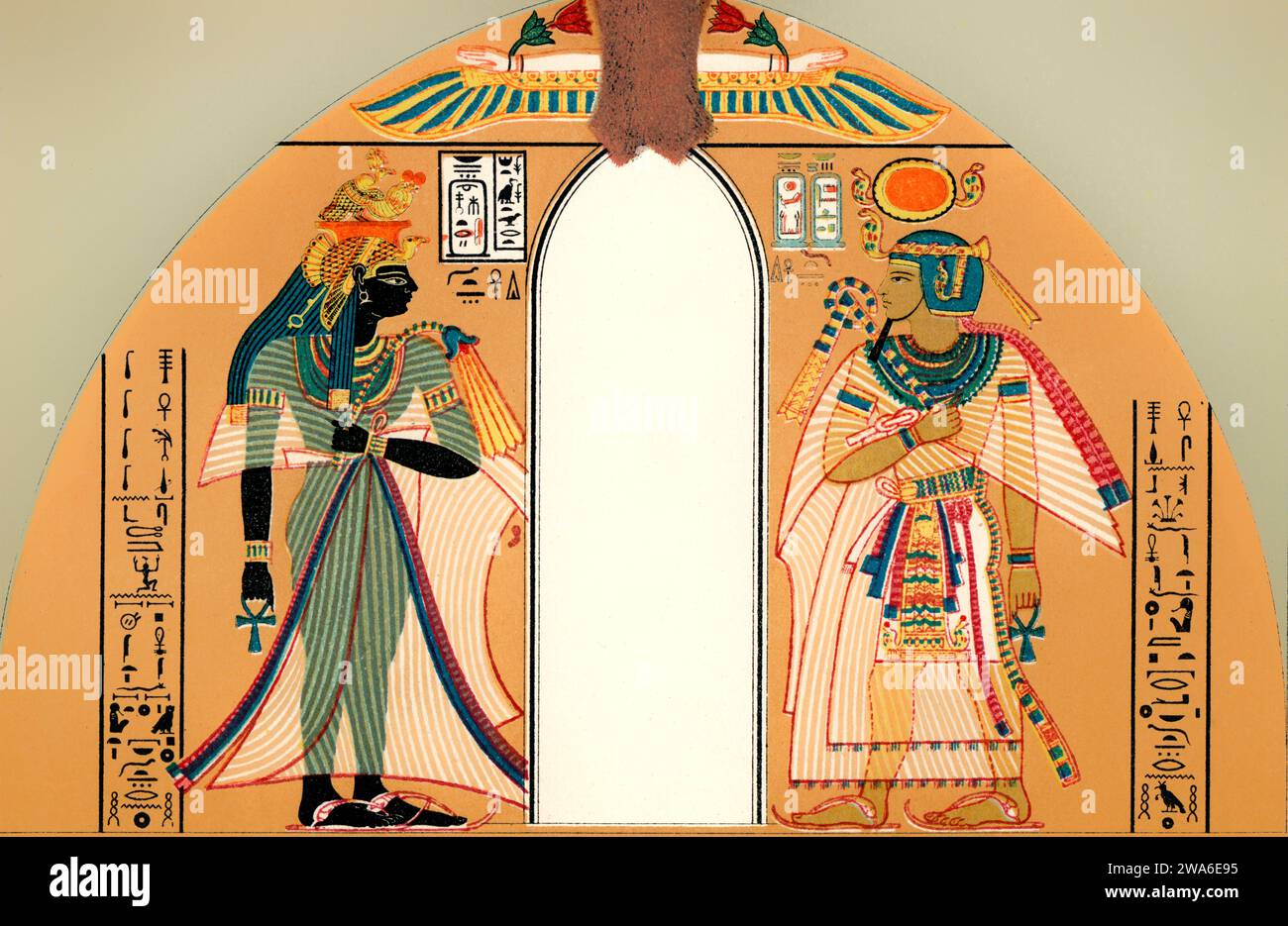 Pharaoh Amenhotep I with his mother Queen Ahmose-Nefertari, 18th dynasty of Egypt Stock Photohttps://www.alamy.com/image-license-details/?v=1https://www.alamy.com/pharaoh-amenhotep-i-with-his-mother-queen-ahmose-nefertari-18th-dynasty-of-egypt-image591442017.html
Pharaoh Amenhotep I with his mother Queen Ahmose-Nefertari, 18th dynasty of Egypt Stock Photohttps://www.alamy.com/image-license-details/?v=1https://www.alamy.com/pharaoh-amenhotep-i-with-his-mother-queen-ahmose-nefertari-18th-dynasty-of-egypt-image591442017.htmlRM2WA6E95–Pharaoh Amenhotep I with his mother Queen Ahmose-Nefertari, 18th dynasty of Egypt
 Egypt, Upper Egypt, Nile valley, El Kab, rock tomb of the soldier Ahmes, son of Abana, hieroglyphics (hollow reliefs) Stock Photohttps://www.alamy.com/image-license-details/?v=1https://www.alamy.com/egypt-upper-egypt-nile-valley-el-kab-rock-tomb-of-the-soldier-ahmes-son-of-abana-hieroglyphics-hollow-reliefs-image456355508.html
Egypt, Upper Egypt, Nile valley, El Kab, rock tomb of the soldier Ahmes, son of Abana, hieroglyphics (hollow reliefs) Stock Photohttps://www.alamy.com/image-license-details/?v=1https://www.alamy.com/egypt-upper-egypt-nile-valley-el-kab-rock-tomb-of-the-soldier-ahmes-son-of-abana-hieroglyphics-hollow-reliefs-image456355508.htmlRM2HECP30–Egypt, Upper Egypt, Nile valley, El Kab, rock tomb of the soldier Ahmes, son of Abana, hieroglyphics (hollow reliefs)
 Ibsamboul, Partie Septentrionale Du Spéos D'Hathor; Nubie, 1849/51, printed 1852. A work made of salted paper print, plate 108 from the album "egypte, nubie, palestine et syrie" (1852). Stock Photohttps://www.alamy.com/image-license-details/?v=1https://www.alamy.com/ibsamboul-partie-septentrionale-du-spxe9os-dhathor-nubie-184951-printed-1852-a-work-made-of-salted-paper-print-plate-108-from-the-album-quotegypte-nubie-palestine-et-syriequot-1852-image440347615.html
Ibsamboul, Partie Septentrionale Du Spéos D'Hathor; Nubie, 1849/51, printed 1852. A work made of salted paper print, plate 108 from the album "egypte, nubie, palestine et syrie" (1852). Stock Photohttps://www.alamy.com/image-license-details/?v=1https://www.alamy.com/ibsamboul-partie-septentrionale-du-spxe9os-dhathor-nubie-184951-printed-1852-a-work-made-of-salted-paper-print-plate-108-from-the-album-quotegypte-nubie-palestine-et-syriequot-1852-image440347615.htmlRM2GGBFTF–Ibsamboul, Partie Septentrionale Du Spéos D'Hathor; Nubie, 1849/51, printed 1852. A work made of salted paper print, plate 108 from the album "egypte, nubie, palestine et syrie" (1852).
 Egyptian Wood Sculpture of the deified queen Ahmes Nefertari, 1279-1213 BC 19th Dynasty, found Deir el Medina, acacia. Louvre Museum inv N 470. Th Stock Photohttps://www.alamy.com/image-license-details/?v=1https://www.alamy.com/egyptian-wood-sculpture-of-the-deified-queen-ahmes-nefertari-1279-1213-bc-19th-dynasty-found-deir-el-medina-acacia-louvre-museum-inv-n-470-th-image450558005.html
Egyptian Wood Sculpture of the deified queen Ahmes Nefertari, 1279-1213 BC 19th Dynasty, found Deir el Medina, acacia. Louvre Museum inv N 470. Th Stock Photohttps://www.alamy.com/image-license-details/?v=1https://www.alamy.com/egyptian-wood-sculpture-of-the-deified-queen-ahmes-nefertari-1279-1213-bc-19th-dynasty-found-deir-el-medina-acacia-louvre-museum-inv-n-470-th-image450558005.htmlRF2H50K99–Egyptian Wood Sculpture of the deified queen Ahmes Nefertari, 1279-1213 BC 19th Dynasty, found Deir el Medina, acacia. Louvre Museum inv N 470. Th
 ARTE EGIPCIO. IMPERIO NUEVO. DINASTIA XVIII. Busto en piedra caliza de la reina AHMES-MERYTAMUN, esposa de Amenofis I. Representada con la 'peluca de Hathor'. Fechada hacia el año 1550 a. C. Procede del templo de Karnak. Tebas. Museo Británico. Londres. Inglaterra. Reino Unido. Stock Photohttps://www.alamy.com/image-license-details/?v=1https://www.alamy.com/arte-egipcio-imperio-nuevo-dinastia-xviii-busto-en-piedra-caliza-de-la-reina-ahmes-merytamun-esposa-de-amenofis-i-representada-con-la-peluca-de-hathor-fechada-hacia-el-ao-1550-a-c-procede-del-templo-de-karnak-tebas-museo-britnico-londres-inglaterra-reino-unido-image219995581.html
ARTE EGIPCIO. IMPERIO NUEVO. DINASTIA XVIII. Busto en piedra caliza de la reina AHMES-MERYTAMUN, esposa de Amenofis I. Representada con la 'peluca de Hathor'. Fechada hacia el año 1550 a. C. Procede del templo de Karnak. Tebas. Museo Británico. Londres. Inglaterra. Reino Unido. Stock Photohttps://www.alamy.com/image-license-details/?v=1https://www.alamy.com/arte-egipcio-imperio-nuevo-dinastia-xviii-busto-en-piedra-caliza-de-la-reina-ahmes-merytamun-esposa-de-amenofis-i-representada-con-la-peluca-de-hathor-fechada-hacia-el-ao-1550-a-c-procede-del-templo-de-karnak-tebas-museo-britnico-londres-inglaterra-reino-unido-image219995581.htmlRMPNWJH1–ARTE EGIPCIO. IMPERIO NUEVO. DINASTIA XVIII. Busto en piedra caliza de la reina AHMES-MERYTAMUN, esposa de Amenofis I. Representada con la 'peluca de Hathor'. Fechada hacia el año 1550 a. C. Procede del templo de Karnak. Tebas. Museo Británico. Londres. Inglaterra. Reino Unido.
 Egypt, Cairo, Egyptian Museum, a silver boat found in the tomb of the queen Ahhotep, the mother of Ahmosis, Dra Abu el Naga, Luxor. Stock Photohttps://www.alamy.com/image-license-details/?v=1https://www.alamy.com/egypt-cairo-egyptian-museum-a-silver-boat-found-in-the-tomb-of-the-queen-ahhotep-the-mother-of-ahmosis-dra-abu-el-naga-luxor-image342444478.html
Egypt, Cairo, Egyptian Museum, a silver boat found in the tomb of the queen Ahhotep, the mother of Ahmosis, Dra Abu el Naga, Luxor. Stock Photohttps://www.alamy.com/image-license-details/?v=1https://www.alamy.com/egypt-cairo-egyptian-museum-a-silver-boat-found-in-the-tomb-of-the-queen-ahhotep-the-mother-of-ahmosis-dra-abu-el-naga-luxor-image342444478.htmlRM2AW3KBX–Egypt, Cairo, Egyptian Museum, a silver boat found in the tomb of the queen Ahhotep, the mother of Ahmosis, Dra Abu el Naga, Luxor.
 Histoire de l'art dans l'antiquité: Égypte, Assyrie, Perse, Asie Mineure, Grece, Etrurie, Rome . nous ont pour ainsi dire pas gardé de sculpture ;tout ce que, pour ces temps reculés, nous savons de cet art, de sonstyle et de ses procédés, nous le devons aux sépultures que se I. Hérodote, II, 172. Pour une époque antérieure, voir Lhistoire dun certain Ahmès,fils dAbouna, telle quil la raconte lui-même dans son inscription funéraire, qui date durègne dAmosis, le fondateur de la dix-huitième dynastie (De Roigé, Mémoire sur linscrip-tion dAhmés, chef des nautoniers, in-4, 1851, et Drugsch, Histoir Stock Photohttps://www.alamy.com/image-license-details/?v=1https://www.alamy.com/histoire-de-lart-dans-lantiquit-gypte-assyrie-perse-asie-mineure-grece-etrurie-rome-nous-ont-pour-ainsi-dire-pas-gard-de-sculpture-tout-ce-que-pour-ces-temps-reculs-nous-savons-de-cet-art-de-sonstyle-et-de-ses-procds-nous-le-devons-aux-spultures-que-se-i-hrodote-ii-172-pour-une-poque-antrieure-voir-lhistoire-dun-certain-ahmsfils-dabouna-telle-quil-la-raconte-lui-mme-dans-son-inscription-funraire-qui-date-durgne-damosis-le-fondateur-de-la-dix-huitime-dynastie-de-roig-mmoire-sur-linscrip-tion-dahms-chef-des-nautoniers-in-4-1851-et-drugsch-histoir-image340111643.html
Histoire de l'art dans l'antiquité: Égypte, Assyrie, Perse, Asie Mineure, Grece, Etrurie, Rome . nous ont pour ainsi dire pas gardé de sculpture ;tout ce que, pour ces temps reculés, nous savons de cet art, de sonstyle et de ses procédés, nous le devons aux sépultures que se I. Hérodote, II, 172. Pour une époque antérieure, voir Lhistoire dun certain Ahmès,fils dAbouna, telle quil la raconte lui-même dans son inscription funéraire, qui date durègne dAmosis, le fondateur de la dix-huitième dynastie (De Roigé, Mémoire sur linscrip-tion dAhmés, chef des nautoniers, in-4, 1851, et Drugsch, Histoir Stock Photohttps://www.alamy.com/image-license-details/?v=1https://www.alamy.com/histoire-de-lart-dans-lantiquit-gypte-assyrie-perse-asie-mineure-grece-etrurie-rome-nous-ont-pour-ainsi-dire-pas-gard-de-sculpture-tout-ce-que-pour-ces-temps-reculs-nous-savons-de-cet-art-de-sonstyle-et-de-ses-procds-nous-le-devons-aux-spultures-que-se-i-hrodote-ii-172-pour-une-poque-antrieure-voir-lhistoire-dun-certain-ahmsfils-dabouna-telle-quil-la-raconte-lui-mme-dans-son-inscription-funraire-qui-date-durgne-damosis-le-fondateur-de-la-dix-huitime-dynastie-de-roig-mmoire-sur-linscrip-tion-dahms-chef-des-nautoniers-in-4-1851-et-drugsch-histoir-image340111643.htmlRM2AN9BTB–Histoire de l'art dans l'antiquité: Égypte, Assyrie, Perse, Asie Mineure, Grece, Etrurie, Rome . nous ont pour ainsi dire pas gardé de sculpture ;tout ce que, pour ces temps reculés, nous savons de cet art, de sonstyle et de ses procédés, nous le devons aux sépultures que se I. Hérodote, II, 172. Pour une époque antérieure, voir Lhistoire dun certain Ahmès,fils dAbouna, telle quil la raconte lui-même dans son inscription funéraire, qui date durègne dAmosis, le fondateur de la dix-huitième dynastie (De Roigé, Mémoire sur linscrip-tion dAhmés, chef des nautoniers, in-4, 1851, et Drugsch, Histoir
 Momia tutmosis I o Ahmes sapair Stock Photohttps://www.alamy.com/image-license-details/?v=1https://www.alamy.com/stock-photo-momia-tutmosis-i-o-ahmes-sapair-140318213.html
Momia tutmosis I o Ahmes sapair Stock Photohttps://www.alamy.com/image-license-details/?v=1https://www.alamy.com/stock-photo-momia-tutmosis-i-o-ahmes-sapair-140318213.htmlRMJ4818N–Momia tutmosis I o Ahmes sapair
 26 Ahmès Nofrétari Stock Photohttps://www.alamy.com/image-license-details/?v=1https://www.alamy.com/26-ahms-nofrtari-image188902708.html
26 Ahmès Nofrétari Stock Photohttps://www.alamy.com/image-license-details/?v=1https://www.alamy.com/26-ahms-nofrtari-image188902708.htmlRMMY9798–26 Ahmès Nofrétari
 Momia tutmosis I o Ahmes sapair Stock Photohttps://www.alamy.com/image-license-details/?v=1https://www.alamy.com/stock-photo-momia-tutmosis-i-o-ahmes-sapair-136583309.html
Momia tutmosis I o Ahmes sapair Stock Photohttps://www.alamy.com/image-license-details/?v=1https://www.alamy.com/stock-photo-momia-tutmosis-i-o-ahmes-sapair-136583309.htmlRMHX5WB9–Momia tutmosis I o Ahmes sapair
 Ahmes nefertari2-2. Stock Photohttps://www.alamy.com/image-license-details/?v=1https://www.alamy.com/ahmes-nefertari2-2-image214123728.html
Ahmes nefertari2-2. Stock Photohttps://www.alamy.com/image-license-details/?v=1https://www.alamy.com/ahmes-nefertari2-2-image214123728.htmlRMPCA500–Ahmes nefertari2-2.
 Limestone bust of Queen Ahmes-Merytamun. 18th Dynasty, about 1550 BC from Thebes, Temple of Karnak. This is the upper half of a seated statue inscribed for Ahmes-Merytamum, the wife of Amenophis. Stock Photohttps://www.alamy.com/image-license-details/?v=1https://www.alamy.com/stock-photo-limestone-bust-of-queen-ahmes-merytamun-18th-dynasty-about-1550-bc-76388054.html
Limestone bust of Queen Ahmes-Merytamun. 18th Dynasty, about 1550 BC from Thebes, Temple of Karnak. This is the upper half of a seated statue inscribed for Ahmes-Merytamum, the wife of Amenophis. Stock Photohttps://www.alamy.com/image-license-details/?v=1https://www.alamy.com/stock-photo-limestone-bust-of-queen-ahmes-merytamun-18th-dynasty-about-1550-bc-76388054.htmlRMEC7NMP–Limestone bust of Queen Ahmes-Merytamun. 18th Dynasty, about 1550 BC from Thebes, Temple of Karnak. This is the upper half of a seated statue inscribed for Ahmes-Merytamum, the wife of Amenophis.
 Egypt, Upper Egypt, Nile valley, El Kab, rock tomb of the soldier Ahmes, son of Abana, hieroglyphics (hollow reliefs) Stock Photohttps://www.alamy.com/image-license-details/?v=1https://www.alamy.com/egypt-upper-egypt-nile-valley-el-kab-rock-tomb-of-the-soldier-ahmes-son-of-abana-hieroglyphics-hollow-reliefs-image456355514.html
Egypt, Upper Egypt, Nile valley, El Kab, rock tomb of the soldier Ahmes, son of Abana, hieroglyphics (hollow reliefs) Stock Photohttps://www.alamy.com/image-license-details/?v=1https://www.alamy.com/egypt-upper-egypt-nile-valley-el-kab-rock-tomb-of-the-soldier-ahmes-son-of-abana-hieroglyphics-hollow-reliefs-image456355514.htmlRM2HECP36–Egypt, Upper Egypt, Nile valley, El Kab, rock tomb of the soldier Ahmes, son of Abana, hieroglyphics (hollow reliefs)
 Egyptian Wood Sculpture of the deified queen Ahmes Nefertari, 1279-1213 BC 19th Dynasty, found Deir el Medina, acacia. Louvre Museum inv N 470. Th Stock Photohttps://www.alamy.com/image-license-details/?v=1https://www.alamy.com/egyptian-wood-sculpture-of-the-deified-queen-ahmes-nefertari-1279-1213-bc-19th-dynasty-found-deir-el-medina-acacia-louvre-museum-inv-n-470-th-image450567277.html
Egyptian Wood Sculpture of the deified queen Ahmes Nefertari, 1279-1213 BC 19th Dynasty, found Deir el Medina, acacia. Louvre Museum inv N 470. Th Stock Photohttps://www.alamy.com/image-license-details/?v=1https://www.alamy.com/egyptian-wood-sculpture-of-the-deified-queen-ahmes-nefertari-1279-1213-bc-19th-dynasty-found-deir-el-medina-acacia-louvre-museum-inv-n-470-th-image450567277.htmlRF2H5134D–Egyptian Wood Sculpture of the deified queen Ahmes Nefertari, 1279-1213 BC 19th Dynasty, found Deir el Medina, acacia. Louvre Museum inv N 470. Th
 ARTE EGIPCIO. IMPERIO NUEVO. DINASTIA XVIII. Busto en piedra caliza de la reina AHMES-MERYTAMUN, esposa de Amenofis I. Representada con la 'peluca de Hathor'. Fechada hacia el año 1550 a. C. Procede del templo de Karnak. Tebas. Detallde. Museo Británico. Londres. Inglaterra. Reino Unido. Stock Photohttps://www.alamy.com/image-license-details/?v=1https://www.alamy.com/arte-egipcio-imperio-nuevo-dinastia-xviii-busto-en-piedra-caliza-de-la-reina-ahmes-merytamun-esposa-de-amenofis-i-representada-con-la-peluca-de-hathor-fechada-hacia-el-ao-1550-a-c-procede-del-templo-de-karnak-tebas-detallde-museo-britnico-londres-inglaterra-reino-unido-image219995781.html
ARTE EGIPCIO. IMPERIO NUEVO. DINASTIA XVIII. Busto en piedra caliza de la reina AHMES-MERYTAMUN, esposa de Amenofis I. Representada con la 'peluca de Hathor'. Fechada hacia el año 1550 a. C. Procede del templo de Karnak. Tebas. Detallde. Museo Británico. Londres. Inglaterra. Reino Unido. Stock Photohttps://www.alamy.com/image-license-details/?v=1https://www.alamy.com/arte-egipcio-imperio-nuevo-dinastia-xviii-busto-en-piedra-caliza-de-la-reina-ahmes-merytamun-esposa-de-amenofis-i-representada-con-la-peluca-de-hathor-fechada-hacia-el-ao-1550-a-c-procede-del-templo-de-karnak-tebas-detallde-museo-britnico-londres-inglaterra-reino-unido-image219995781.htmlRMPNWJT5–ARTE EGIPCIO. IMPERIO NUEVO. DINASTIA XVIII. Busto en piedra caliza de la reina AHMES-MERYTAMUN, esposa de Amenofis I. Representada con la 'peluca de Hathor'. Fechada hacia el año 1550 a. C. Procede del templo de Karnak. Tebas. Detallde. Museo Británico. Londres. Inglaterra. Reino Unido.
 Egypt, Cairo, Egyptian Museum, silver rowers on a boat found in the tomb of the queen Ahhotep, the mother of Ahmosis, Dra Abu el Naga, Luxor. Stock Photohttps://www.alamy.com/image-license-details/?v=1https://www.alamy.com/egypt-cairo-egyptian-museum-silver-rowers-on-a-boat-found-in-the-tomb-of-the-queen-ahhotep-the-mother-of-ahmosis-dra-abu-el-naga-luxor-image342444612.html
Egypt, Cairo, Egyptian Museum, silver rowers on a boat found in the tomb of the queen Ahhotep, the mother of Ahmosis, Dra Abu el Naga, Luxor. Stock Photohttps://www.alamy.com/image-license-details/?v=1https://www.alamy.com/egypt-cairo-egyptian-museum-silver-rowers-on-a-boat-found-in-the-tomb-of-the-queen-ahhotep-the-mother-of-ahmosis-dra-abu-el-naga-luxor-image342444612.htmlRM2AW3KGM–Egypt, Cairo, Egyptian Museum, silver rowers on a boat found in the tomb of the queen Ahhotep, the mother of Ahmosis, Dra Abu el Naga, Luxor.
 . The earth and its inhabitants ... Geography. 384 NOETH-EAST AFRICA. discovered in 1859 the mummy of a certain Queen Aahhotep, probably the mother of King Ahmes or Amosis. The ornaments of this queen, now preserved in the Bulaq museum, near Cairo, are of such marvellous workmanship that modern jewellers confess their inability even to imitate them. It seems probable that from another tomb in the Assassif hill also comes the Ebers papyrus, the " hermetic " book containing the pharmacopoeia of the Egyptians at the time of the Thotmes dynasty. West of the chief eminence, and not far fr Stock Photohttps://www.alamy.com/image-license-details/?v=1https://www.alamy.com/the-earth-and-its-inhabitants-geography-384-noeth-east-africa-discovered-in-1859-the-mummy-of-a-certain-queen-aahhotep-probably-the-mother-of-king-ahmes-or-amosis-the-ornaments-of-this-queen-now-preserved-in-the-bulaq-museum-near-cairo-are-of-such-marvellous-workmanship-that-modern-jewellers-confess-their-inability-even-to-imitate-them-it-seems-probable-that-from-another-tomb-in-the-assassif-hill-also-comes-the-ebers-papyrus-the-quot-hermetic-quot-book-containing-the-pharmacopoeia-of-the-egyptians-at-the-time-of-the-thotmes-dynasty-west-of-the-chief-eminence-and-not-far-fr-image232512383.html
. The earth and its inhabitants ... Geography. 384 NOETH-EAST AFRICA. discovered in 1859 the mummy of a certain Queen Aahhotep, probably the mother of King Ahmes or Amosis. The ornaments of this queen, now preserved in the Bulaq museum, near Cairo, are of such marvellous workmanship that modern jewellers confess their inability even to imitate them. It seems probable that from another tomb in the Assassif hill also comes the Ebers papyrus, the " hermetic " book containing the pharmacopoeia of the Egyptians at the time of the Thotmes dynasty. West of the chief eminence, and not far fr Stock Photohttps://www.alamy.com/image-license-details/?v=1https://www.alamy.com/the-earth-and-its-inhabitants-geography-384-noeth-east-africa-discovered-in-1859-the-mummy-of-a-certain-queen-aahhotep-probably-the-mother-of-king-ahmes-or-amosis-the-ornaments-of-this-queen-now-preserved-in-the-bulaq-museum-near-cairo-are-of-such-marvellous-workmanship-that-modern-jewellers-confess-their-inability-even-to-imitate-them-it-seems-probable-that-from-another-tomb-in-the-assassif-hill-also-comes-the-ebers-papyrus-the-quot-hermetic-quot-book-containing-the-pharmacopoeia-of-the-egyptians-at-the-time-of-the-thotmes-dynasty-west-of-the-chief-eminence-and-not-far-fr-image232512383.htmlRMRE7RWK–. The earth and its inhabitants ... Geography. 384 NOETH-EAST AFRICA. discovered in 1859 the mummy of a certain Queen Aahhotep, probably the mother of King Ahmes or Amosis. The ornaments of this queen, now preserved in the Bulaq museum, near Cairo, are of such marvellous workmanship that modern jewellers confess their inability even to imitate them. It seems probable that from another tomb in the Assassif hill also comes the Ebers papyrus, the " hermetic " book containing the pharmacopoeia of the Egyptians at the time of the Thotmes dynasty. West of the chief eminence, and not far fr
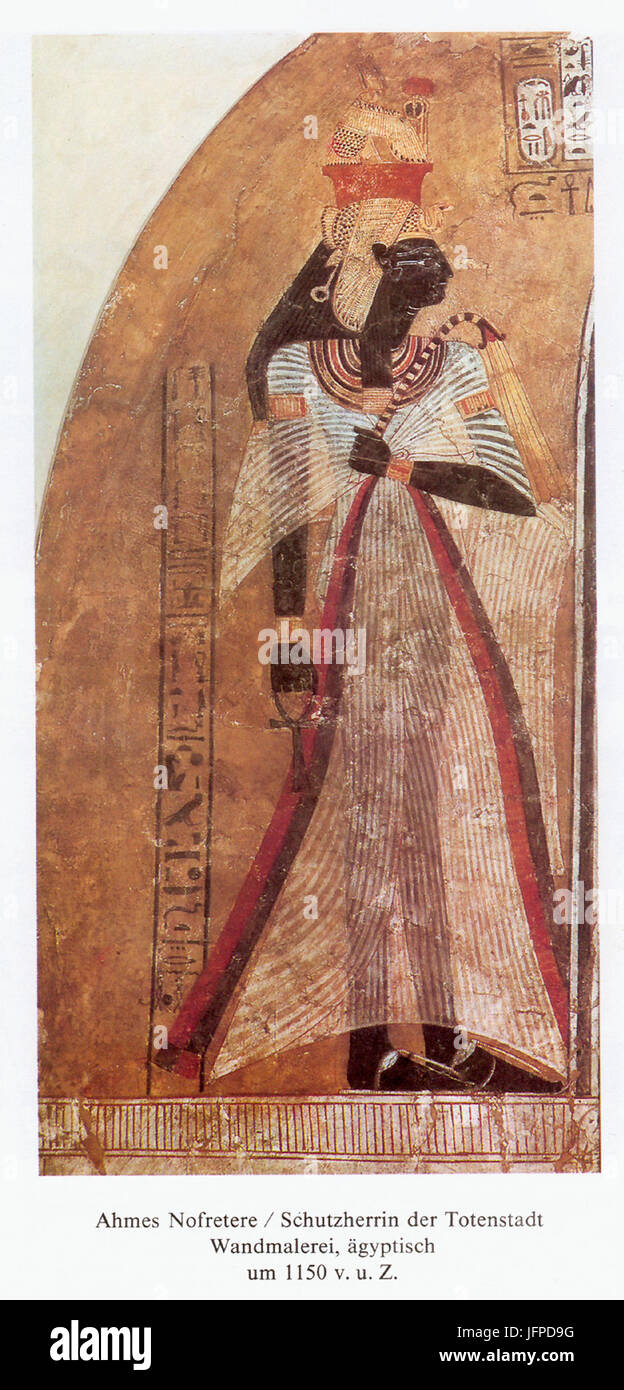 Ahmès Nofrétari Stock Photohttps://www.alamy.com/image-license-details/?v=1https://www.alamy.com/stock-photo-ahms-nofrtari-147396188.html
Ahmès Nofrétari Stock Photohttps://www.alamy.com/image-license-details/?v=1https://www.alamy.com/stock-photo-ahms-nofrtari-147396188.htmlRMJFPD9G–Ahmès Nofrétari
 30 Ahmès Nofrétari Stock Photohttps://www.alamy.com/image-license-details/?v=1https://www.alamy.com/30-ahms-nofrtari-image188156228.html
30 Ahmès Nofrétari Stock Photohttps://www.alamy.com/image-license-details/?v=1https://www.alamy.com/30-ahms-nofrtari-image188156228.htmlRMMX3758–30 Ahmès Nofrétari
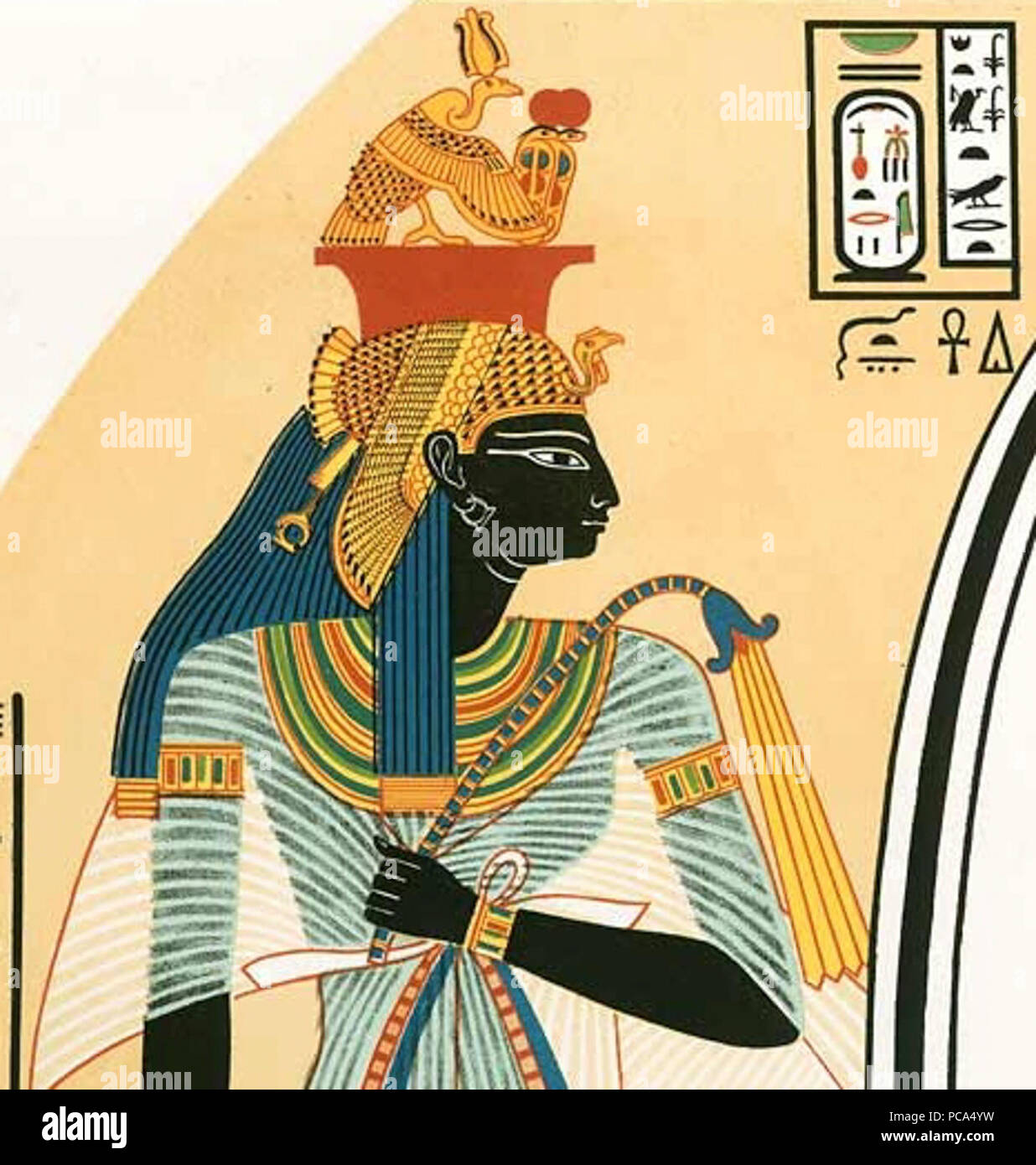 Ahmes Nefertari Grab 10. Stock Photohttps://www.alamy.com/image-license-details/?v=1https://www.alamy.com/ahmes-nefertari-grab-10-image214123725.html
Ahmes Nefertari Grab 10. Stock Photohttps://www.alamy.com/image-license-details/?v=1https://www.alamy.com/ahmes-nefertari-grab-10-image214123725.htmlRMPCA4YW–Ahmes Nefertari Grab 10.
 Limestone bust of Queen Ahmes-Merytamun. 18th Dynasty, about 1550 BC from Thebes, Temple of Karnak. This is the upper half of a seated statue inscribed for Ahmes-Merytamum, the wife of Amenophis. Stock Photohttps://www.alamy.com/image-license-details/?v=1https://www.alamy.com/stock-photo-limestone-bust-of-queen-ahmes-merytamun-18th-dynasty-about-1550-bc-76388055.html
Limestone bust of Queen Ahmes-Merytamun. 18th Dynasty, about 1550 BC from Thebes, Temple of Karnak. This is the upper half of a seated statue inscribed for Ahmes-Merytamum, the wife of Amenophis. Stock Photohttps://www.alamy.com/image-license-details/?v=1https://www.alamy.com/stock-photo-limestone-bust-of-queen-ahmes-merytamun-18th-dynasty-about-1550-bc-76388055.htmlRMEC7NMR–Limestone bust of Queen Ahmes-Merytamun. 18th Dynasty, about 1550 BC from Thebes, Temple of Karnak. This is the upper half of a seated statue inscribed for Ahmes-Merytamum, the wife of Amenophis.
 Limestone bust of Queen Ahmes-Merytamun. 18th Dynasty (approx. 1550 BC). From the Temple of Karnak in Thebes. Stock Photohttps://www.alamy.com/image-license-details/?v=1https://www.alamy.com/stock-photo-limestone-bust-of-queen-ahmes-merytamun-18th-dynasty-approx-1550-bc-57305606.html
Limestone bust of Queen Ahmes-Merytamun. 18th Dynasty (approx. 1550 BC). From the Temple of Karnak in Thebes. Stock Photohttps://www.alamy.com/image-license-details/?v=1https://www.alamy.com/stock-photo-limestone-bust-of-queen-ahmes-merytamun-18th-dynasty-approx-1550-bc-57305606.htmlRMD96DTP–Limestone bust of Queen Ahmes-Merytamun. 18th Dynasty (approx. 1550 BC). From the Temple of Karnak in Thebes.
 Egypt, Upper Egypt, Nile valley, El Kab, rock tomb of the soldier Ahmes, son of Abana, representation of Ahmes and his wife Ipout (and a baboon at their feet) Stock Photohttps://www.alamy.com/image-license-details/?v=1https://www.alamy.com/egypt-upper-egypt-nile-valley-el-kab-rock-tomb-of-the-soldier-ahmes-son-of-abana-representation-of-ahmes-and-his-wife-ipout-and-a-baboon-at-their-feet-image456355488.html
Egypt, Upper Egypt, Nile valley, El Kab, rock tomb of the soldier Ahmes, son of Abana, representation of Ahmes and his wife Ipout (and a baboon at their feet) Stock Photohttps://www.alamy.com/image-license-details/?v=1https://www.alamy.com/egypt-upper-egypt-nile-valley-el-kab-rock-tomb-of-the-soldier-ahmes-son-of-abana-representation-of-ahmes-and-his-wife-ipout-and-a-baboon-at-their-feet-image456355488.htmlRM2HECP28–Egypt, Upper Egypt, Nile valley, El Kab, rock tomb of the soldier Ahmes, son of Abana, representation of Ahmes and his wife Ipout (and a baboon at their feet)
 Egyptian Wood Sculpture of the deified queen Ahmes Nefertari, 1279-1213 BC 19th Dynasty, found Deir el Medina, acacia. Louvre Museum inv N 470. Th Stock Photohttps://www.alamy.com/image-license-details/?v=1https://www.alamy.com/egyptian-wood-sculpture-of-the-deified-queen-ahmes-nefertari-1279-1213-bc-19th-dynasty-found-deir-el-medina-acacia-louvre-museum-inv-n-470-th-image450508782.html
Egyptian Wood Sculpture of the deified queen Ahmes Nefertari, 1279-1213 BC 19th Dynasty, found Deir el Medina, acacia. Louvre Museum inv N 470. Th Stock Photohttps://www.alamy.com/image-license-details/?v=1https://www.alamy.com/egyptian-wood-sculpture-of-the-deified-queen-ahmes-nefertari-1279-1213-bc-19th-dynasty-found-deir-el-medina-acacia-louvre-museum-inv-n-470-th-image450508782.htmlRF2H4XCFA–Egyptian Wood Sculpture of the deified queen Ahmes Nefertari, 1279-1213 BC 19th Dynasty, found Deir el Medina, acacia. Louvre Museum inv N 470. Th
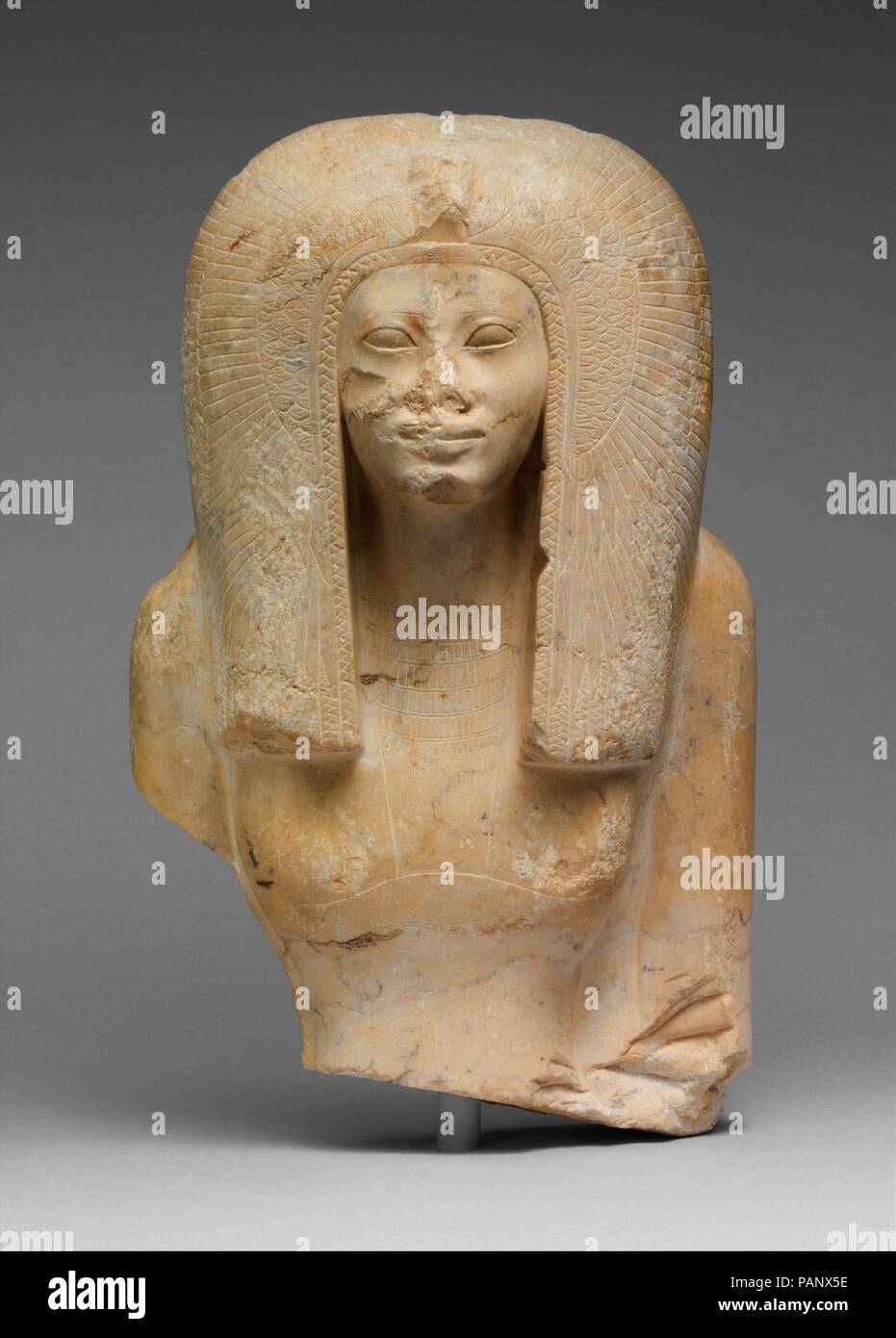 Upper Part of the Seated Statue of a Queen. Dimensions: H. 28 cm (11 in.); W. 17.8 cm (7 in.); D. 10 cm (3 15/16 in.). Dynasty: Late Dynasty 17-Early Dynasty 18. Date: ca. 1580-1550 B.C.. This image of a queen wearing the vulture headdress over a voluminous tripartite wig was split off its backslab in antiquity, most probably by somebody who wanted to make use of this conveniently shaped piece of stone for other purposes. It is conceivable that a king (her father, son, or husband) was originally represented seated beside her. The sculpture has been identified tentatively as Queen Ahmes Nefert Stock Photohttps://www.alamy.com/image-license-details/?v=1https://www.alamy.com/upper-part-of-the-seated-statue-of-a-queen-dimensions-h-28-cm-11-in-w-178-cm-7-in-d-10-cm-3-1516-in-dynasty-late-dynasty-17-early-dynasty-18-date-ca-1580-1550-bc-this-image-of-a-queen-wearing-the-vulture-headdress-over-a-voluminous-tripartite-wig-was-split-off-its-backslab-in-antiquity-most-probably-by-somebody-who-wanted-to-make-use-of-this-conveniently-shaped-piece-of-stone-for-other-purposes-it-is-conceivable-that-a-king-her-father-son-or-husband-was-originally-represented-seated-beside-her-the-sculpture-has-been-identified-tentatively-as-queen-ahmes-nefert-image213152506.html
Upper Part of the Seated Statue of a Queen. Dimensions: H. 28 cm (11 in.); W. 17.8 cm (7 in.); D. 10 cm (3 15/16 in.). Dynasty: Late Dynasty 17-Early Dynasty 18. Date: ca. 1580-1550 B.C.. This image of a queen wearing the vulture headdress over a voluminous tripartite wig was split off its backslab in antiquity, most probably by somebody who wanted to make use of this conveniently shaped piece of stone for other purposes. It is conceivable that a king (her father, son, or husband) was originally represented seated beside her. The sculpture has been identified tentatively as Queen Ahmes Nefert Stock Photohttps://www.alamy.com/image-license-details/?v=1https://www.alamy.com/upper-part-of-the-seated-statue-of-a-queen-dimensions-h-28-cm-11-in-w-178-cm-7-in-d-10-cm-3-1516-in-dynasty-late-dynasty-17-early-dynasty-18-date-ca-1580-1550-bc-this-image-of-a-queen-wearing-the-vulture-headdress-over-a-voluminous-tripartite-wig-was-split-off-its-backslab-in-antiquity-most-probably-by-somebody-who-wanted-to-make-use-of-this-conveniently-shaped-piece-of-stone-for-other-purposes-it-is-conceivable-that-a-king-her-father-son-or-husband-was-originally-represented-seated-beside-her-the-sculpture-has-been-identified-tentatively-as-queen-ahmes-nefert-image213152506.htmlRMPANX5E–Upper Part of the Seated Statue of a Queen. Dimensions: H. 28 cm (11 in.); W. 17.8 cm (7 in.); D. 10 cm (3 15/16 in.). Dynasty: Late Dynasty 17-Early Dynasty 18. Date: ca. 1580-1550 B.C.. This image of a queen wearing the vulture headdress over a voluminous tripartite wig was split off its backslab in antiquity, most probably by somebody who wanted to make use of this conveniently shaped piece of stone for other purposes. It is conceivable that a king (her father, son, or husband) was originally represented seated beside her. The sculpture has been identified tentatively as Queen Ahmes Nefert
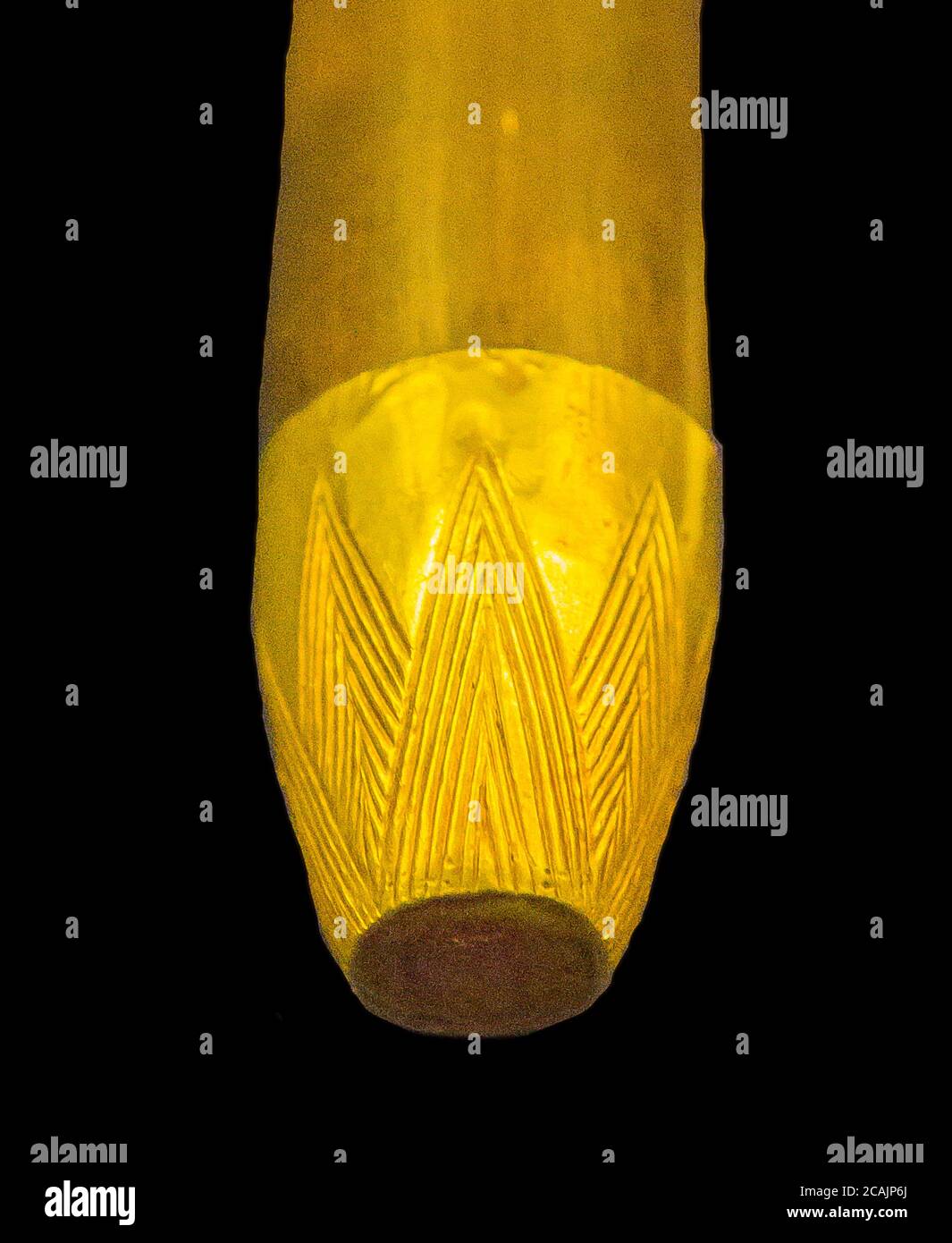 Cairo, Egyptian Museum, a mirror found in the tomb of the queen Ahhotep, Dra Abu el Naga, Luxor. The bottom of the handle has the shape of a papyrus. Stock Photohttps://www.alamy.com/image-license-details/?v=1https://www.alamy.com/cairo-egyptian-museum-a-mirror-found-in-the-tomb-of-the-queen-ahhotep-dra-abu-el-naga-luxor-the-bottom-of-the-handle-has-the-shape-of-a-papyrus-image367976858.html
Cairo, Egyptian Museum, a mirror found in the tomb of the queen Ahhotep, Dra Abu el Naga, Luxor. The bottom of the handle has the shape of a papyrus. Stock Photohttps://www.alamy.com/image-license-details/?v=1https://www.alamy.com/cairo-egyptian-museum-a-mirror-found-in-the-tomb-of-the-queen-ahhotep-dra-abu-el-naga-luxor-the-bottom-of-the-handle-has-the-shape-of-a-papyrus-image367976858.htmlRM2CAJP6J–Cairo, Egyptian Museum, a mirror found in the tomb of the queen Ahhotep, Dra Abu el Naga, Luxor. The bottom of the handle has the shape of a papyrus.
 30 Ahmès Nofrétari Stock Photohttps://www.alamy.com/image-license-details/?v=1https://www.alamy.com/30-ahms-nofrtari-image214213969.html
30 Ahmès Nofrétari Stock Photohttps://www.alamy.com/image-license-details/?v=1https://www.alamy.com/30-ahms-nofrtari-image214213969.htmlRMPCE82W–30 Ahmès Nofrétari
 Limestone bust of Queen Ahmes-Merytamun. 18th Dynasty (approx. 1550 BC). From the Temple of Karnak in Thebes. Stock Photohttps://www.alamy.com/image-license-details/?v=1https://www.alamy.com/stock-photo-limestone-bust-of-queen-ahmes-merytamun-18th-dynasty-approx-1550-bc-57305605.html
Limestone bust of Queen Ahmes-Merytamun. 18th Dynasty (approx. 1550 BC). From the Temple of Karnak in Thebes. Stock Photohttps://www.alamy.com/image-license-details/?v=1https://www.alamy.com/stock-photo-limestone-bust-of-queen-ahmes-merytamun-18th-dynasty-approx-1550-bc-57305605.htmlRMD96DTN–Limestone bust of Queen Ahmes-Merytamun. 18th Dynasty (approx. 1550 BC). From the Temple of Karnak in Thebes.
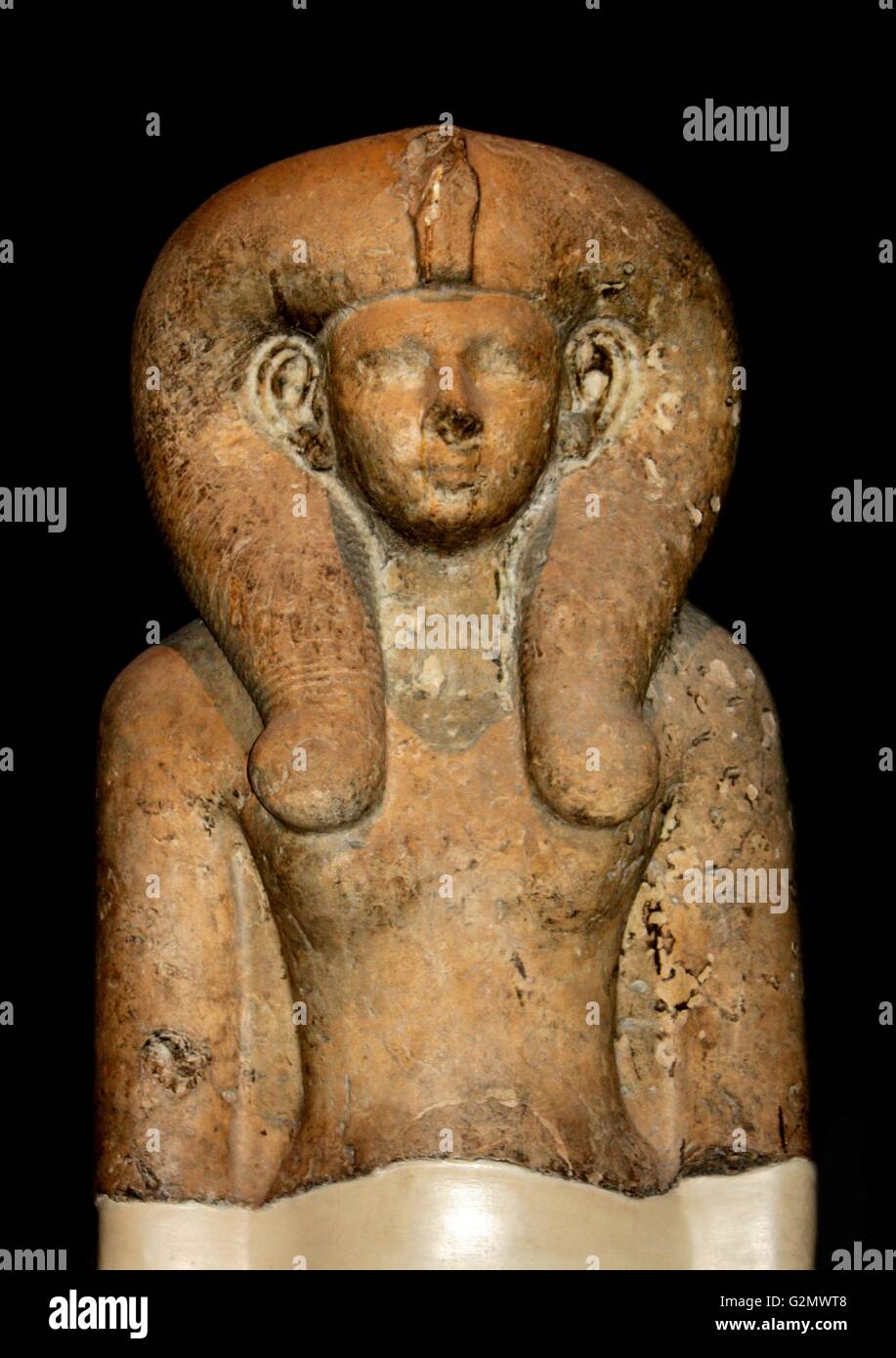 Limestone bust of Queen Ahmes-Merytamun, 18th Dynasty, about 1550, from Thebes temple of Karnack. This is the upper half of a statue inscribed for Ahmes-Merytamun, wife of Amenhotep I. Stock Photohttps://www.alamy.com/image-license-details/?v=1https://www.alamy.com/stock-photo-limestone-bust-of-queen-ahmes-merytamun-18th-dynasty-about-1550-from-104950840.html
Limestone bust of Queen Ahmes-Merytamun, 18th Dynasty, about 1550, from Thebes temple of Karnack. This is the upper half of a statue inscribed for Ahmes-Merytamun, wife of Amenhotep I. Stock Photohttps://www.alamy.com/image-license-details/?v=1https://www.alamy.com/stock-photo-limestone-bust-of-queen-ahmes-merytamun-18th-dynasty-about-1550-from-104950840.htmlRMG2MWT8–Limestone bust of Queen Ahmes-Merytamun, 18th Dynasty, about 1550, from Thebes temple of Karnack. This is the upper half of a statue inscribed for Ahmes-Merytamun, wife of Amenhotep I.
 Egyptian Wood Sculpture of the deified queen Ahmes Nefertari, 1279-1213 BC 19th Dynasty, found Deir el Medina, acacia. Louvre Museum inv N 470. Th Stock Photohttps://www.alamy.com/image-license-details/?v=1https://www.alamy.com/egyptian-wood-sculpture-of-the-deified-queen-ahmes-nefertari-1279-1213-bc-19th-dynasty-found-deir-el-medina-acacia-louvre-museum-inv-n-470-th-image450558006.html
Egyptian Wood Sculpture of the deified queen Ahmes Nefertari, 1279-1213 BC 19th Dynasty, found Deir el Medina, acacia. Louvre Museum inv N 470. Th Stock Photohttps://www.alamy.com/image-license-details/?v=1https://www.alamy.com/egyptian-wood-sculpture-of-the-deified-queen-ahmes-nefertari-1279-1213-bc-19th-dynasty-found-deir-el-medina-acacia-louvre-museum-inv-n-470-th-image450558006.htmlRF2H50K9A–Egyptian Wood Sculpture of the deified queen Ahmes Nefertari, 1279-1213 BC 19th Dynasty, found Deir el Medina, acacia. Louvre Museum inv N 470. Th
![Infographic about the origin of mathematics, with the Egyptians. [Adobe InDesign (.indd); 4960x3188]. Stock Photo Infographic about the origin of mathematics, with the Egyptians. [Adobe InDesign (.indd); 4960x3188]. Stock Photo](https://c8.alamy.com/comp/2NEC3X0/infographic-about-the-origin-of-mathematics-with-the-egyptians-adobe-indesign-indd-4960x3188-2NEC3X0.jpg) Infographic about the origin of mathematics, with the Egyptians. [Adobe InDesign (.indd); 4960x3188]. Stock Photohttps://www.alamy.com/image-license-details/?v=1https://www.alamy.com/infographic-about-the-origin-of-mathematics-with-the-egyptians-adobe-indesign-indd-4960x3188-image525182728.html
Infographic about the origin of mathematics, with the Egyptians. [Adobe InDesign (.indd); 4960x3188]. Stock Photohttps://www.alamy.com/image-license-details/?v=1https://www.alamy.com/infographic-about-the-origin-of-mathematics-with-the-egyptians-adobe-indesign-indd-4960x3188-image525182728.htmlRM2NEC3X0–Infographic about the origin of mathematics, with the Egyptians. [Adobe InDesign (.indd); 4960x3188].
 Egypt, Cairo, Egyptian Museum, a mirror found in the tomb of the queen Ahhotep, the mother of Ahmosis, Dra Abu el Naga, Luxor. Stock Photohttps://www.alamy.com/image-license-details/?v=1https://www.alamy.com/egypt-cairo-egyptian-museum-a-mirror-found-in-the-tomb-of-the-queen-ahhotep-the-mother-of-ahmosis-dra-abu-el-naga-luxor-image368049501.html
Egypt, Cairo, Egyptian Museum, a mirror found in the tomb of the queen Ahhotep, the mother of Ahmosis, Dra Abu el Naga, Luxor. Stock Photohttps://www.alamy.com/image-license-details/?v=1https://www.alamy.com/egypt-cairo-egyptian-museum-a-mirror-found-in-the-tomb-of-the-queen-ahhotep-the-mother-of-ahmosis-dra-abu-el-naga-luxor-image368049501.htmlRM2CAP2W1–Egypt, Cairo, Egyptian Museum, a mirror found in the tomb of the queen Ahhotep, the mother of Ahmosis, Dra Abu el Naga, Luxor.
 30 Ahmes nefertari2-2 Stock Photohttps://www.alamy.com/image-license-details/?v=1https://www.alamy.com/30-ahmes-nefertari2-2-image214213979.html
30 Ahmes nefertari2-2 Stock Photohttps://www.alamy.com/image-license-details/?v=1https://www.alamy.com/30-ahmes-nefertari2-2-image214213979.htmlRMPCE837–30 Ahmes nefertari2-2
 Egyptian Wood Sculpture of the deified queen Ahmes Nefertari, 1279-1213 BC 19th Dynasty, found Deir el Medina, acacia. Louvre Museum inv N 470. Th Stock Photohttps://www.alamy.com/image-license-details/?v=1https://www.alamy.com/egyptian-wood-sculpture-of-the-deified-queen-ahmes-nefertari-1279-1213-bc-19th-dynasty-found-deir-el-medina-acacia-louvre-museum-inv-n-470-th-image450567212.html
Egyptian Wood Sculpture of the deified queen Ahmes Nefertari, 1279-1213 BC 19th Dynasty, found Deir el Medina, acacia. Louvre Museum inv N 470. Th Stock Photohttps://www.alamy.com/image-license-details/?v=1https://www.alamy.com/egyptian-wood-sculpture-of-the-deified-queen-ahmes-nefertari-1279-1213-bc-19th-dynasty-found-deir-el-medina-acacia-louvre-museum-inv-n-470-th-image450567212.htmlRF2H51324–Egyptian Wood Sculpture of the deified queen Ahmes Nefertari, 1279-1213 BC 19th Dynasty, found Deir el Medina, acacia. Louvre Museum inv N 470. Th
 Queen Nefertari being led by Isis. Artist: Charles K. Wilkinson. Dimensions: facsimile: h. 70 cm (27 9/16 in); w. 46 cm (18 1/8 in) scale approximately 1:3 framed: h. 73.7 cm (29 in); w. 49.5 cm (19 1/2 in). Dynasty: Dynasty 19. Reign: reign of Ramesses II. Date: ca. 1279-1213 B.C.. Nefertari was the main wife of pharaoh Ramses II and her tomb with its vivid wall paintings is one of the most beautiful tombs in Egypt. This watercolor copy depicts the queen (left) being led by the goddess Isis (right). Noteworthy is that Nefertari's husband, Ramses II, is absent in these scenes, indicating th Stock Photohttps://www.alamy.com/image-license-details/?v=1https://www.alamy.com/queen-nefertari-being-led-by-isis-artist-charles-k-wilkinson-dimensions-facsimile-h-70-cm-27-916-in-w-46-cm-18-18-in-scale-approximately-13-framed-h-737-cm-29-in-w-495-cm-19-12-in-dynasty-dynasty-19-reign-reign-of-ramesses-ii-date-ca-1279-1213-bc-nefertari-was-the-main-wife-of-pharaoh-ramses-ii-and-her-tomb-with-its-vivid-wall-paintings-is-one-of-the-most-beautiful-tombs-in-egypt-this-watercolor-copy-depicts-the-queen-left-being-led-by-the-goddess-isis-right-noteworthy-is-that-nefertaris-husband-ramses-ii-is-absent-in-these-scenes-indicating-th-image225383646.html
Queen Nefertari being led by Isis. Artist: Charles K. Wilkinson. Dimensions: facsimile: h. 70 cm (27 9/16 in); w. 46 cm (18 1/8 in) scale approximately 1:3 framed: h. 73.7 cm (29 in); w. 49.5 cm (19 1/2 in). Dynasty: Dynasty 19. Reign: reign of Ramesses II. Date: ca. 1279-1213 B.C.. Nefertari was the main wife of pharaoh Ramses II and her tomb with its vivid wall paintings is one of the most beautiful tombs in Egypt. This watercolor copy depicts the queen (left) being led by the goddess Isis (right). Noteworthy is that Nefertari's husband, Ramses II, is absent in these scenes, indicating th Stock Photohttps://www.alamy.com/image-license-details/?v=1https://www.alamy.com/queen-nefertari-being-led-by-isis-artist-charles-k-wilkinson-dimensions-facsimile-h-70-cm-27-916-in-w-46-cm-18-18-in-scale-approximately-13-framed-h-737-cm-29-in-w-495-cm-19-12-in-dynasty-dynasty-19-reign-reign-of-ramesses-ii-date-ca-1279-1213-bc-nefertari-was-the-main-wife-of-pharaoh-ramses-ii-and-her-tomb-with-its-vivid-wall-paintings-is-one-of-the-most-beautiful-tombs-in-egypt-this-watercolor-copy-depicts-the-queen-left-being-led-by-the-goddess-isis-right-noteworthy-is-that-nefertaris-husband-ramses-ii-is-absent-in-these-scenes-indicating-th-image225383646.htmlRMR2K33X–Queen Nefertari being led by Isis. Artist: Charles K. Wilkinson. Dimensions: facsimile: h. 70 cm (27 9/16 in); w. 46 cm (18 1/8 in) scale approximately 1:3 framed: h. 73.7 cm (29 in); w. 49.5 cm (19 1/2 in). Dynasty: Dynasty 19. Reign: reign of Ramesses II. Date: ca. 1279-1213 B.C.. Nefertari was the main wife of pharaoh Ramses II and her tomb with its vivid wall paintings is one of the most beautiful tombs in Egypt. This watercolor copy depicts the queen (left) being led by the goddess Isis (right). Noteworthy is that Nefertari's husband, Ramses II, is absent in these scenes, indicating th
 Egypt, Cairo, Egyptian Museum, thick golden bracelets found in the tomb of the queen Ahhotep, the mother of Ahmosis, Dra Abu el Naga, Luxor. Stock Photohttps://www.alamy.com/image-license-details/?v=1https://www.alamy.com/egypt-cairo-egyptian-museum-thick-golden-bracelets-found-in-the-tomb-of-the-queen-ahhotep-the-mother-of-ahmosis-dra-abu-el-naga-luxor-image342444266.html
Egypt, Cairo, Egyptian Museum, thick golden bracelets found in the tomb of the queen Ahhotep, the mother of Ahmosis, Dra Abu el Naga, Luxor. Stock Photohttps://www.alamy.com/image-license-details/?v=1https://www.alamy.com/egypt-cairo-egyptian-museum-thick-golden-bracelets-found-in-the-tomb-of-the-queen-ahhotep-the-mother-of-ahmosis-dra-abu-el-naga-luxor-image342444266.htmlRM2AW3K4A–Egypt, Cairo, Egyptian Museum, thick golden bracelets found in the tomb of the queen Ahhotep, the mother of Ahmosis, Dra Abu el Naga, Luxor.
 422 Momia tutmosis I o Ahmes sapair Stock Photohttps://www.alamy.com/image-license-details/?v=1https://www.alamy.com/422-momia-tutmosis-i-o-ahmes-sapair-image213951879.html
422 Momia tutmosis I o Ahmes sapair Stock Photohttps://www.alamy.com/image-license-details/?v=1https://www.alamy.com/422-momia-tutmosis-i-o-ahmes-sapair-image213951879.htmlRMPC29PF–422 Momia tutmosis I o Ahmes sapair
 Egyptian Wood Sculpture of the deified queen Ahmes Nefertari, 1279-1213 BC 19th Dynasty, found Deir el Medina, acacia. Louvre Museum inv N 470. Th Stock Photohttps://www.alamy.com/image-license-details/?v=1https://www.alamy.com/egyptian-wood-sculpture-of-the-deified-queen-ahmes-nefertari-1279-1213-bc-19th-dynasty-found-deir-el-medina-acacia-louvre-museum-inv-n-470-th-image450508799.html
Egyptian Wood Sculpture of the deified queen Ahmes Nefertari, 1279-1213 BC 19th Dynasty, found Deir el Medina, acacia. Louvre Museum inv N 470. Th Stock Photohttps://www.alamy.com/image-license-details/?v=1https://www.alamy.com/egyptian-wood-sculpture-of-the-deified-queen-ahmes-nefertari-1279-1213-bc-19th-dynasty-found-deir-el-medina-acacia-louvre-museum-inv-n-470-th-image450508799.htmlRF2H4XCFY–Egyptian Wood Sculpture of the deified queen Ahmes Nefertari, 1279-1213 BC 19th Dynasty, found Deir el Medina, acacia. Louvre Museum inv N 470. Th
 Egypt, Cairo, Egyptian Museum, gold bracelet found in the tomb of the queen Ahhotep, the mother of Ahmosis, Dra Abu el Naga, Luxor. Stock Photohttps://www.alamy.com/image-license-details/?v=1https://www.alamy.com/egypt-cairo-egyptian-museum-gold-bracelet-found-in-the-tomb-of-the-queen-ahhotep-the-mother-of-ahmosis-dra-abu-el-naga-luxor-image342428062.html
Egypt, Cairo, Egyptian Museum, gold bracelet found in the tomb of the queen Ahhotep, the mother of Ahmosis, Dra Abu el Naga, Luxor. Stock Photohttps://www.alamy.com/image-license-details/?v=1https://www.alamy.com/egypt-cairo-egyptian-museum-gold-bracelet-found-in-the-tomb-of-the-queen-ahhotep-the-mother-of-ahmosis-dra-abu-el-naga-luxor-image342428062.htmlRM2AW2XDJ–Egypt, Cairo, Egyptian Museum, gold bracelet found in the tomb of the queen Ahhotep, the mother of Ahmosis, Dra Abu el Naga, Luxor.
 . Reina Ahmés Nefertary, gran esposa real del faraón Amosis I.louvre.fr N 470 . circa 1500BC.. This file is lacking author information. 30 Ahmes nefertari2-2 Stock Photohttps://www.alamy.com/image-license-details/?v=1https://www.alamy.com/reina-ahms-nefertary-gran-esposa-real-del-faran-amosis-ilouvrefr-n-470-circa-1500bc-this-file-is-lacking-author-information-30-ahmes-nefertari2-2-image187625748.html
. Reina Ahmés Nefertary, gran esposa real del faraón Amosis I.louvre.fr N 470 . circa 1500BC.. This file is lacking author information. 30 Ahmes nefertari2-2 Stock Photohttps://www.alamy.com/image-license-details/?v=1https://www.alamy.com/reina-ahms-nefertary-gran-esposa-real-del-faran-amosis-ilouvrefr-n-470-circa-1500bc-this-file-is-lacking-author-information-30-ahmes-nefertari2-2-image187625748.htmlRMMW72FG–. Reina Ahmés Nefertary, gran esposa real del faraón Amosis I.louvre.fr N 470 . circa 1500BC.. This file is lacking author information. 30 Ahmes nefertari2-2
 Egyptian Wood Sculpture of the deified queen Ahmes Nefertari, 1279-1213 BC 19th Dynasty, found Deir el Medina, acacia. Louvre Museum inv N 470. Th Stock Photohttps://www.alamy.com/image-license-details/?v=1https://www.alamy.com/egyptian-wood-sculpture-of-the-deified-queen-ahmes-nefertari-1279-1213-bc-19th-dynasty-found-deir-el-medina-acacia-louvre-museum-inv-n-470-th-image450448816.html
Egyptian Wood Sculpture of the deified queen Ahmes Nefertari, 1279-1213 BC 19th Dynasty, found Deir el Medina, acacia. Louvre Museum inv N 470. Th Stock Photohttps://www.alamy.com/image-license-details/?v=1https://www.alamy.com/egyptian-wood-sculpture-of-the-deified-queen-ahmes-nefertari-1279-1213-bc-19th-dynasty-found-deir-el-medina-acacia-louvre-museum-inv-n-470-th-image450448816.htmlRF2H4RM1M–Egyptian Wood Sculpture of the deified queen Ahmes Nefertari, 1279-1213 BC 19th Dynasty, found Deir el Medina, acacia. Louvre Museum inv N 470. Th
 Egypt, Cairo, Egyptian Museum, a gold necklace found on the coffin of Queen Ahhotep, in her tomb, Dra Abu el Naga, Luxor. Stock Photohttps://www.alamy.com/image-license-details/?v=1https://www.alamy.com/egypt-cairo-egyptian-museum-a-gold-necklace-found-on-the-coffin-of-queen-ahhotep-in-her-tomb-dra-abu-el-naga-luxor-image621476667.html
Egypt, Cairo, Egyptian Museum, a gold necklace found on the coffin of Queen Ahhotep, in her tomb, Dra Abu el Naga, Luxor. Stock Photohttps://www.alamy.com/image-license-details/?v=1https://www.alamy.com/egypt-cairo-egyptian-museum-a-gold-necklace-found-on-the-coffin-of-queen-ahhotep-in-her-tomb-dra-abu-el-naga-luxor-image621476667.htmlRM2Y32KR7–Egypt, Cairo, Egyptian Museum, a gold necklace found on the coffin of Queen Ahhotep, in her tomb, Dra Abu el Naga, Luxor.
 . Reina Ahmés Nefertary, gran esposa real del faraón Amosis I.louvre.fr N 470 . circa 1500BC.. This file is lacking author information. 30 Ahmes nefertari2-2 Stock Photohttps://www.alamy.com/image-license-details/?v=1https://www.alamy.com/reina-ahms-nefertary-gran-esposa-real-del-faran-amosis-ilouvrefr-n-470-circa-1500bc-this-file-is-lacking-author-information-30-ahmes-nefertari2-2-image184881003.html
. Reina Ahmés Nefertary, gran esposa real del faraón Amosis I.louvre.fr N 470 . circa 1500BC.. This file is lacking author information. 30 Ahmes nefertari2-2 Stock Photohttps://www.alamy.com/image-license-details/?v=1https://www.alamy.com/reina-ahms-nefertary-gran-esposa-real-del-faran-amosis-ilouvrefr-n-470-circa-1500bc-this-file-is-lacking-author-information-30-ahmes-nefertari2-2-image184881003.htmlRMMMP1GY–. Reina Ahmés Nefertary, gran esposa real del faraón Amosis I.louvre.fr N 470 . circa 1500BC.. This file is lacking author information. 30 Ahmes nefertari2-2
 Egyptian Wood Sculpture of the deified queen Ahmes Nefertari, 1279-1213 BC 19th Dynasty, found Deir el Medina, acacia. Louvre Museum inv N 470. Th Stock Photohttps://www.alamy.com/image-license-details/?v=1https://www.alamy.com/egyptian-wood-sculpture-of-the-deified-queen-ahmes-nefertari-1279-1213-bc-19th-dynasty-found-deir-el-medina-acacia-louvre-museum-inv-n-470-th-image450455185.html
Egyptian Wood Sculpture of the deified queen Ahmes Nefertari, 1279-1213 BC 19th Dynasty, found Deir el Medina, acacia. Louvre Museum inv N 470. Th Stock Photohttps://www.alamy.com/image-license-details/?v=1https://www.alamy.com/egyptian-wood-sculpture-of-the-deified-queen-ahmes-nefertari-1279-1213-bc-19th-dynasty-found-deir-el-medina-acacia-louvre-museum-inv-n-470-th-image450455185.htmlRF2H4T055–Egyptian Wood Sculpture of the deified queen Ahmes Nefertari, 1279-1213 BC 19th Dynasty, found Deir el Medina, acacia. Louvre Museum inv N 470. Th
 Cairo, Egyptian Museum, a mirror found in the tomb of the queen Ahhotep, Dra Abu el Naga, Luxor. The handle has the shape of a papyrus. Stock Photohttps://www.alamy.com/image-license-details/?v=1https://www.alamy.com/cairo-egyptian-museum-a-mirror-found-in-the-tomb-of-the-queen-ahhotep-dra-abu-el-naga-luxor-the-handle-has-the-shape-of-a-papyrus-image342428282.html
Cairo, Egyptian Museum, a mirror found in the tomb of the queen Ahhotep, Dra Abu el Naga, Luxor. The handle has the shape of a papyrus. Stock Photohttps://www.alamy.com/image-license-details/?v=1https://www.alamy.com/cairo-egyptian-museum-a-mirror-found-in-the-tomb-of-the-queen-ahhotep-dra-abu-el-naga-luxor-the-handle-has-the-shape-of-a-papyrus-image342428282.htmlRM2AW2XNE–Cairo, Egyptian Museum, a mirror found in the tomb of the queen Ahhotep, Dra Abu el Naga, Luxor. The handle has the shape of a papyrus.
 . Reina Ahmés Nefertary, gran esposa real del faraón Amosis I.louvre.fr N 470 . circa 1500BC.. This file is lacking author information. 30 Ahmes nefertari2-2 Stock Photohttps://www.alamy.com/image-license-details/?v=1https://www.alamy.com/reina-ahms-nefertary-gran-esposa-real-del-faran-amosis-ilouvrefr-n-470-circa-1500bc-this-file-is-lacking-author-information-30-ahmes-nefertari2-2-image188156241.html
. Reina Ahmés Nefertary, gran esposa real del faraón Amosis I.louvre.fr N 470 . circa 1500BC.. This file is lacking author information. 30 Ahmes nefertari2-2 Stock Photohttps://www.alamy.com/image-license-details/?v=1https://www.alamy.com/reina-ahms-nefertary-gran-esposa-real-del-faran-amosis-ilouvrefr-n-470-circa-1500bc-this-file-is-lacking-author-information-30-ahmes-nefertari2-2-image188156241.htmlRMMX375N–. Reina Ahmés Nefertary, gran esposa real del faraón Amosis I.louvre.fr N 470 . circa 1500BC.. This file is lacking author information. 30 Ahmes nefertari2-2
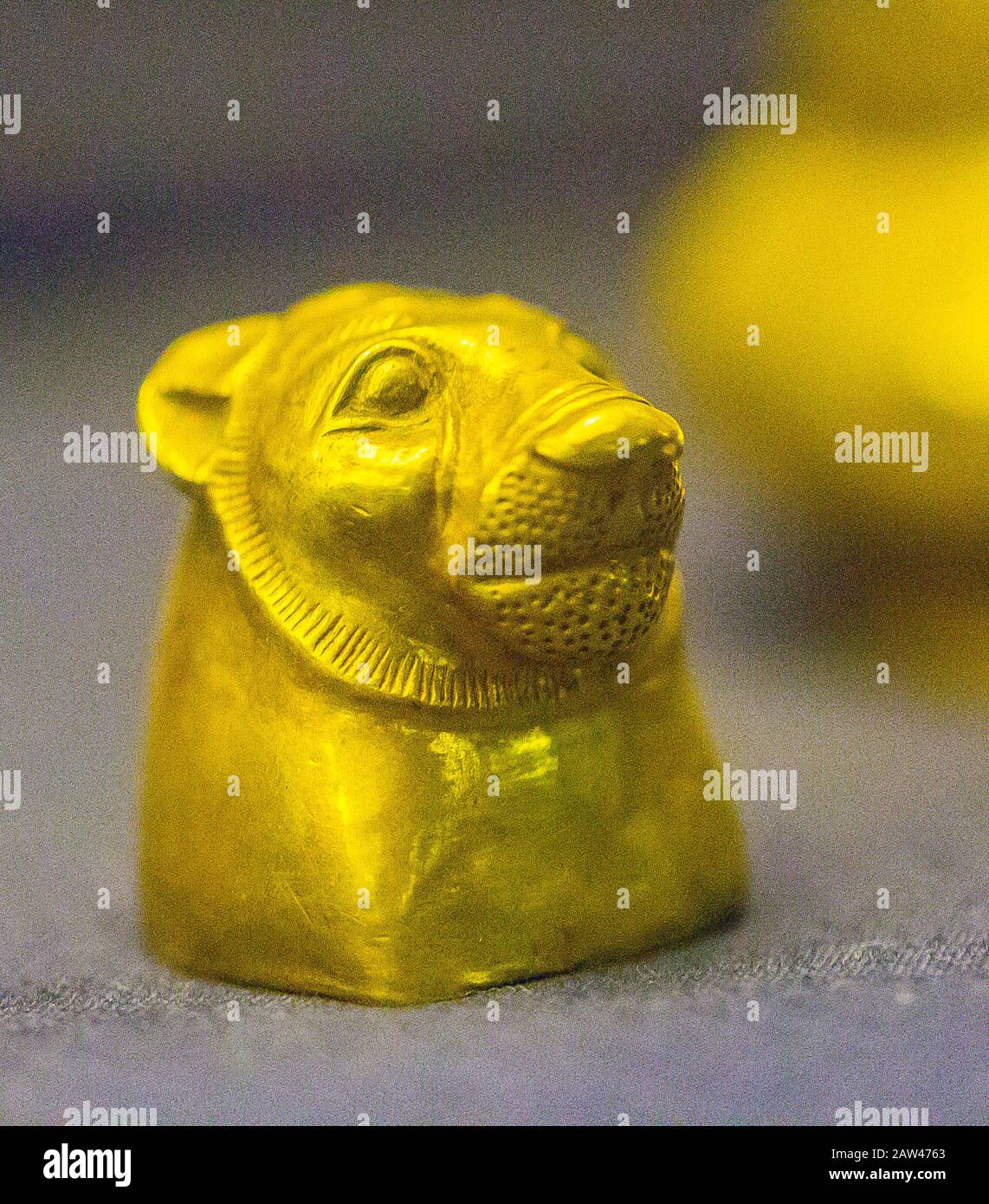 Egypt, Cairo, Egyptian Museum, head of a lion found in the tomb of the queen Ahhotep, the mother of Ahmosis, Dra Abu el Naga, Luxor. Gold. Stock Photohttps://www.alamy.com/image-license-details/?v=1https://www.alamy.com/egypt-cairo-egyptian-museum-head-of-a-lion-found-in-the-tomb-of-the-queen-ahhotep-the-mother-of-ahmosis-dra-abu-el-naga-luxor-gold-image342456859.html
Egypt, Cairo, Egyptian Museum, head of a lion found in the tomb of the queen Ahhotep, the mother of Ahmosis, Dra Abu el Naga, Luxor. Gold. Stock Photohttps://www.alamy.com/image-license-details/?v=1https://www.alamy.com/egypt-cairo-egyptian-museum-head-of-a-lion-found-in-the-tomb-of-the-queen-ahhotep-the-mother-of-ahmosis-dra-abu-el-naga-luxor-gold-image342456859.htmlRM2AW4763–Egypt, Cairo, Egyptian Museum, head of a lion found in the tomb of the queen Ahhotep, the mother of Ahmosis, Dra Abu el Naga, Luxor. Gold.
 . Reina Ahmés Nefertary, gran esposa real del faraón Amosis I.louvre.fr N 470 . circa 1500BC.. This file is lacking author information. 26 Ahmes nefertari2-2 Stock Photohttps://www.alamy.com/image-license-details/?v=1https://www.alamy.com/reina-ahms-nefertary-gran-esposa-real-del-faran-amosis-ilouvrefr-n-470-circa-1500bc-this-file-is-lacking-author-information-26-ahmes-nefertari2-2-image188902714.html
. Reina Ahmés Nefertary, gran esposa real del faraón Amosis I.louvre.fr N 470 . circa 1500BC.. This file is lacking author information. 26 Ahmes nefertari2-2 Stock Photohttps://www.alamy.com/image-license-details/?v=1https://www.alamy.com/reina-ahms-nefertary-gran-esposa-real-del-faran-amosis-ilouvrefr-n-470-circa-1500bc-this-file-is-lacking-author-information-26-ahmes-nefertari2-2-image188902714.htmlRMMY979E–. Reina Ahmés Nefertary, gran esposa real del faraón Amosis I.louvre.fr N 470 . circa 1500BC.. This file is lacking author information. 26 Ahmes nefertari2-2
 Egypt, Cairo, Egyptian Museum, a mirror found in the tomb of the queen Ahhotep, Dra Abu el Naga, Luxor. The handle has the shape of a papyrus. Stock Photohttps://www.alamy.com/image-license-details/?v=1https://www.alamy.com/egypt-cairo-egyptian-museum-a-mirror-found-in-the-tomb-of-the-queen-ahhotep-dra-abu-el-naga-luxor-the-handle-has-the-shape-of-a-papyrus-image367869706.html
Egypt, Cairo, Egyptian Museum, a mirror found in the tomb of the queen Ahhotep, Dra Abu el Naga, Luxor. The handle has the shape of a papyrus. Stock Photohttps://www.alamy.com/image-license-details/?v=1https://www.alamy.com/egypt-cairo-egyptian-museum-a-mirror-found-in-the-tomb-of-the-queen-ahhotep-dra-abu-el-naga-luxor-the-handle-has-the-shape-of-a-papyrus-image367869706.htmlRM2CADWFP–Egypt, Cairo, Egyptian Museum, a mirror found in the tomb of the queen Ahhotep, Dra Abu el Naga, Luxor. The handle has the shape of a papyrus.
 . Español: Momia JE 26217, tradicionalmente atribuida a Tutmés I, probablemente la del príncipe Ahmés Sa-Pa-Ir. 1909. Catálogo Museo del Cairo 422 Momia tutmosis I o Ahmes sapair Stock Photohttps://www.alamy.com/image-license-details/?v=1https://www.alamy.com/espaol-momia-je-26217-tradicionalmente-atribuida-a-tutms-i-probablemente-la-del-prncipe-ahms-sa-pa-ir-1909-catlogo-museo-del-cairo-422-momia-tutmosis-i-o-ahmes-sapair-image187398835.html
. Español: Momia JE 26217, tradicionalmente atribuida a Tutmés I, probablemente la del príncipe Ahmés Sa-Pa-Ir. 1909. Catálogo Museo del Cairo 422 Momia tutmosis I o Ahmes sapair Stock Photohttps://www.alamy.com/image-license-details/?v=1https://www.alamy.com/espaol-momia-je-26217-tradicionalmente-atribuida-a-tutms-i-probablemente-la-del-prncipe-ahms-sa-pa-ir-1909-catlogo-museo-del-cairo-422-momia-tutmosis-i-o-ahmes-sapair-image187398835.htmlRMMTTN3F–. Español: Momia JE 26217, tradicionalmente atribuida a Tutmés I, probablemente la del príncipe Ahmés Sa-Pa-Ir. 1909. Catálogo Museo del Cairo 422 Momia tutmosis I o Ahmes sapair
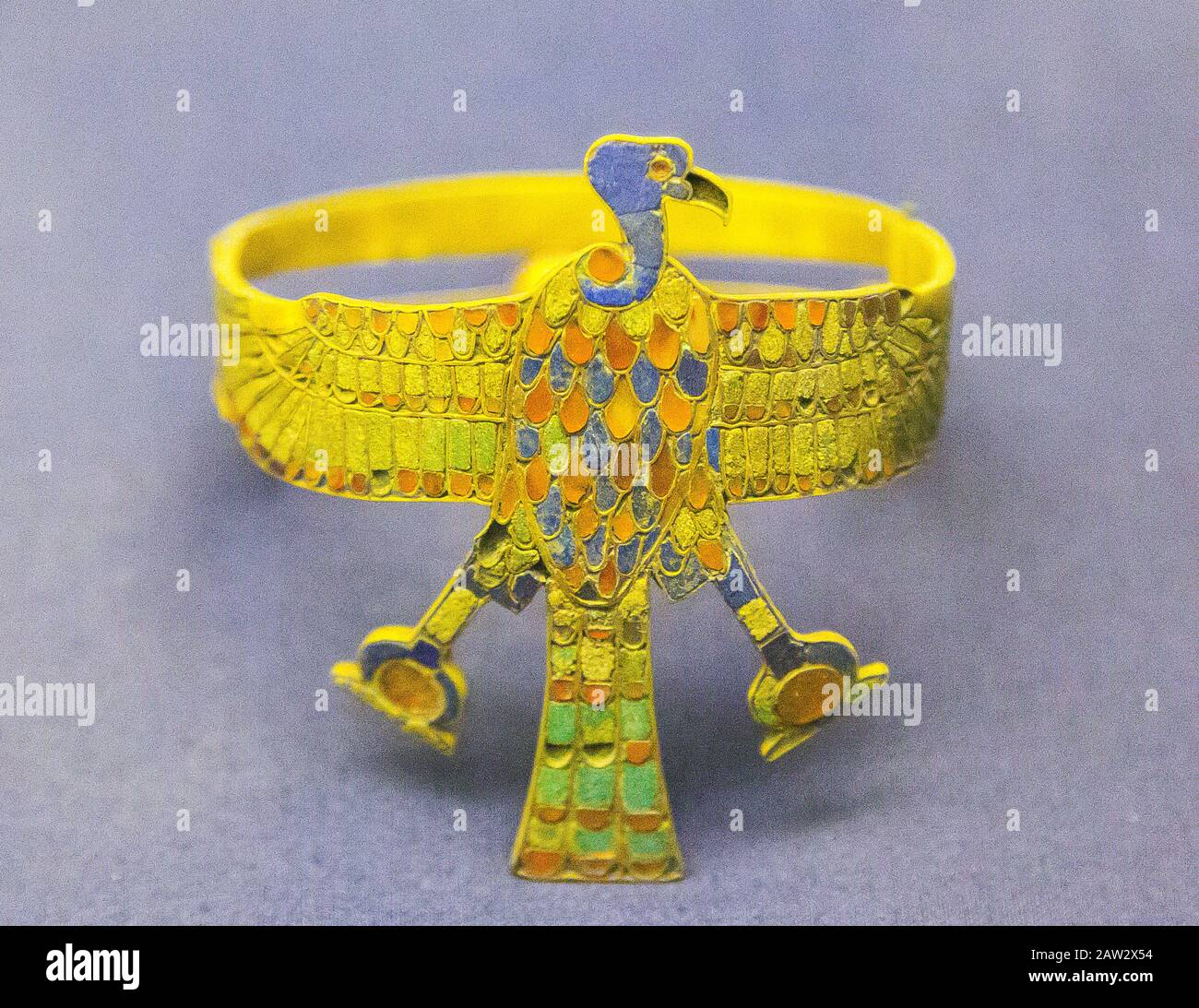 Egypt, Cairo, Egyptian Museum, armlet in the shape of a vulture, found in the tomb of the queen Ahhotep, the mother of Ahmosis, Dra Abu el Naga, Luxor. Stock Photohttps://www.alamy.com/image-license-details/?v=1https://www.alamy.com/egypt-cairo-egyptian-museum-armlet-in-the-shape-of-a-vulture-found-in-the-tomb-of-the-queen-ahhotep-the-mother-of-ahmosis-dra-abu-el-naga-luxor-image342427824.html
Egypt, Cairo, Egyptian Museum, armlet in the shape of a vulture, found in the tomb of the queen Ahhotep, the mother of Ahmosis, Dra Abu el Naga, Luxor. Stock Photohttps://www.alamy.com/image-license-details/?v=1https://www.alamy.com/egypt-cairo-egyptian-museum-armlet-in-the-shape-of-a-vulture-found-in-the-tomb-of-the-queen-ahhotep-the-mother-of-ahmosis-dra-abu-el-naga-luxor-image342427824.htmlRM2AW2X54–Egypt, Cairo, Egyptian Museum, armlet in the shape of a vulture, found in the tomb of the queen Ahhotep, the mother of Ahmosis, Dra Abu el Naga, Luxor.
 . Español: Momia JE 26217, tradicionalmente atribuida a Tutmés I, probablemente la del príncipe Ahmés Sa-Pa-Ir. 1909. Catálogo Museo del Cairo 368 Momia tutmosis I o Ahmes sapair Stock Photohttps://www.alamy.com/image-license-details/?v=1https://www.alamy.com/espaol-momia-je-26217-tradicionalmente-atribuida-a-tutms-i-probablemente-la-del-prncipe-ahms-sa-pa-ir-1909-catlogo-museo-del-cairo-368-momia-tutmosis-i-o-ahmes-sapair-image189126874.html
. Español: Momia JE 26217, tradicionalmente atribuida a Tutmés I, probablemente la del príncipe Ahmés Sa-Pa-Ir. 1909. Catálogo Museo del Cairo 368 Momia tutmosis I o Ahmes sapair Stock Photohttps://www.alamy.com/image-license-details/?v=1https://www.alamy.com/espaol-momia-je-26217-tradicionalmente-atribuida-a-tutms-i-probablemente-la-del-prncipe-ahms-sa-pa-ir-1909-catlogo-museo-del-cairo-368-momia-tutmosis-i-o-ahmes-sapair-image189126874.htmlRMMYKD76–. Español: Momia JE 26217, tradicionalmente atribuida a Tutmés I, probablemente la del príncipe Ahmés Sa-Pa-Ir. 1909. Catálogo Museo del Cairo 368 Momia tutmosis I o Ahmes sapair
 Egypt, Cairo, Egyptian Museum, a mirror found in the tomb of the queen Ahhotep, the mother of Ahmosis, Dra Abu el Naga, Luxor. Stock Photohttps://www.alamy.com/image-license-details/?v=1https://www.alamy.com/egypt-cairo-egyptian-museum-a-mirror-found-in-the-tomb-of-the-queen-ahhotep-the-mother-of-ahmosis-dra-abu-el-naga-luxor-image342428489.html
Egypt, Cairo, Egyptian Museum, a mirror found in the tomb of the queen Ahhotep, the mother of Ahmosis, Dra Abu el Naga, Luxor. Stock Photohttps://www.alamy.com/image-license-details/?v=1https://www.alamy.com/egypt-cairo-egyptian-museum-a-mirror-found-in-the-tomb-of-the-queen-ahhotep-the-mother-of-ahmosis-dra-abu-el-naga-luxor-image342428489.htmlRM2AW2Y0W–Egypt, Cairo, Egyptian Museum, a mirror found in the tomb of the queen Ahhotep, the mother of Ahmosis, Dra Abu el Naga, Luxor.
 . Español: Momia JE 26217, tradicionalmente atribuida a Tutmés I, probablemente la del príncipe Ahmés Sa-Pa-Ir. 1909. Catálogo Museo del Cairo 422 Momia tutmosis I o Ahmes sapair Stock Photohttps://www.alamy.com/image-license-details/?v=1https://www.alamy.com/espaol-momia-je-26217-tradicionalmente-atribuida-a-tutms-i-probablemente-la-del-prncipe-ahms-sa-pa-ir-1909-catlogo-museo-del-cairo-422-momia-tutmosis-i-o-ahmes-sapair-image188389326.html
. Español: Momia JE 26217, tradicionalmente atribuida a Tutmés I, probablemente la del príncipe Ahmés Sa-Pa-Ir. 1909. Catálogo Museo del Cairo 422 Momia tutmosis I o Ahmes sapair Stock Photohttps://www.alamy.com/image-license-details/?v=1https://www.alamy.com/espaol-momia-je-26217-tradicionalmente-atribuida-a-tutms-i-probablemente-la-del-prncipe-ahms-sa-pa-ir-1909-catlogo-museo-del-cairo-422-momia-tutmosis-i-o-ahmes-sapair-image188389326.htmlRMMXDTE6–. Español: Momia JE 26217, tradicionalmente atribuida a Tutmés I, probablemente la del príncipe Ahmés Sa-Pa-Ir. 1909. Catálogo Museo del Cairo 422 Momia tutmosis I o Ahmes sapair
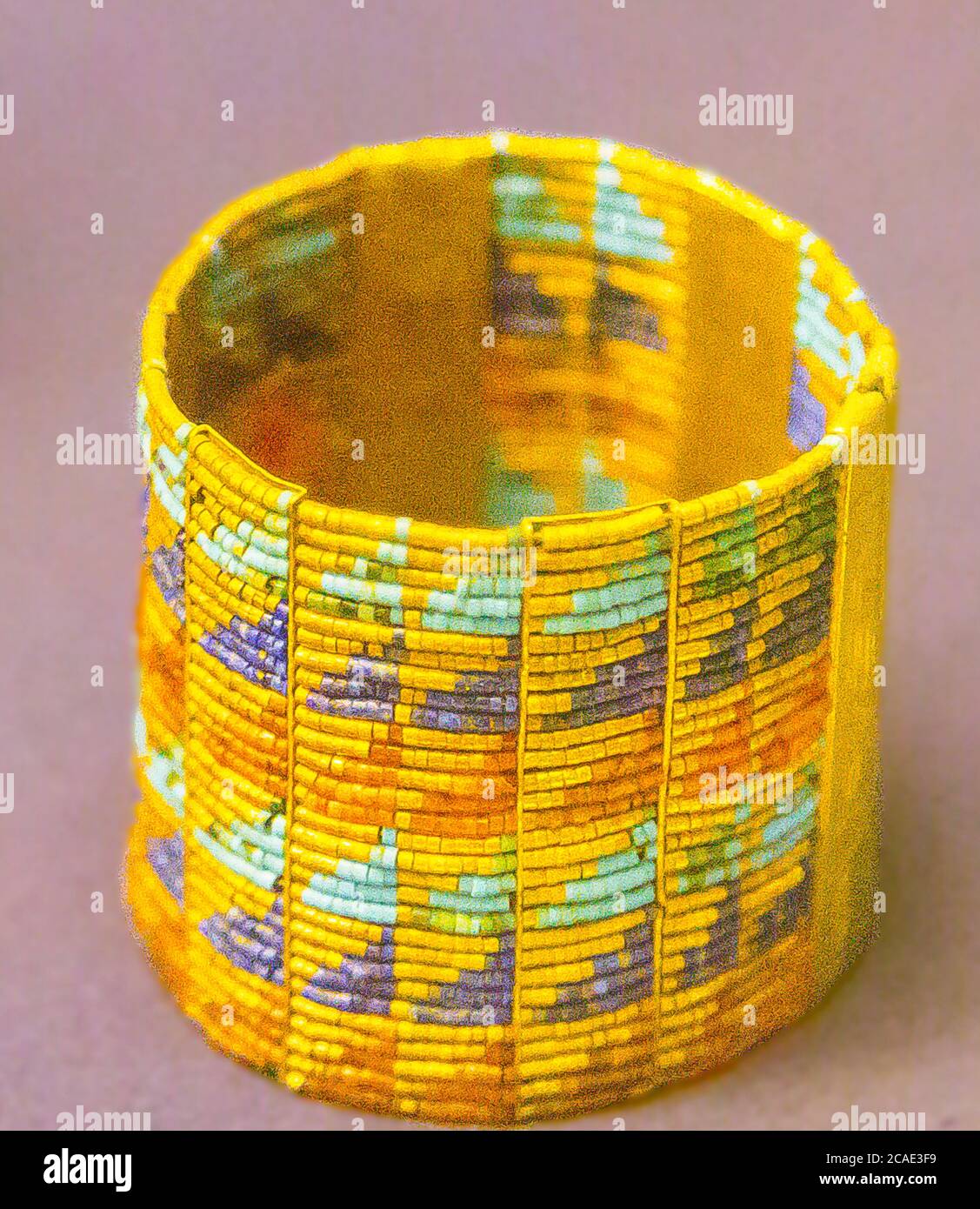 Egypt, Cairo, Egyptian Museum, bracelet found in the tomb of the queen Ahhotep, the mother of Ahmosis, Dra Abu el Naga, Luxor. Gold and beads. Stock Photohttps://www.alamy.com/image-license-details/?v=1https://www.alamy.com/egypt-cairo-egyptian-museum-bracelet-found-in-the-tomb-of-the-queen-ahhotep-the-mother-of-ahmosis-dra-abu-el-naga-luxor-gold-and-beads-image367874397.html
Egypt, Cairo, Egyptian Museum, bracelet found in the tomb of the queen Ahhotep, the mother of Ahmosis, Dra Abu el Naga, Luxor. Gold and beads. Stock Photohttps://www.alamy.com/image-license-details/?v=1https://www.alamy.com/egypt-cairo-egyptian-museum-bracelet-found-in-the-tomb-of-the-queen-ahhotep-the-mother-of-ahmosis-dra-abu-el-naga-luxor-gold-and-beads-image367874397.htmlRM2CAE3F9–Egypt, Cairo, Egyptian Museum, bracelet found in the tomb of the queen Ahhotep, the mother of Ahmosis, Dra Abu el Naga, Luxor. Gold and beads.
 Egypt, Luxor Museum (previously in Cairo Egyptian Museum), 3 flies found in the tomb of the queen Ahhotep, the mother of Ahmosis, Dra Abu el Naga. Stock Photohttps://www.alamy.com/image-license-details/?v=1https://www.alamy.com/egypt-luxor-museum-previously-in-cairo-egyptian-museum-3-flies-found-in-the-tomb-of-the-queen-ahhotep-the-mother-of-ahmosis-dra-abu-el-naga-image368107205.html
Egypt, Luxor Museum (previously in Cairo Egyptian Museum), 3 flies found in the tomb of the queen Ahhotep, the mother of Ahmosis, Dra Abu el Naga. Stock Photohttps://www.alamy.com/image-license-details/?v=1https://www.alamy.com/egypt-luxor-museum-previously-in-cairo-egyptian-museum-3-flies-found-in-the-tomb-of-the-queen-ahhotep-the-mother-of-ahmosis-dra-abu-el-naga-image368107205.htmlRM2CATMDW–Egypt, Luxor Museum (previously in Cairo Egyptian Museum), 3 flies found in the tomb of the queen Ahhotep, the mother of Ahmosis, Dra Abu el Naga.
 Egypt, Luxor Museum (previously in Cairo Egyptian Museum), a dagger and its sheath found in the burial of the queen Ahhotep, Dra Abu el Naga, Luxor. Stock Photohttps://www.alamy.com/image-license-details/?v=1https://www.alamy.com/egypt-luxor-museum-previously-in-cairo-egyptian-museum-a-dagger-and-its-sheath-found-in-the-burial-of-the-queen-ahhotep-dra-abu-el-naga-luxor-image621476646.html
Egypt, Luxor Museum (previously in Cairo Egyptian Museum), a dagger and its sheath found in the burial of the queen Ahhotep, Dra Abu el Naga, Luxor. Stock Photohttps://www.alamy.com/image-license-details/?v=1https://www.alamy.com/egypt-luxor-museum-previously-in-cairo-egyptian-museum-a-dagger-and-its-sheath-found-in-the-burial-of-the-queen-ahhotep-dra-abu-el-naga-luxor-image621476646.htmlRM2Y32KPE–Egypt, Luxor Museum (previously in Cairo Egyptian Museum), a dagger and its sheath found in the burial of the queen Ahhotep, Dra Abu el Naga, Luxor.
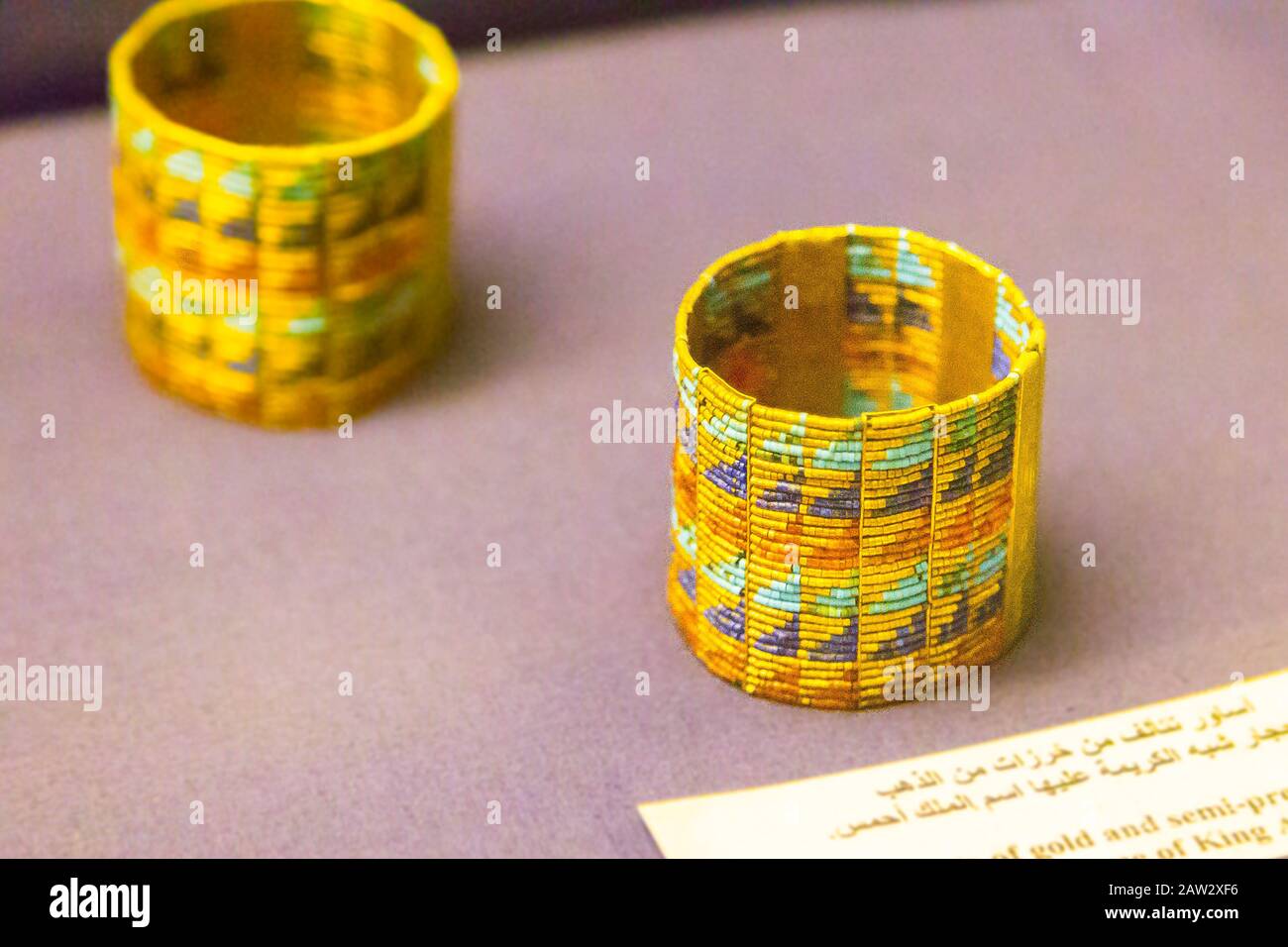 Egypt, Cairo, Egyptian Museum, bracelets found in the tomb of the queen Ahhotep, the mother of Ahmosis, Dra Abu el Naga, Luxor. Gold and beads. Stock Photohttps://www.alamy.com/image-license-details/?v=1https://www.alamy.com/egypt-cairo-egyptian-museum-bracelets-found-in-the-tomb-of-the-queen-ahhotep-the-mother-of-ahmosis-dra-abu-el-naga-luxor-gold-and-beads-image342428106.html
Egypt, Cairo, Egyptian Museum, bracelets found in the tomb of the queen Ahhotep, the mother of Ahmosis, Dra Abu el Naga, Luxor. Gold and beads. Stock Photohttps://www.alamy.com/image-license-details/?v=1https://www.alamy.com/egypt-cairo-egyptian-museum-bracelets-found-in-the-tomb-of-the-queen-ahhotep-the-mother-of-ahmosis-dra-abu-el-naga-luxor-gold-and-beads-image342428106.htmlRM2AW2XF6–Egypt, Cairo, Egyptian Museum, bracelets found in the tomb of the queen Ahhotep, the mother of Ahmosis, Dra Abu el Naga, Luxor. Gold and beads.
 Cairo, Egyptian Museum, gold armlet found in the tomb of the queen Ahhotep, Luxor. Cartouche of the king Ahmosis. Stock Photohttps://www.alamy.com/image-license-details/?v=1https://www.alamy.com/cairo-egyptian-museum-gold-armlet-found-in-the-tomb-of-the-queen-ahhotep-luxor-cartouche-of-the-king-ahmosis-image342430528.html
Cairo, Egyptian Museum, gold armlet found in the tomb of the queen Ahhotep, Luxor. Cartouche of the king Ahmosis. Stock Photohttps://www.alamy.com/image-license-details/?v=1https://www.alamy.com/cairo-egyptian-museum-gold-armlet-found-in-the-tomb-of-the-queen-ahhotep-luxor-cartouche-of-the-king-ahmosis-image342430528.htmlRM2AW31HM–Cairo, Egyptian Museum, gold armlet found in the tomb of the queen Ahhotep, Luxor. Cartouche of the king Ahmosis.
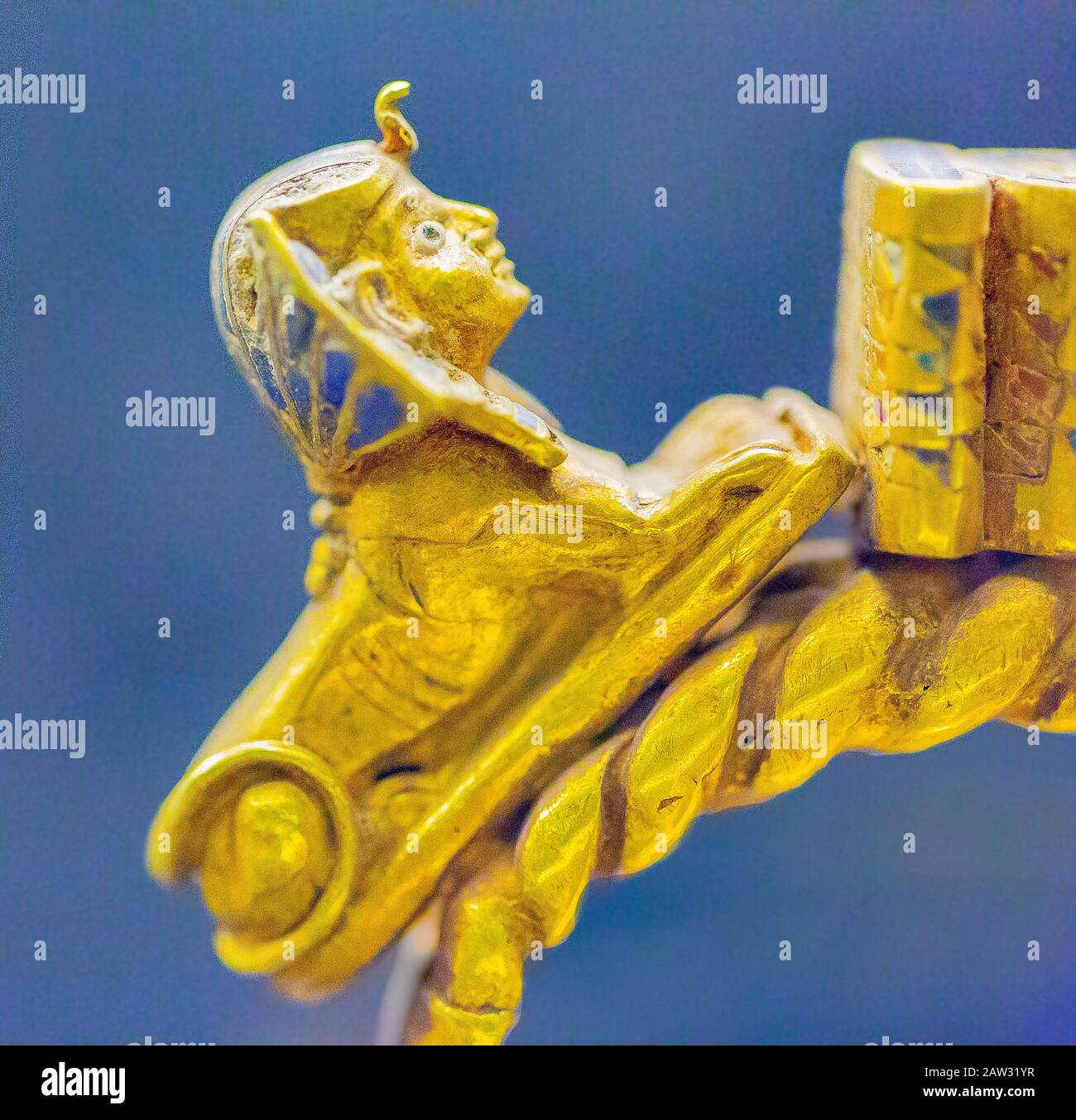 Cairo, Egyptian Museum, detail of a gold armlet found in the tomb of the queen Ahhotep, Luxor : Small sphinx and the cartouche of the king Ahmosis. Stock Photohttps://www.alamy.com/image-license-details/?v=1https://www.alamy.com/cairo-egyptian-museum-detail-of-a-gold-armlet-found-in-the-tomb-of-the-queen-ahhotep-luxor-small-sphinx-and-the-cartouche-of-the-king-ahmosis-image342430811.html
Cairo, Egyptian Museum, detail of a gold armlet found in the tomb of the queen Ahhotep, Luxor : Small sphinx and the cartouche of the king Ahmosis. Stock Photohttps://www.alamy.com/image-license-details/?v=1https://www.alamy.com/cairo-egyptian-museum-detail-of-a-gold-armlet-found-in-the-tomb-of-the-queen-ahhotep-luxor-small-sphinx-and-the-cartouche-of-the-king-ahmosis-image342430811.htmlRM2AW31YR–Cairo, Egyptian Museum, detail of a gold armlet found in the tomb of the queen Ahhotep, Luxor : Small sphinx and the cartouche of the king Ahmosis.